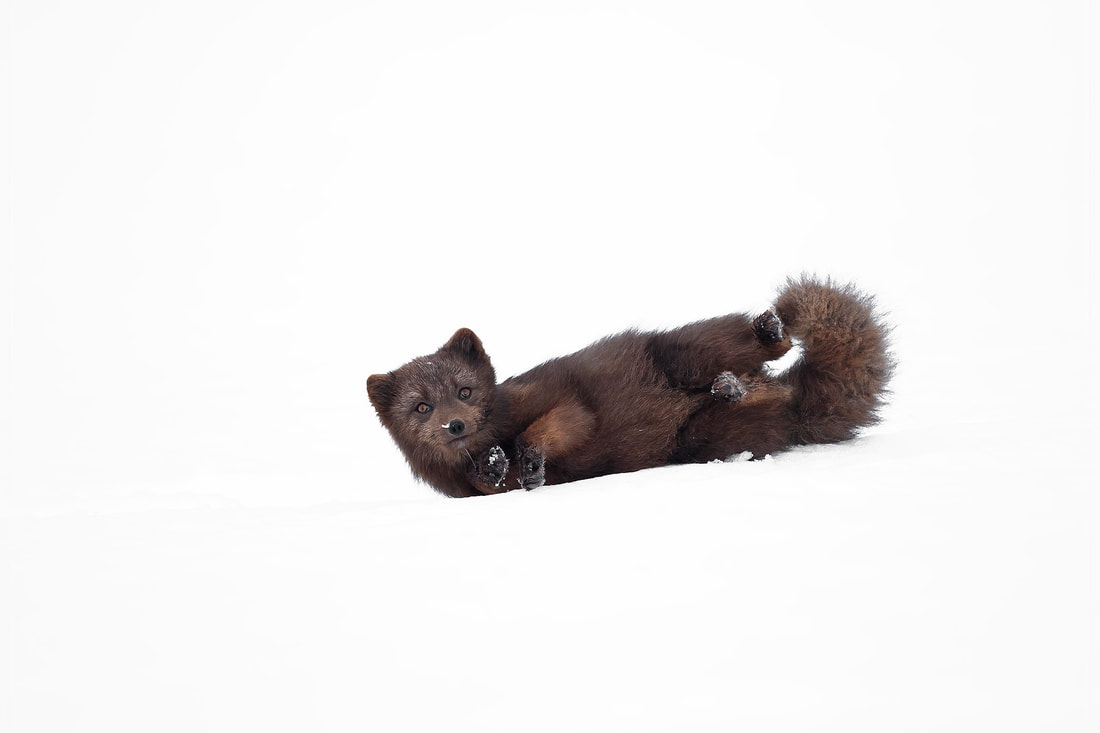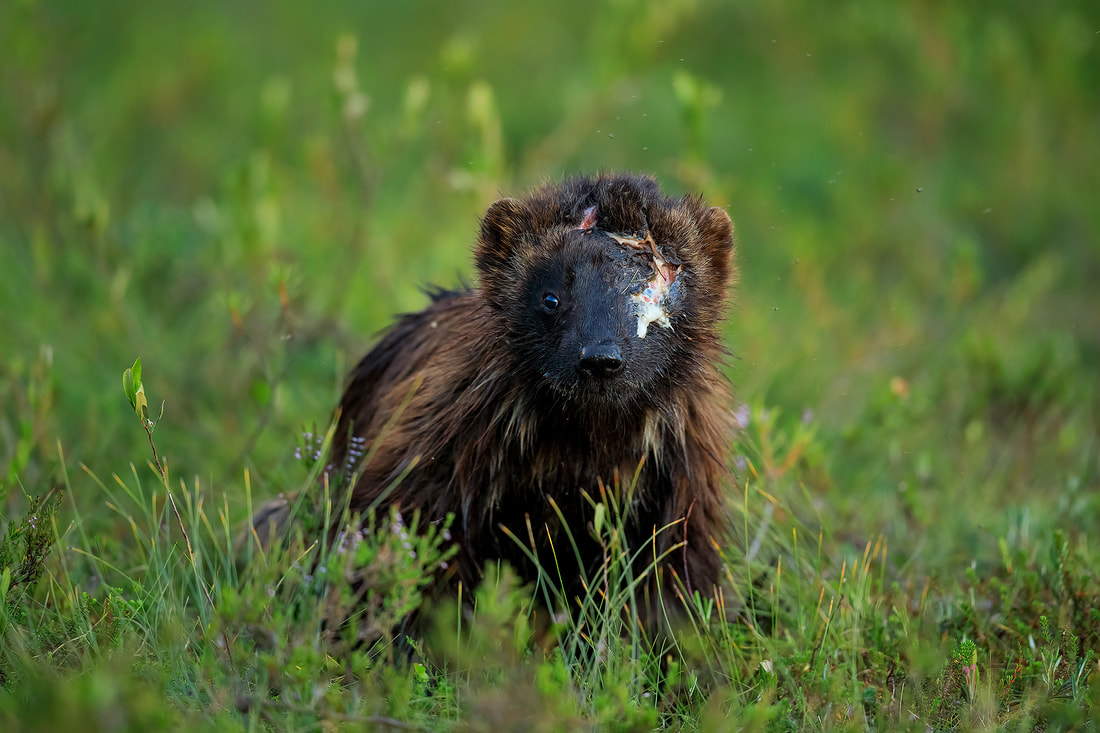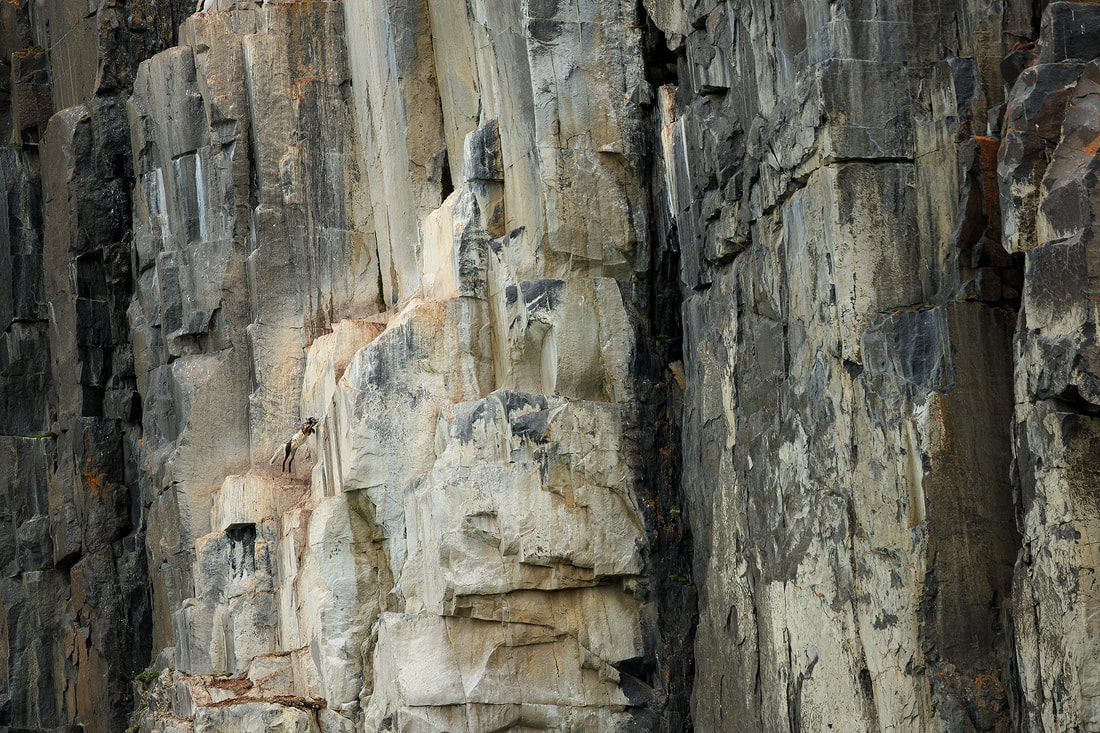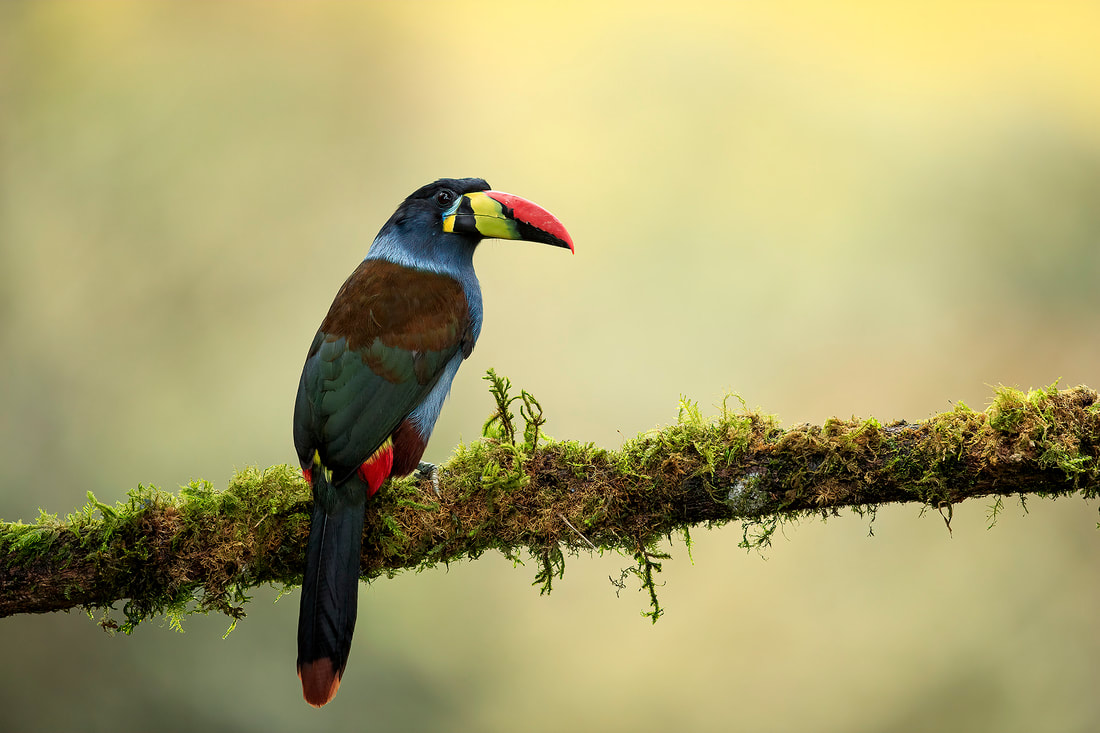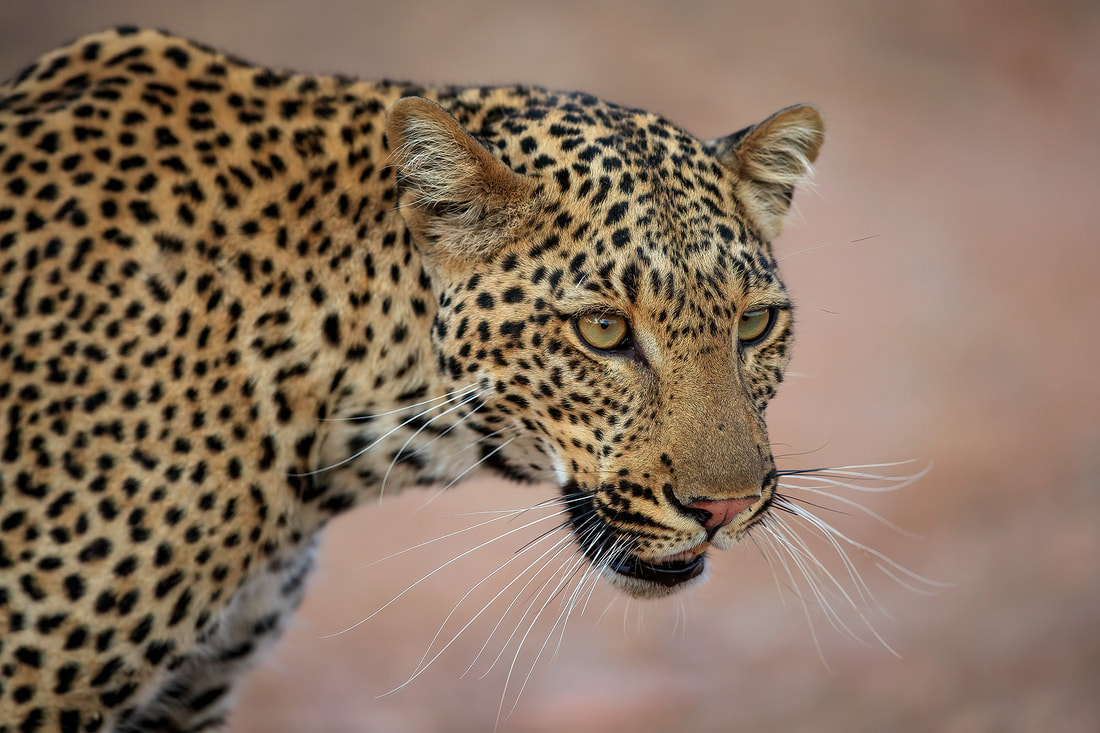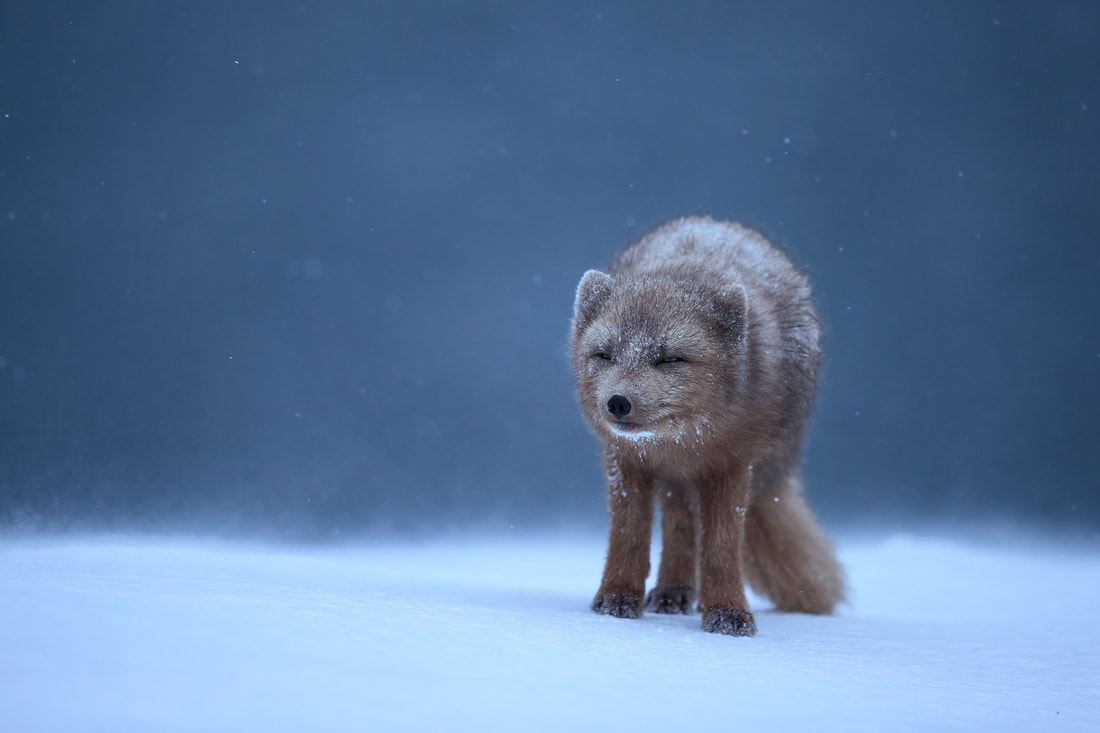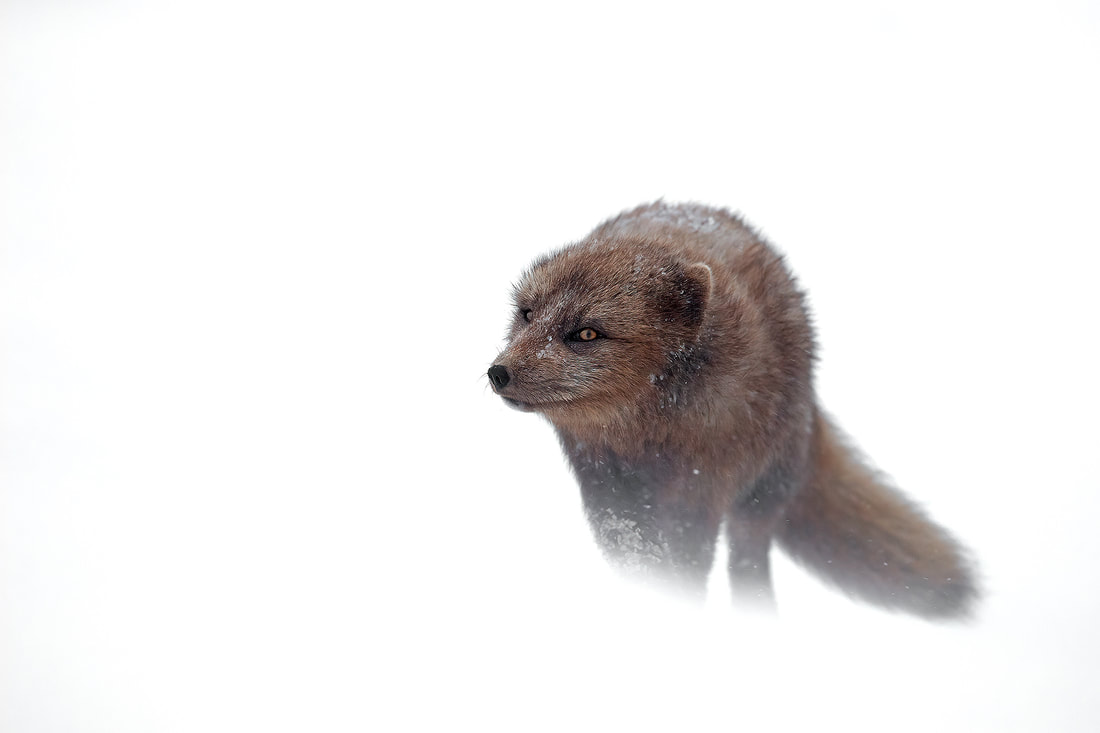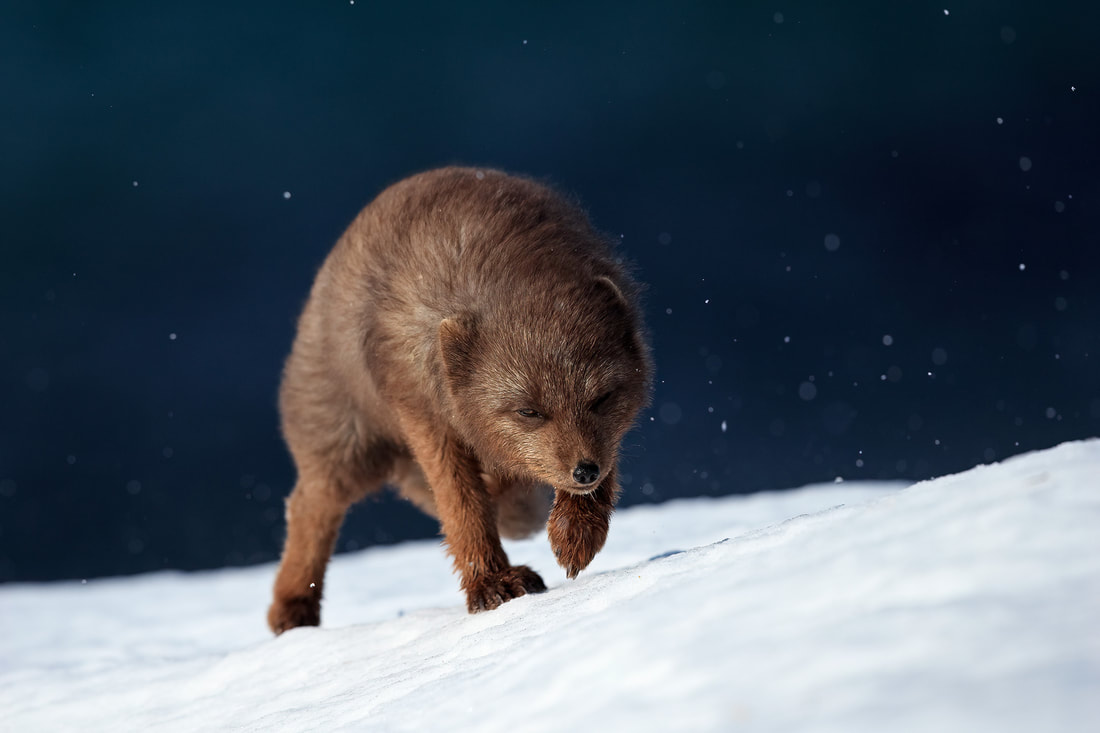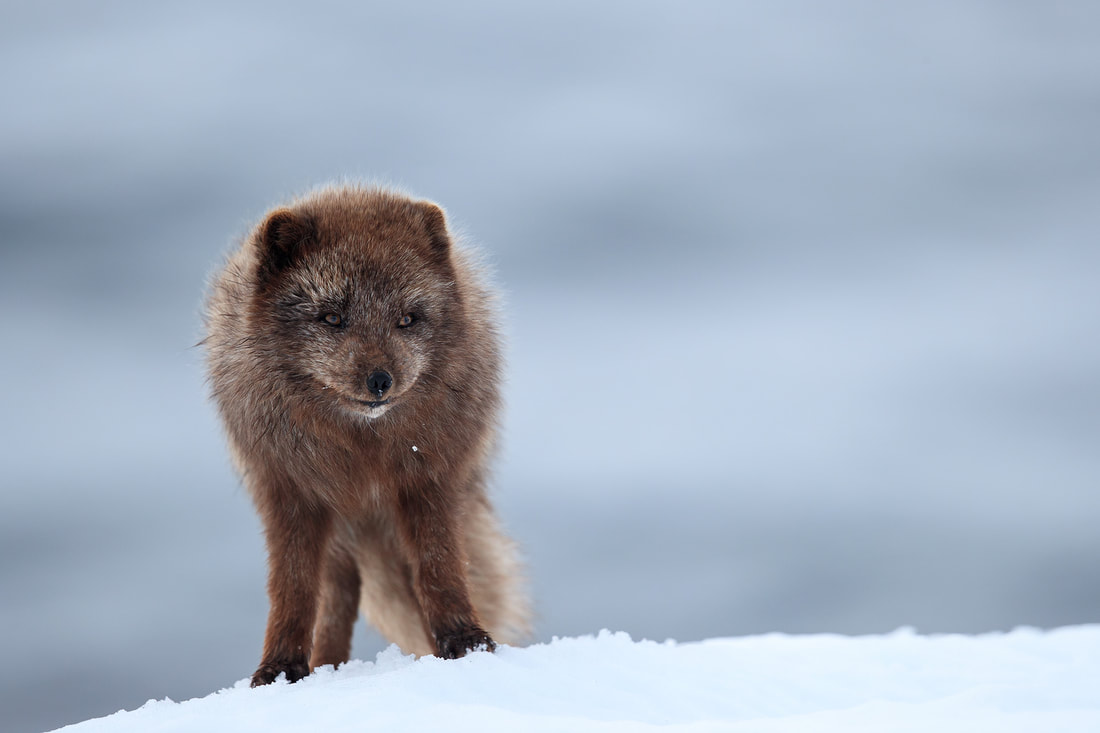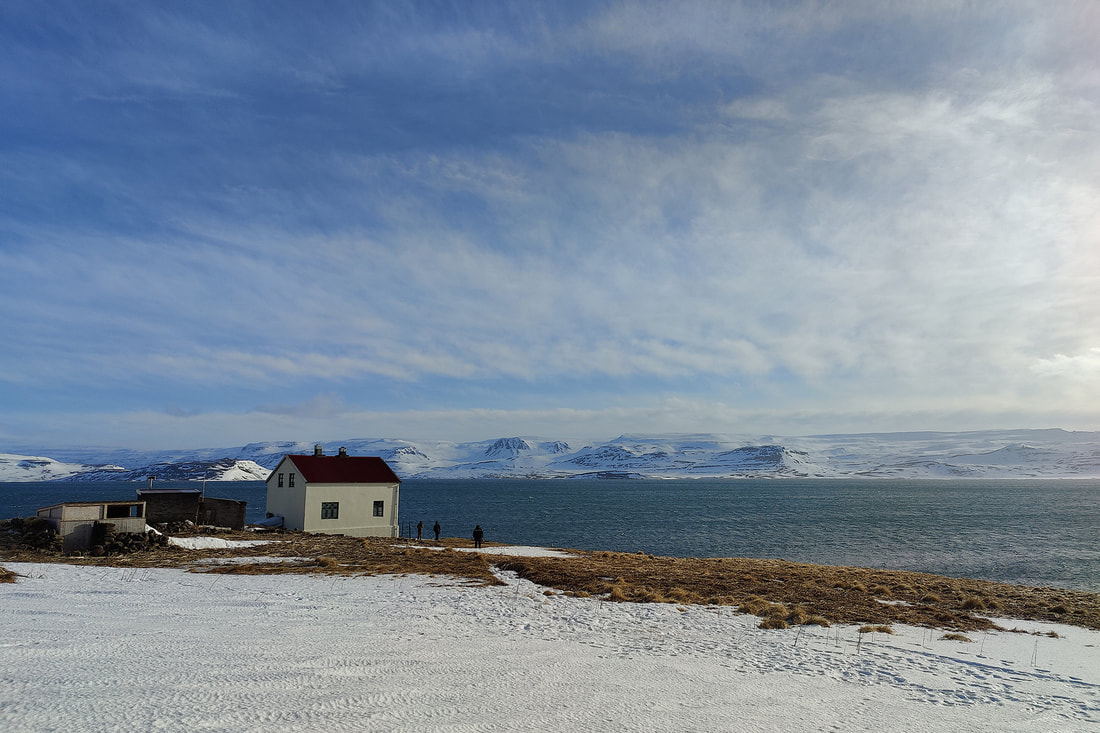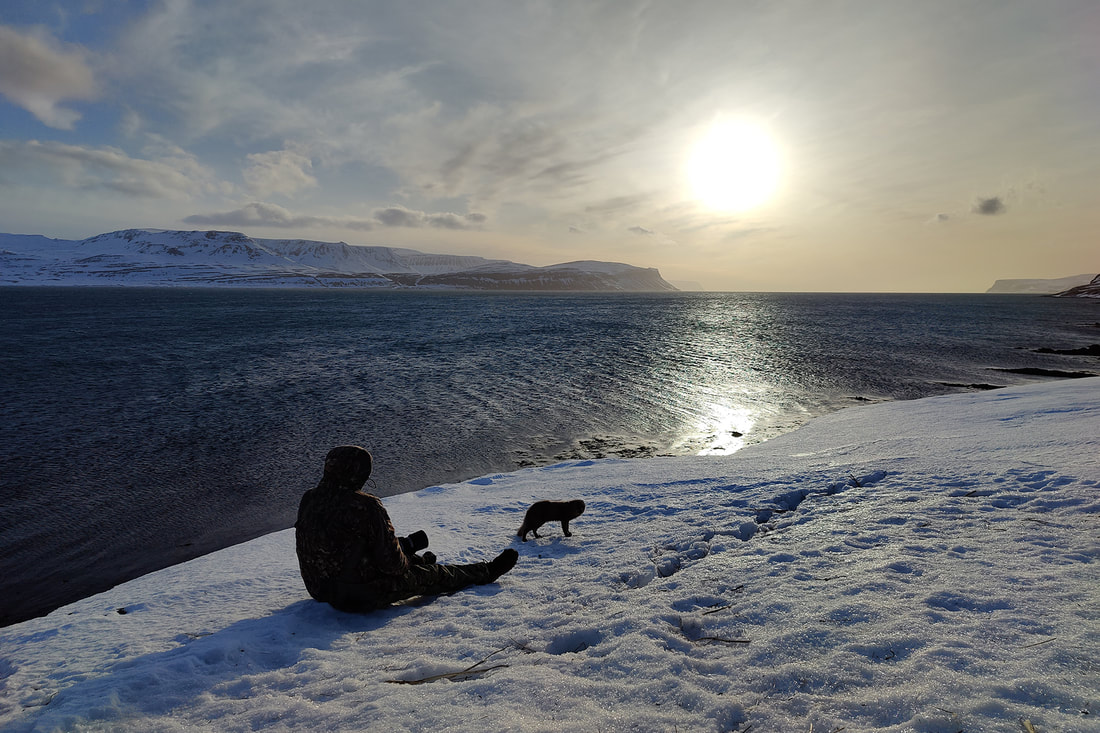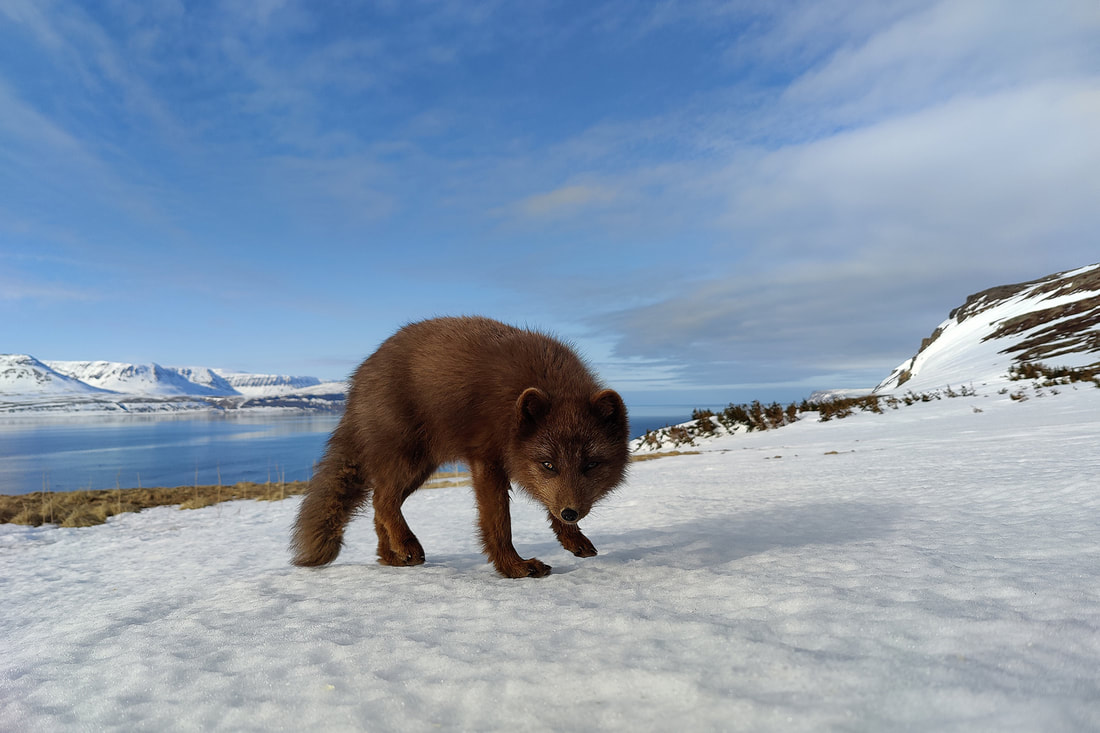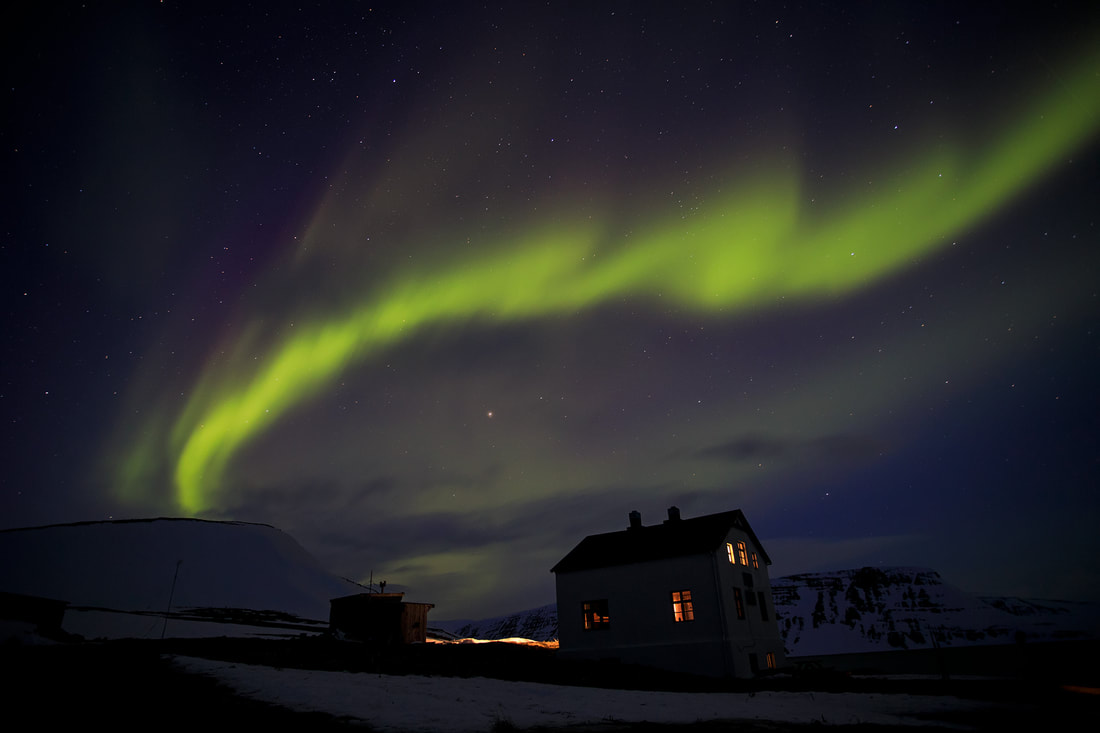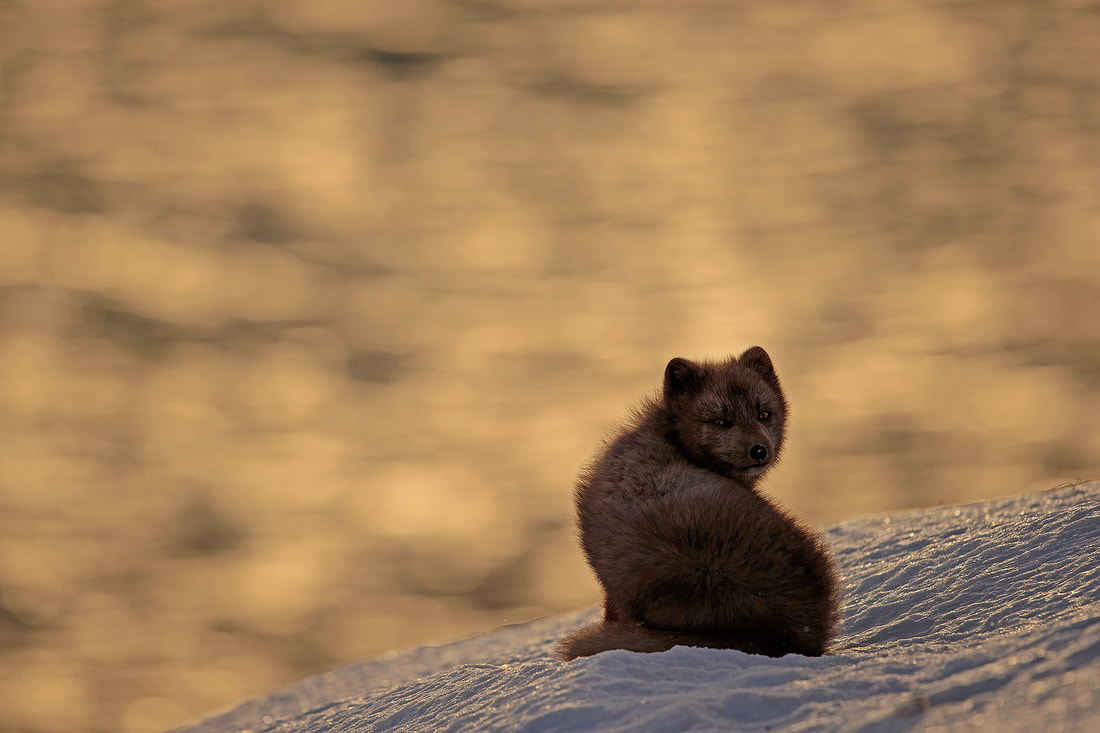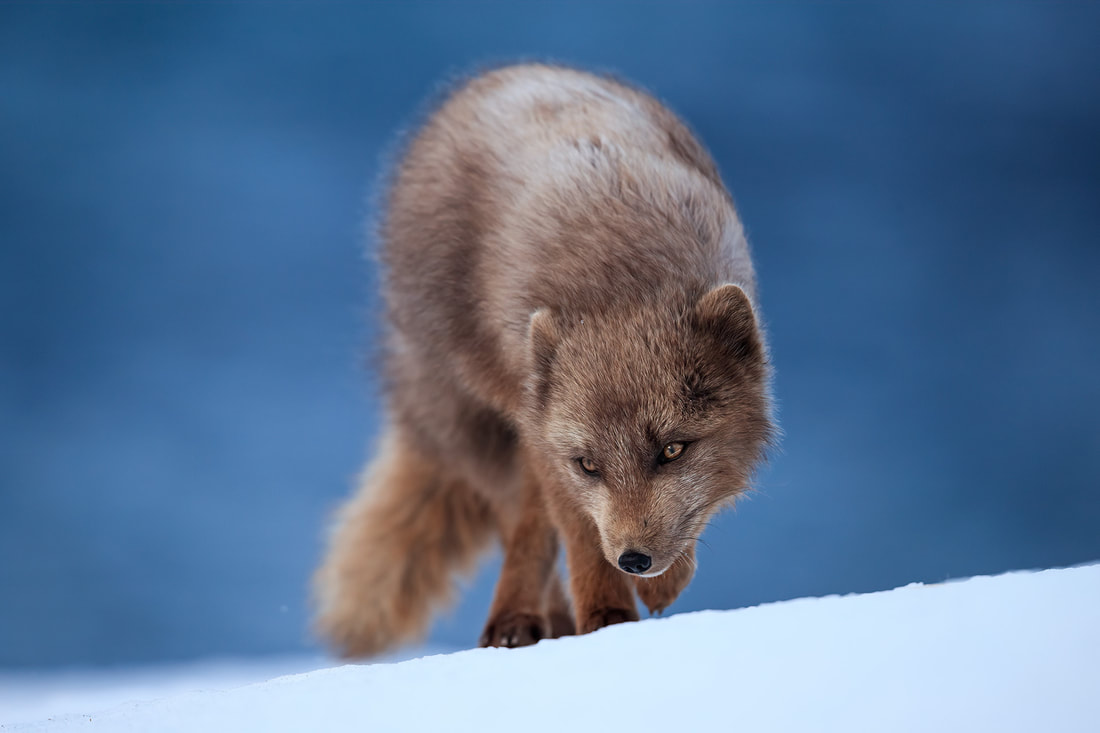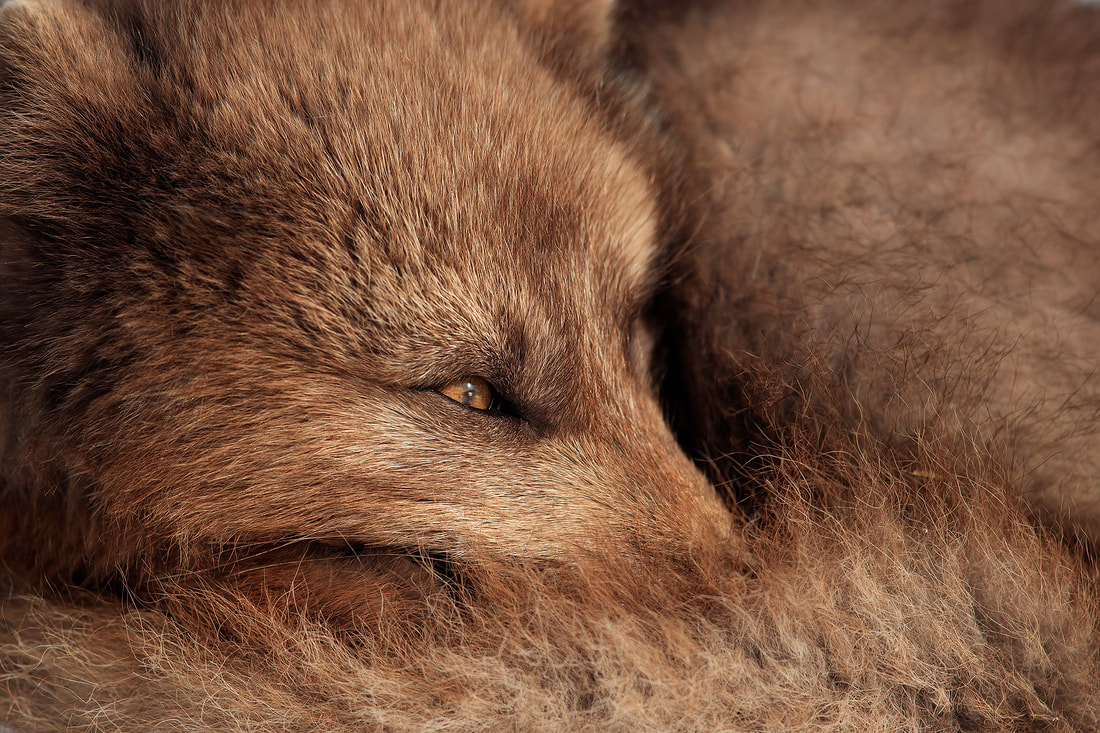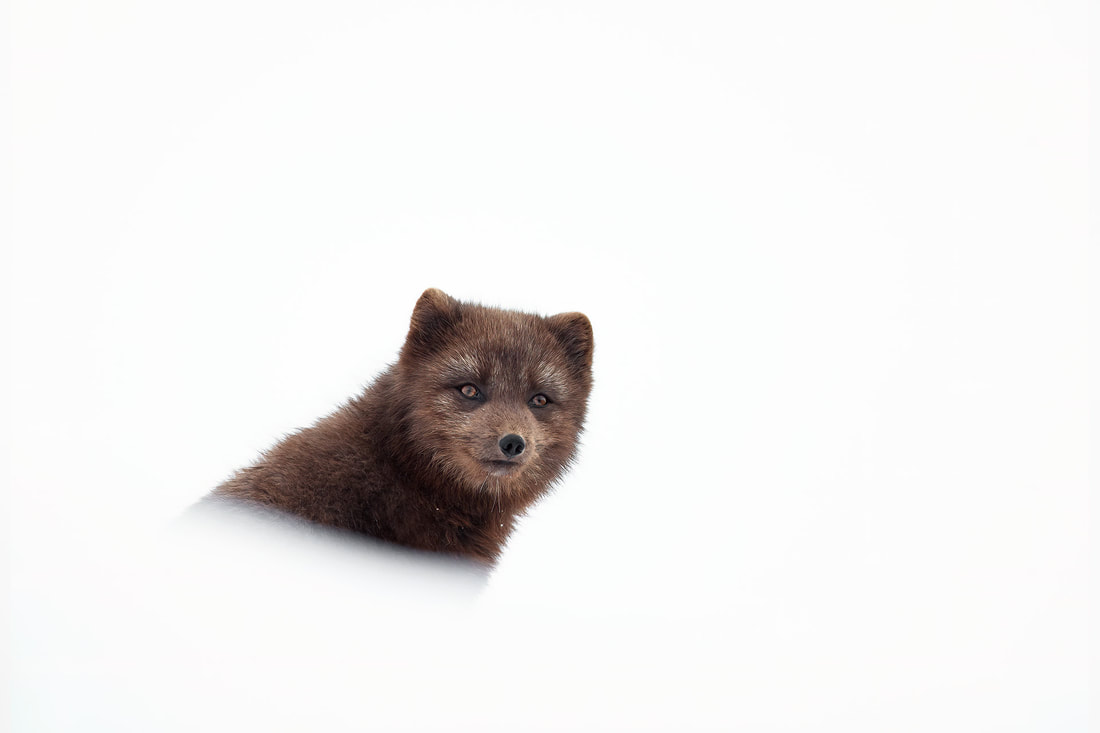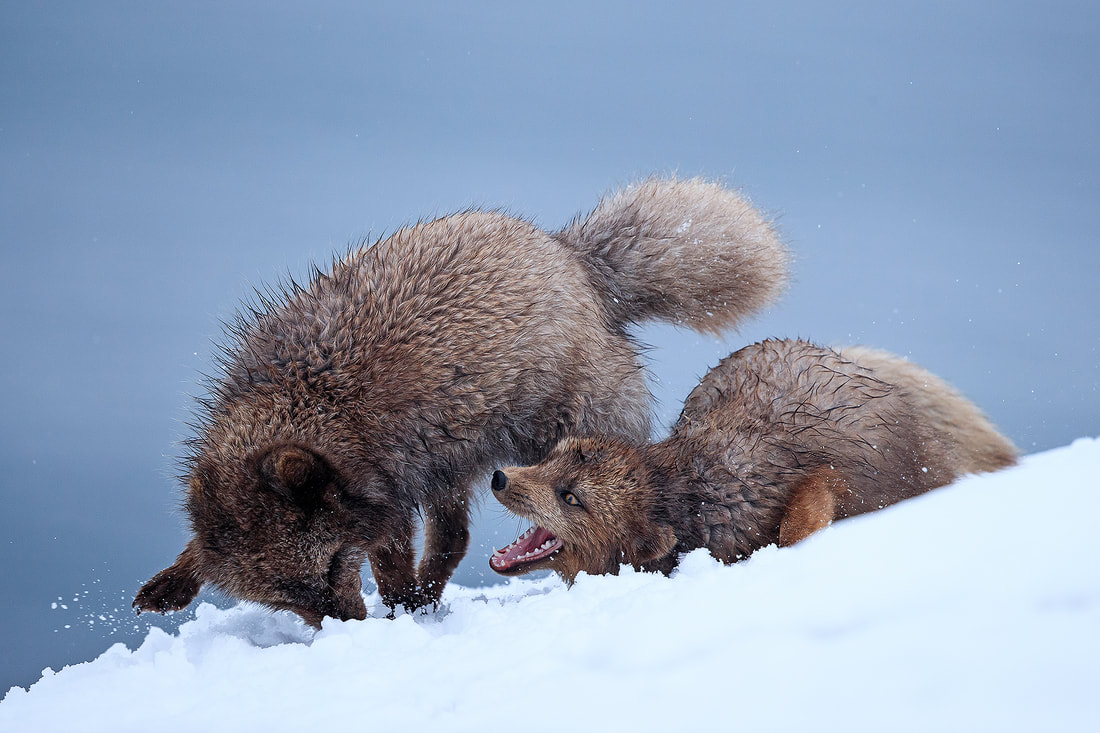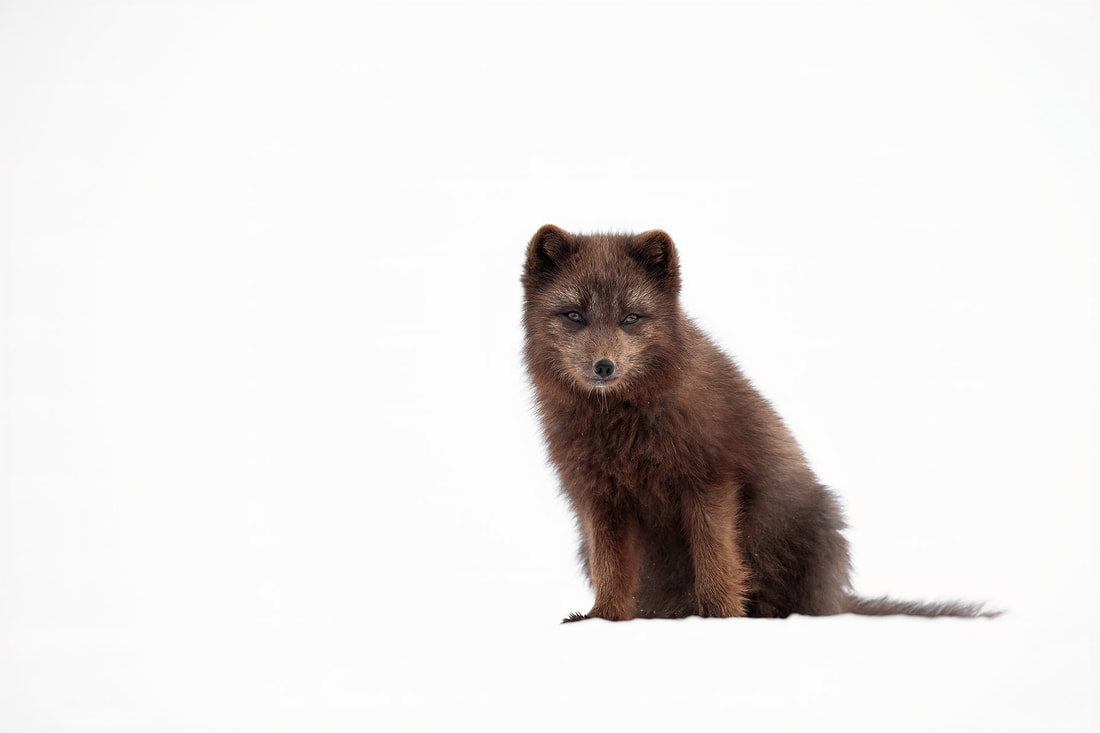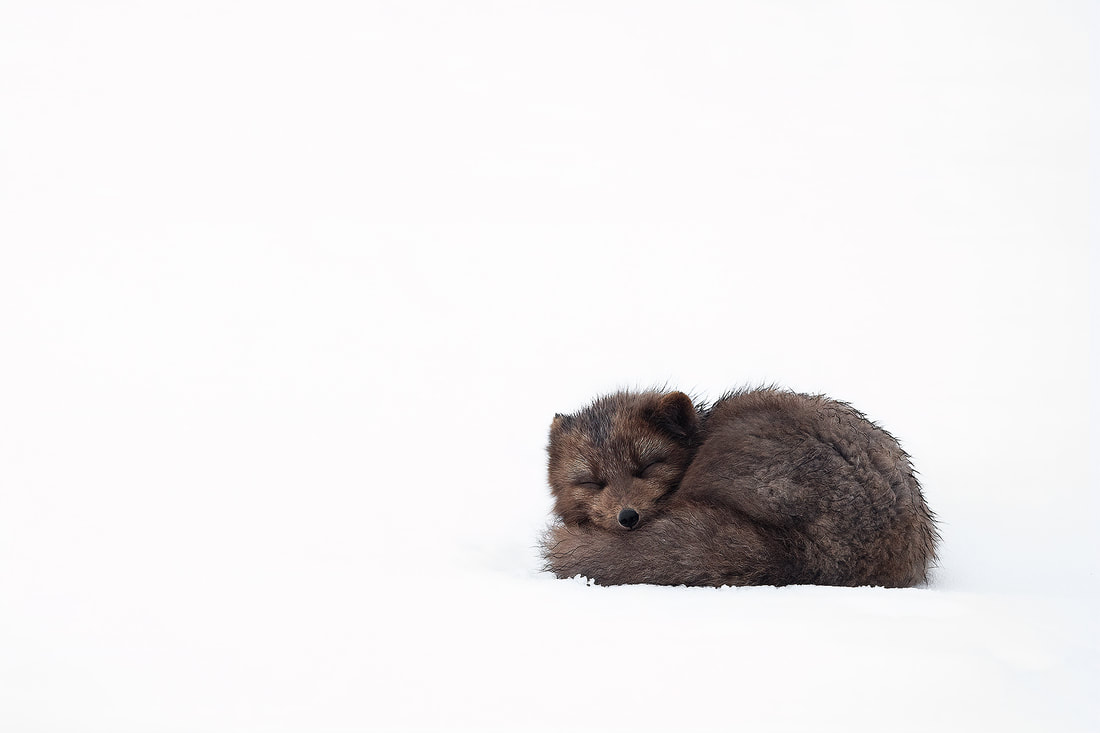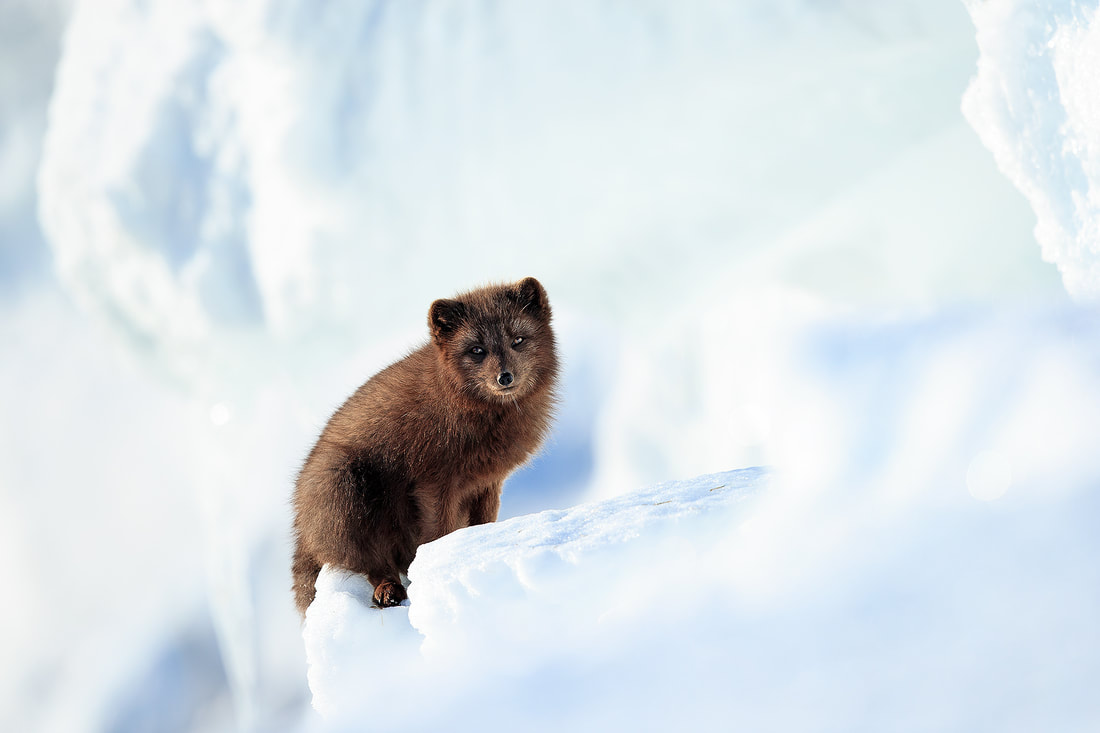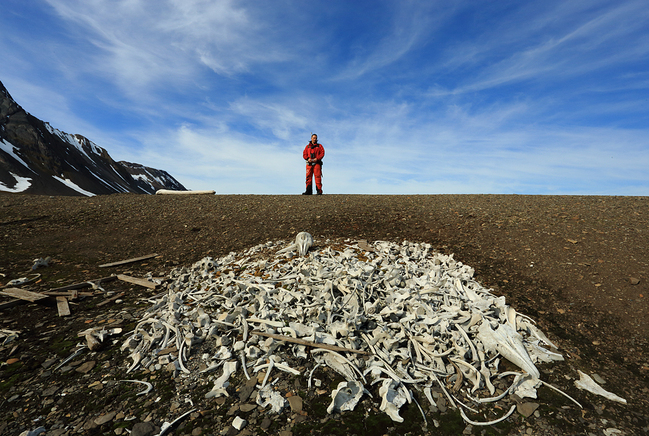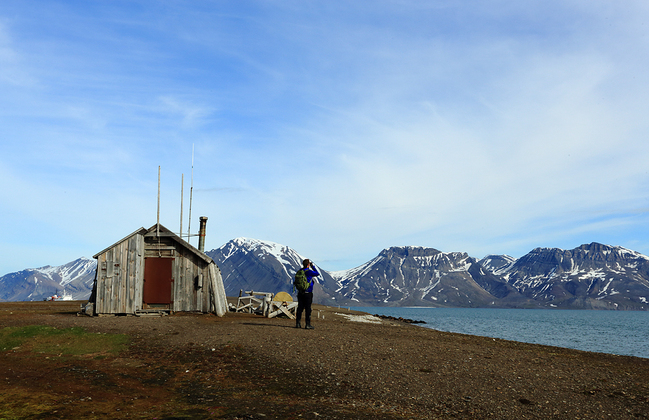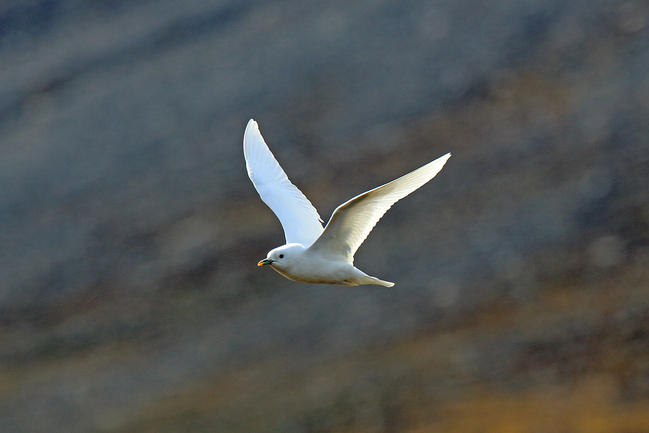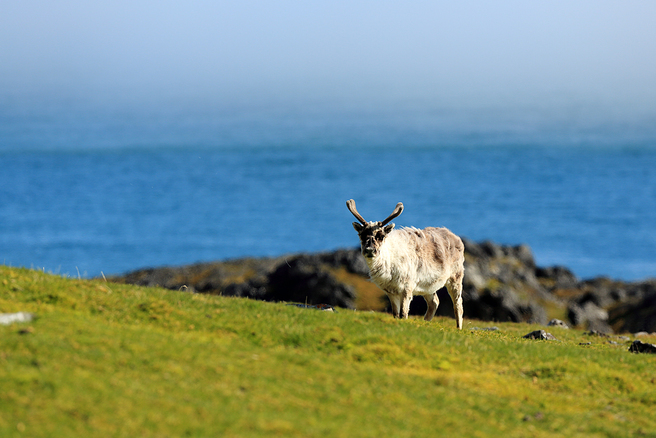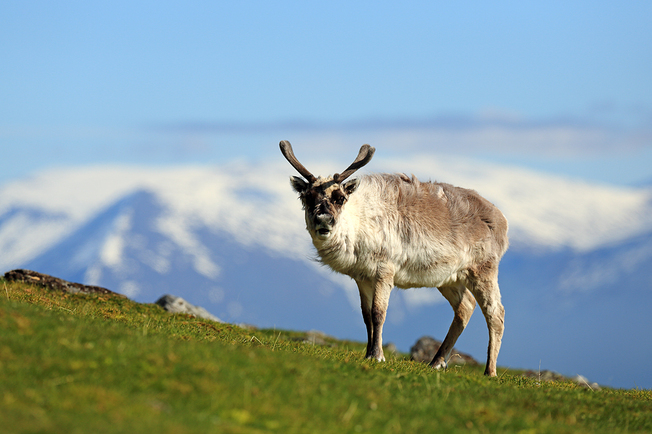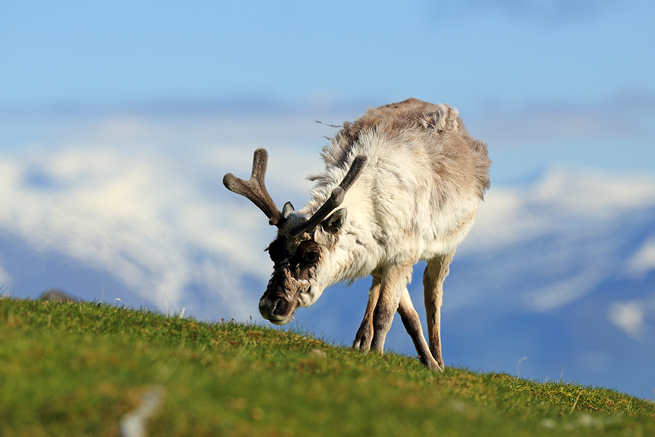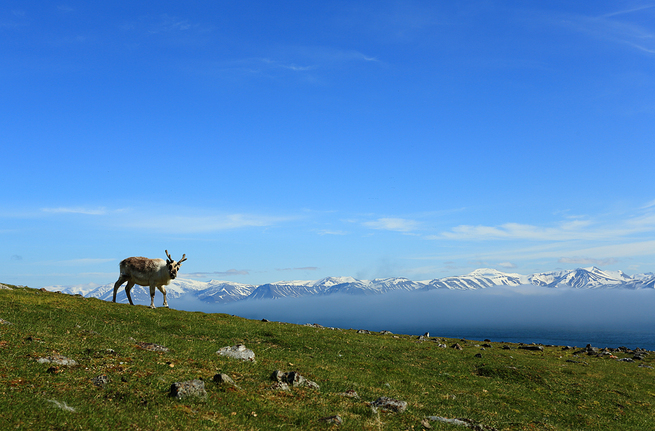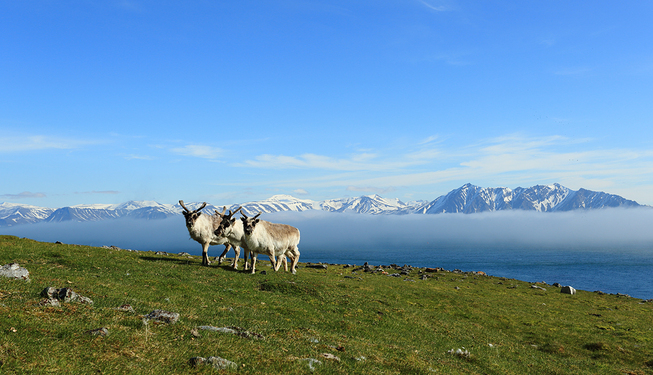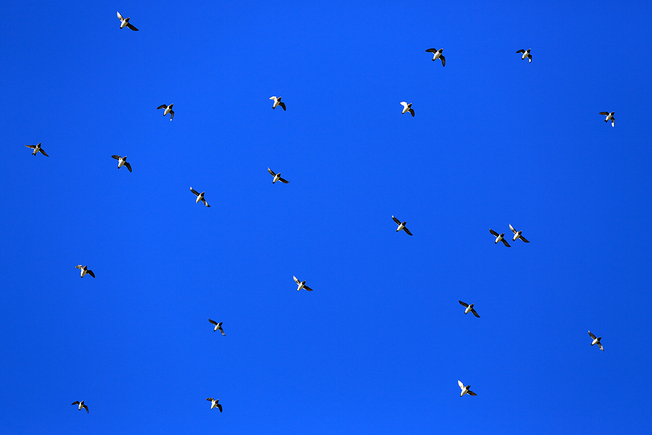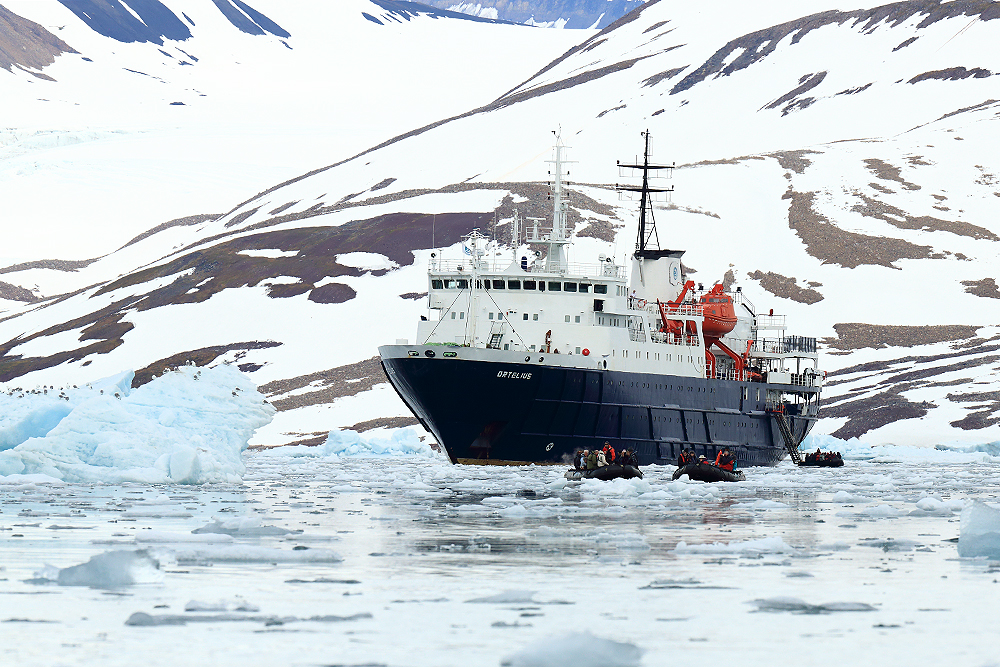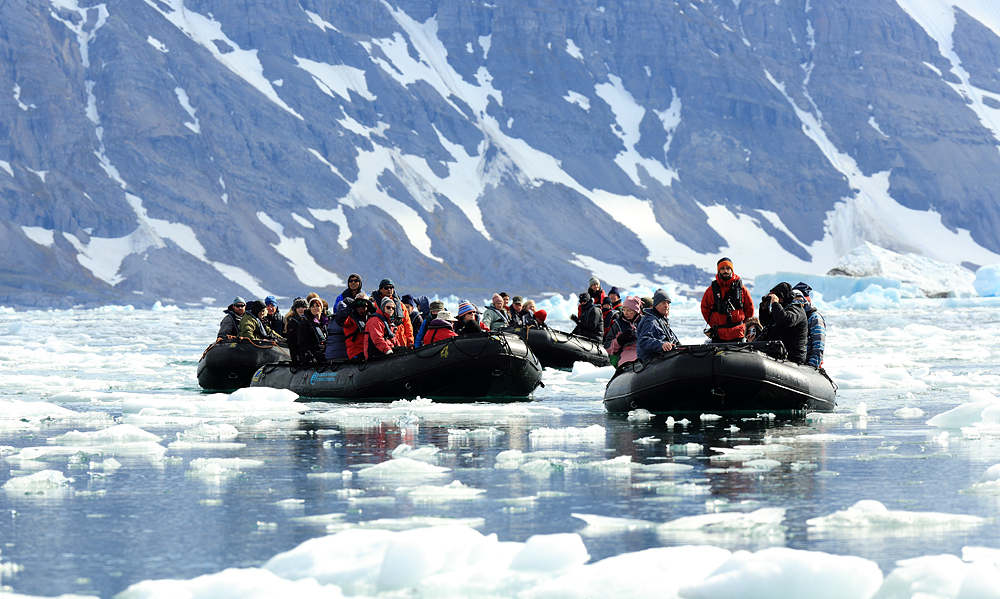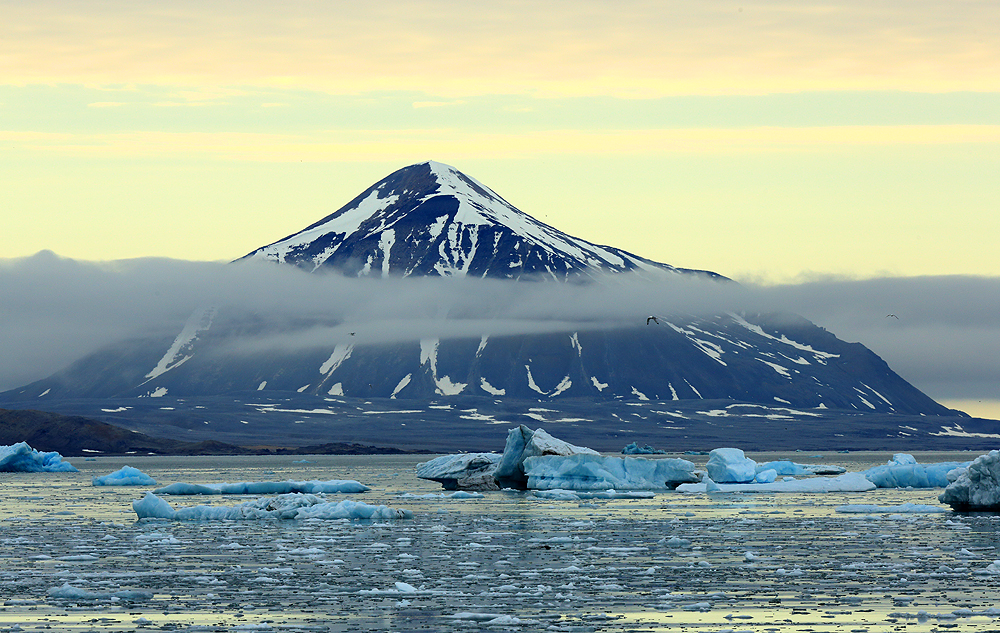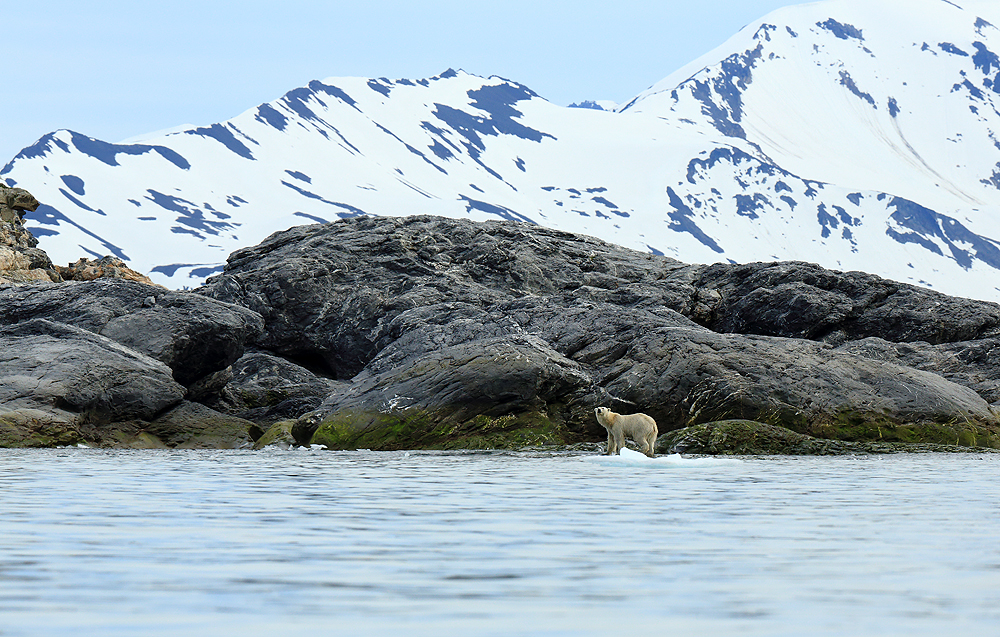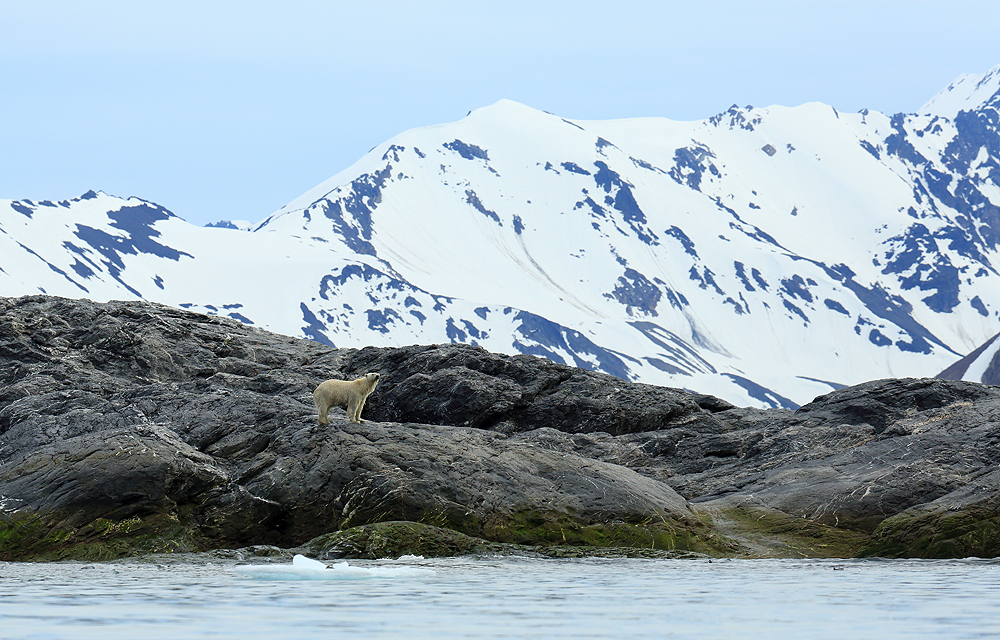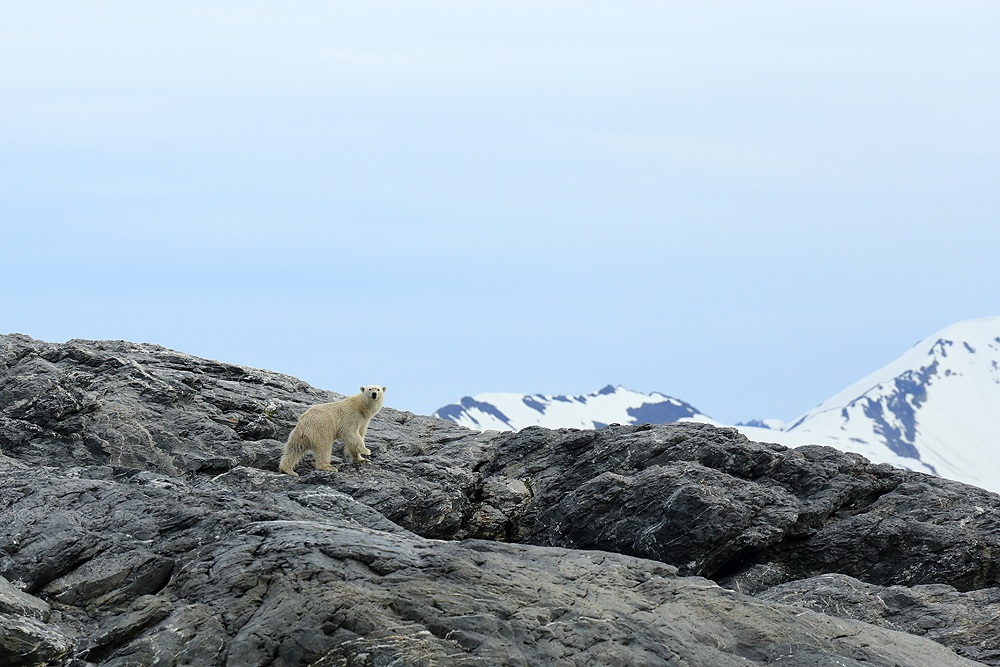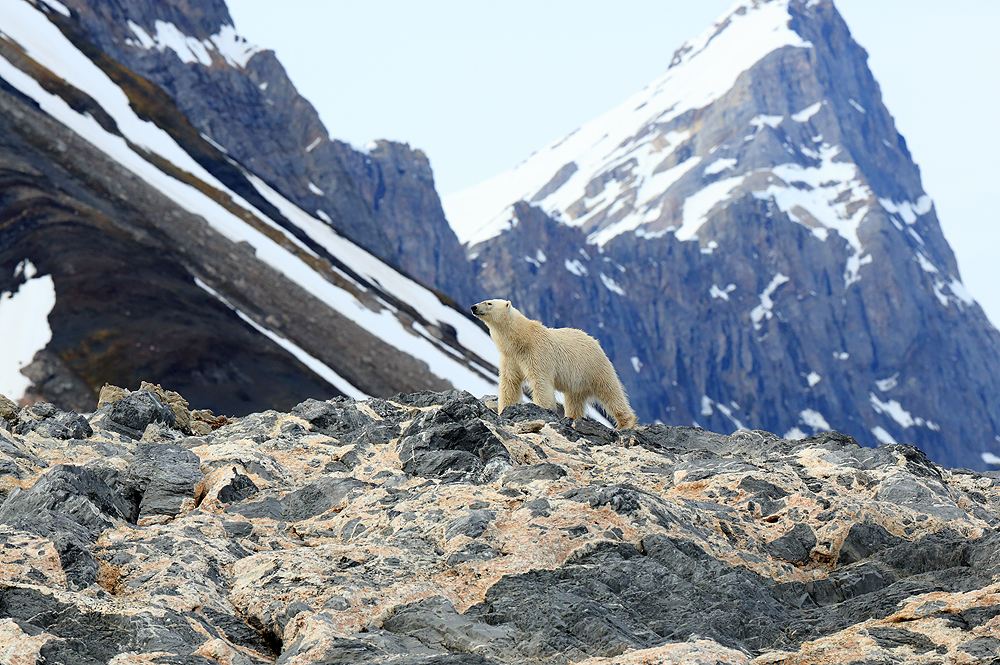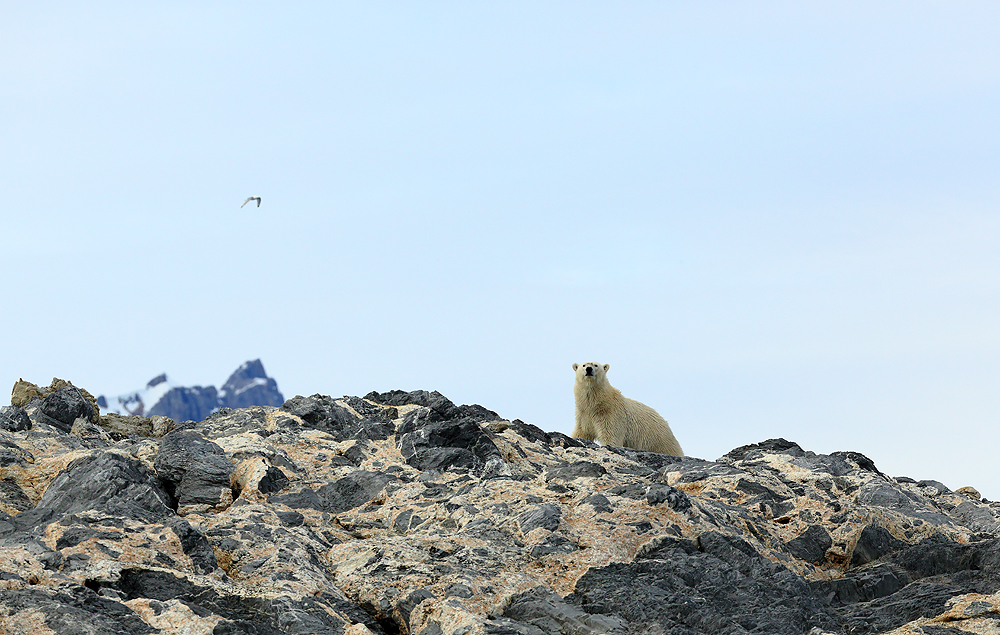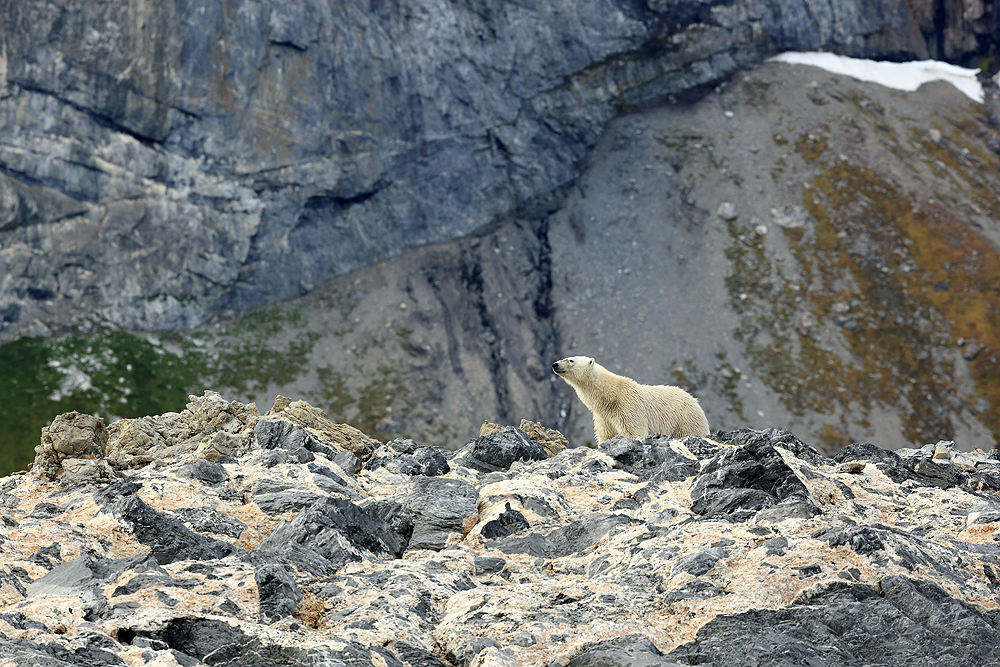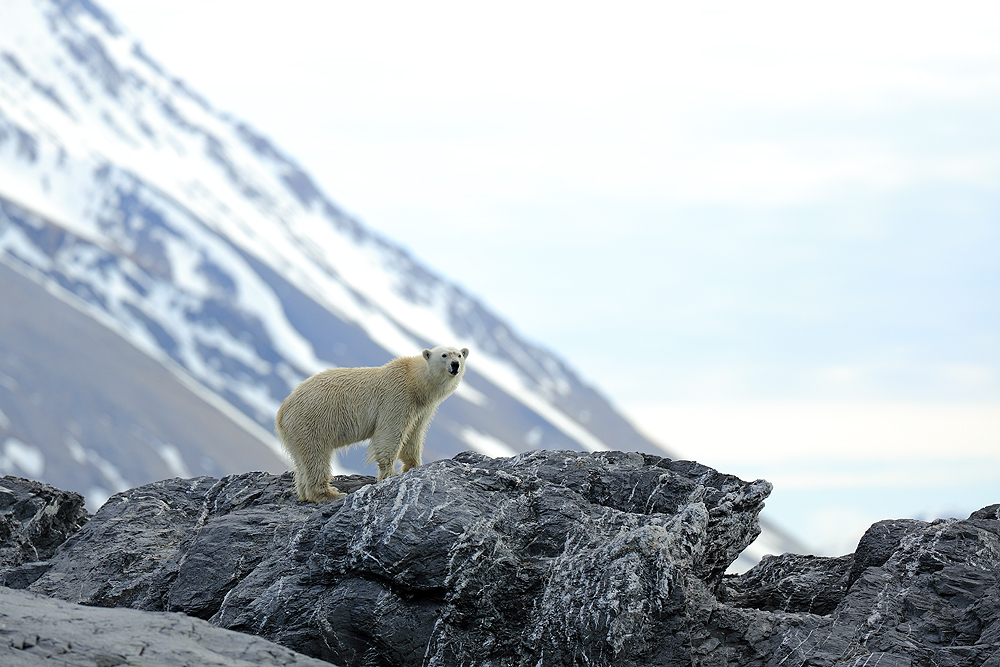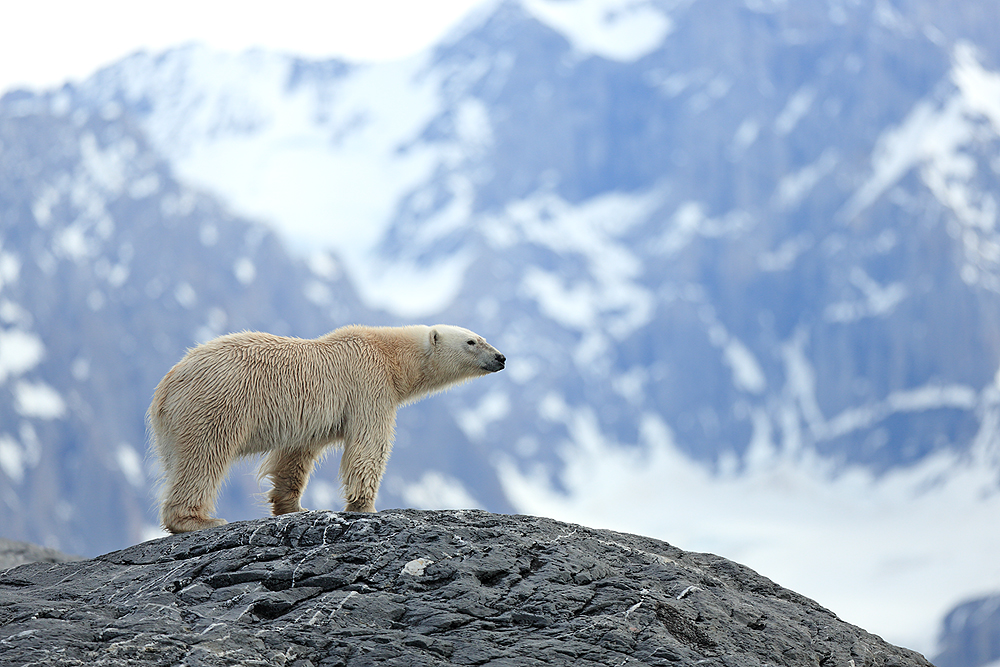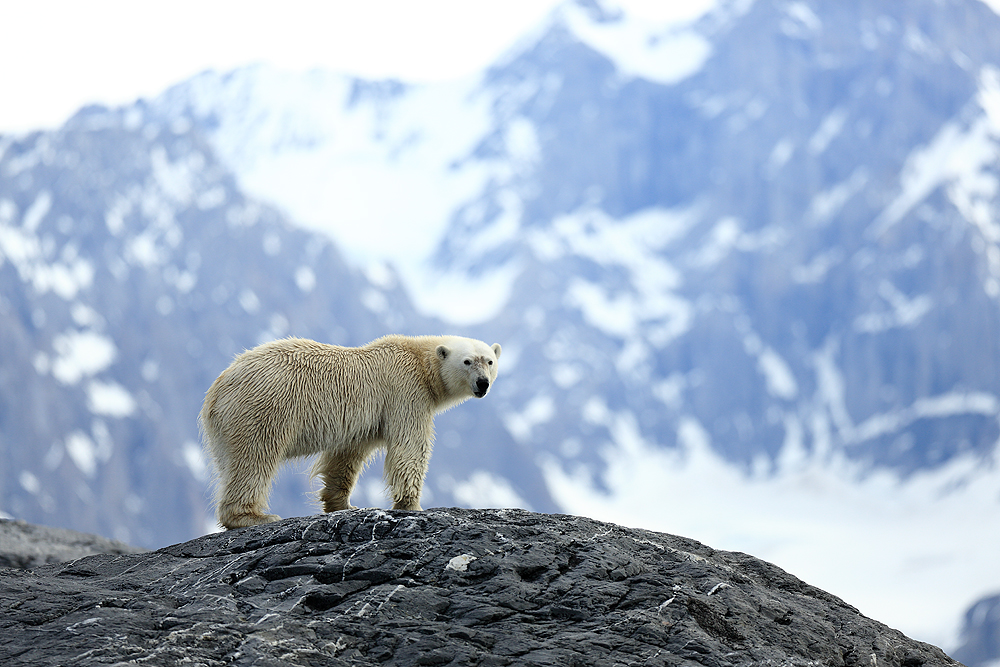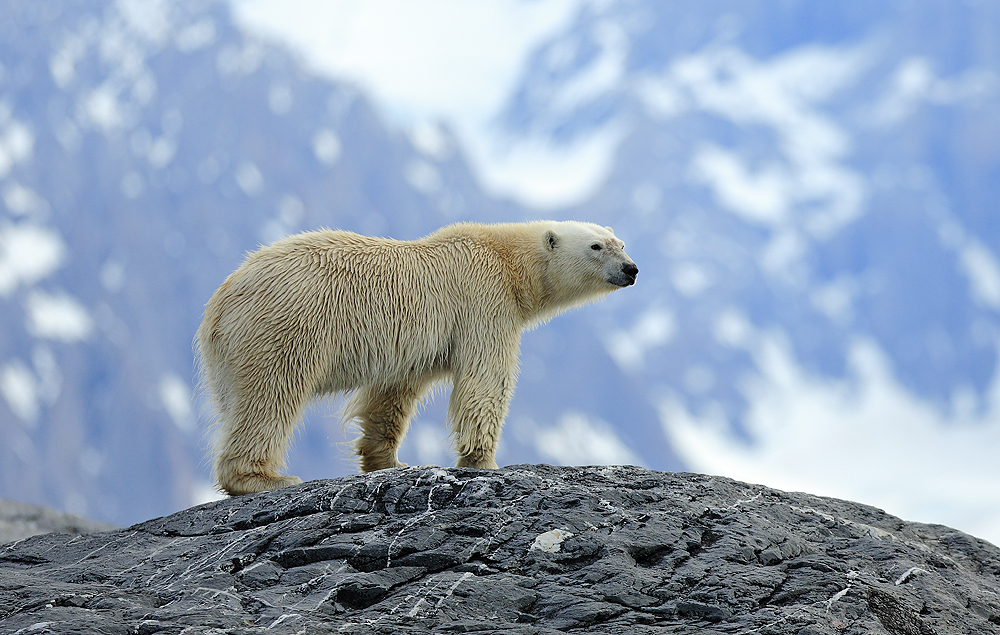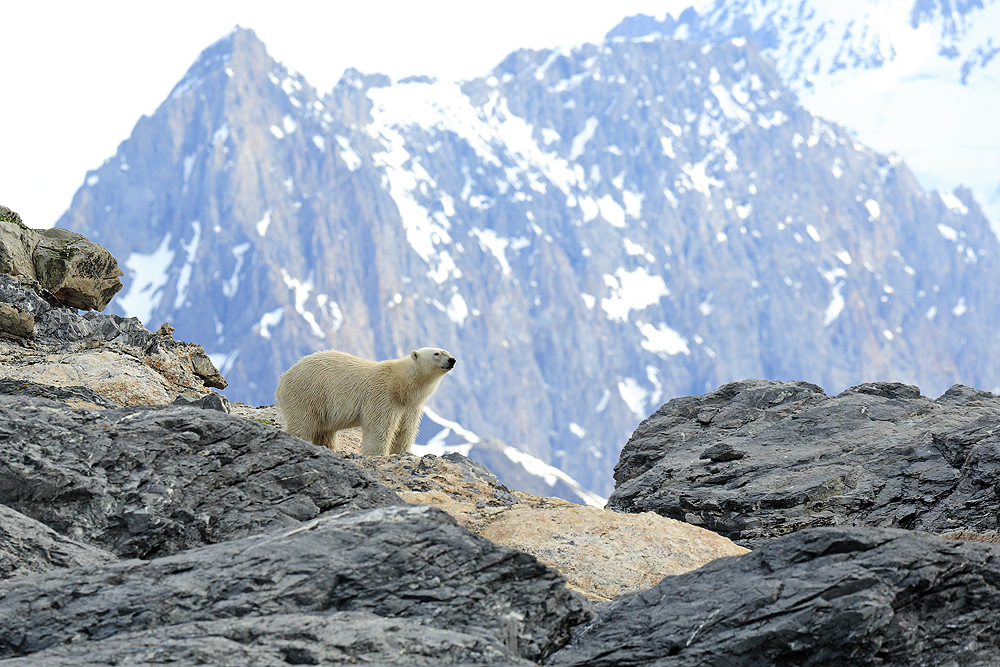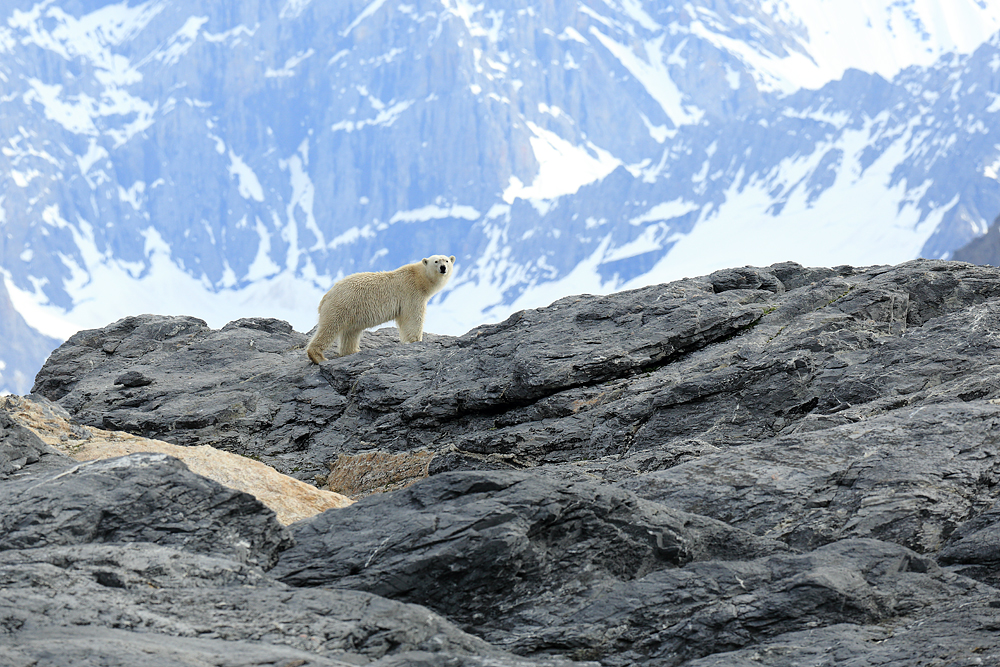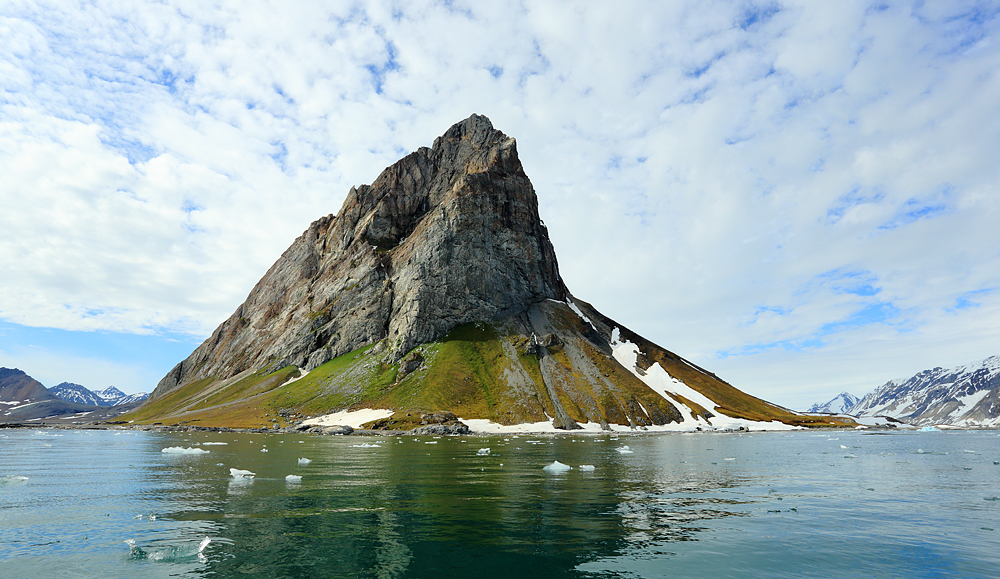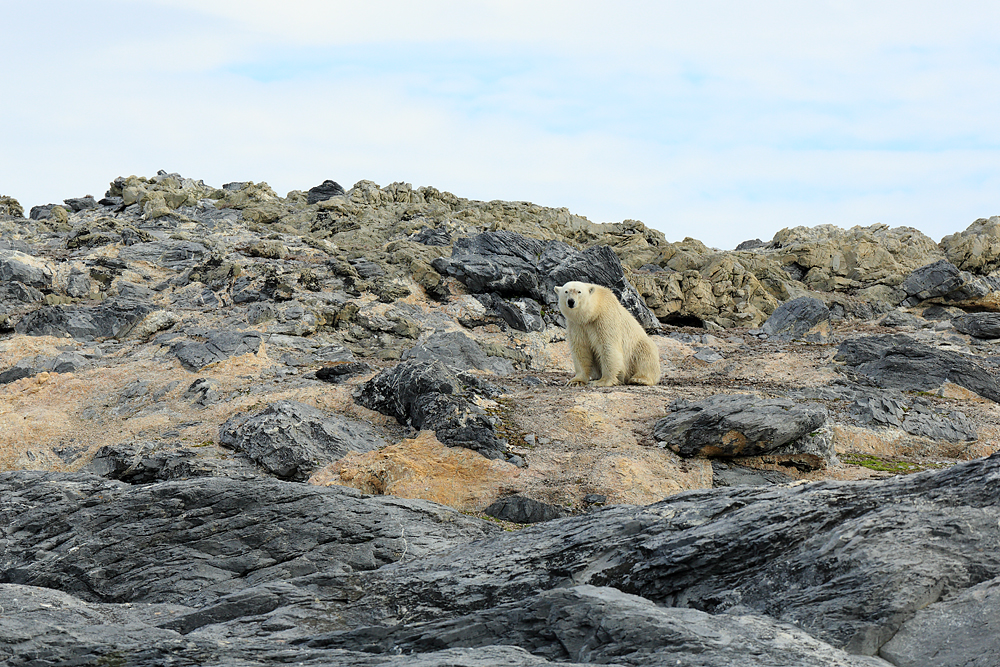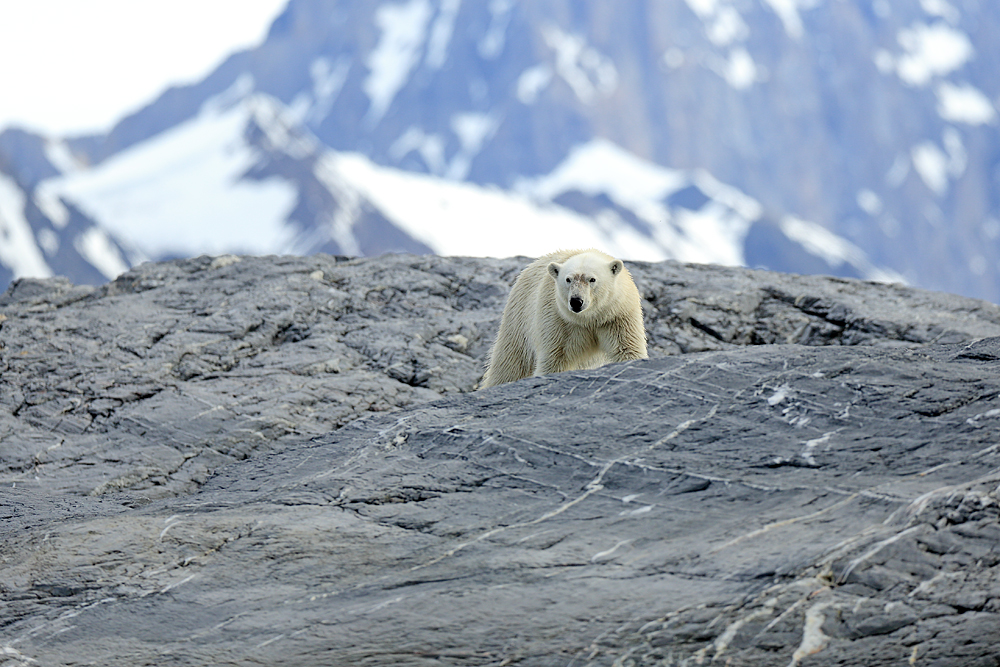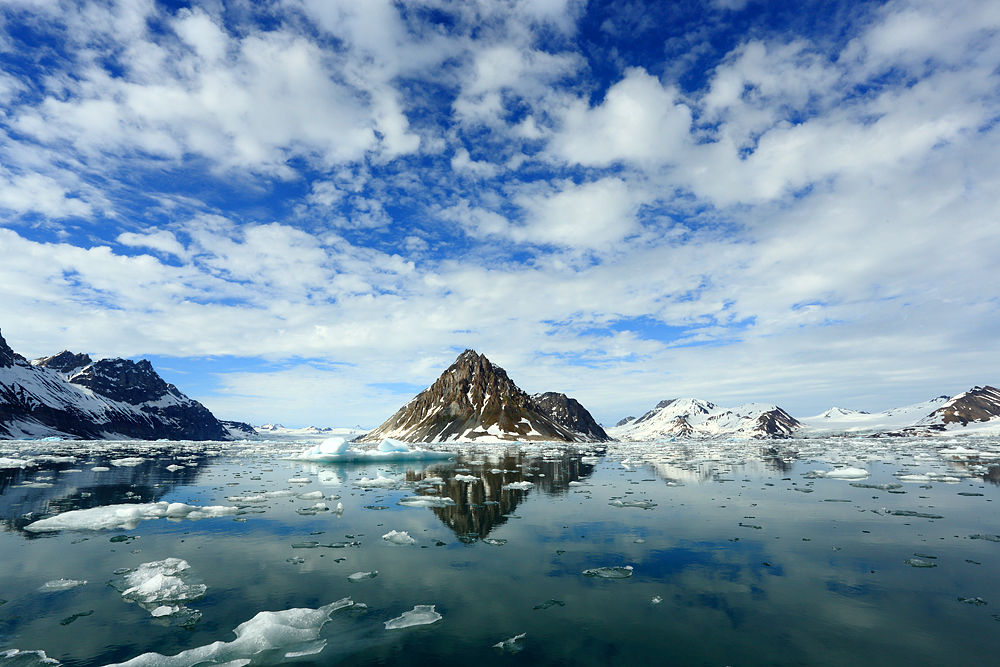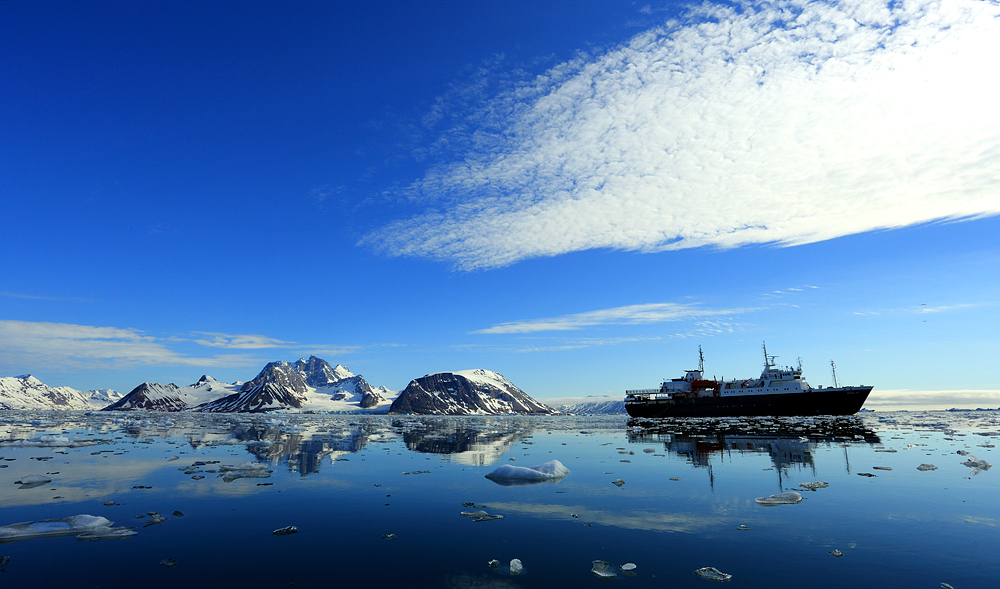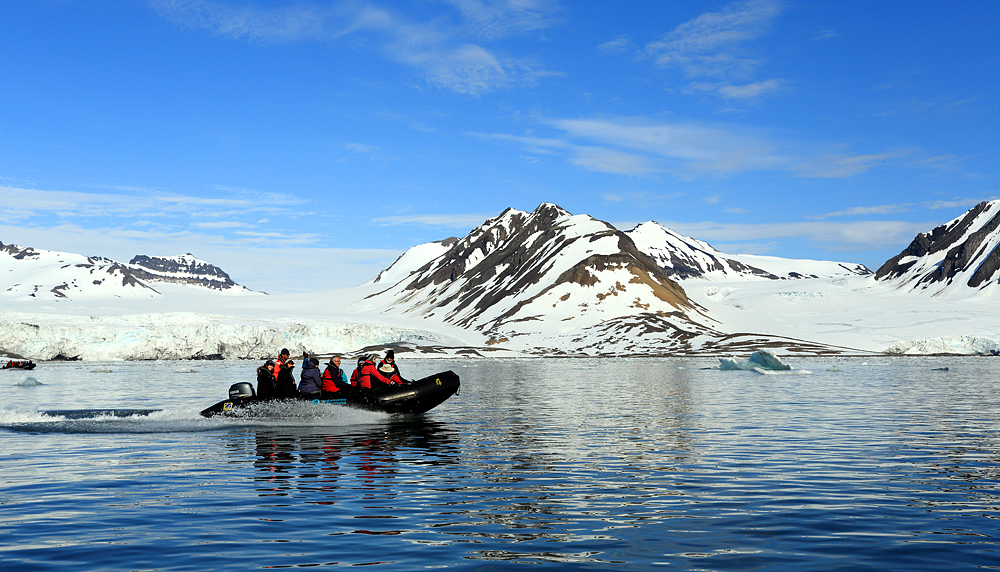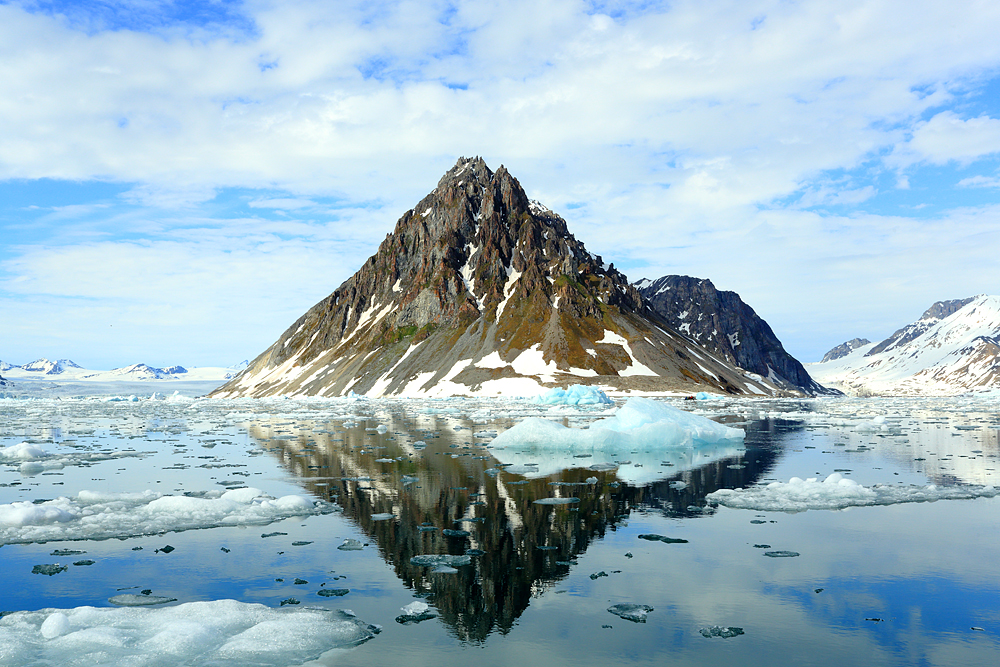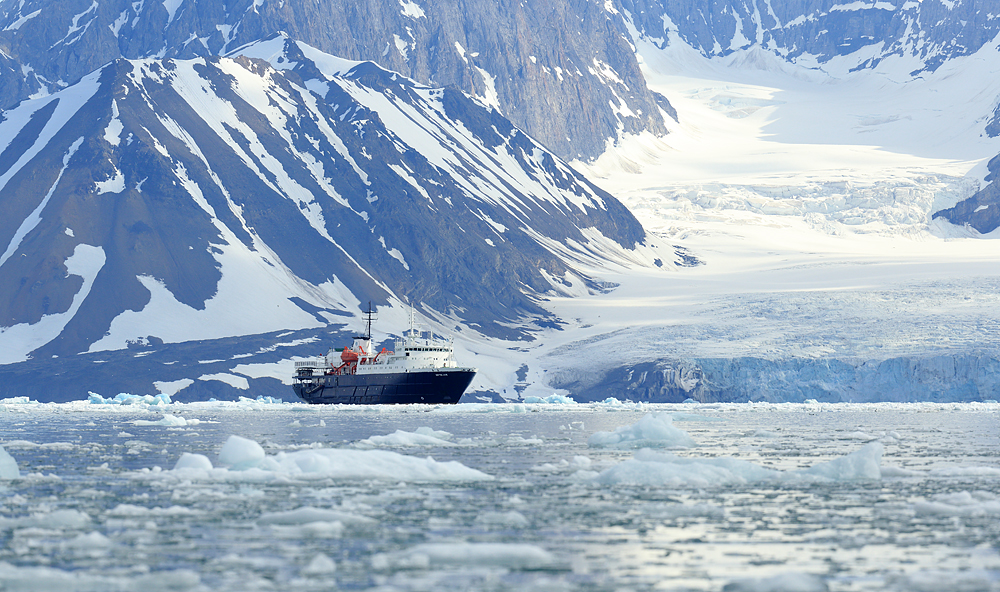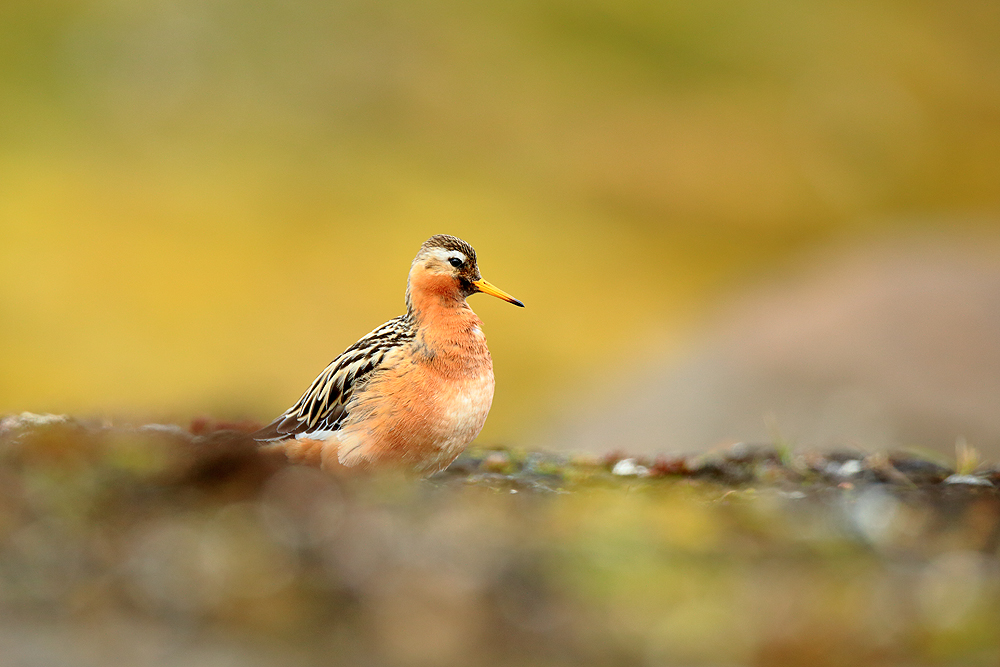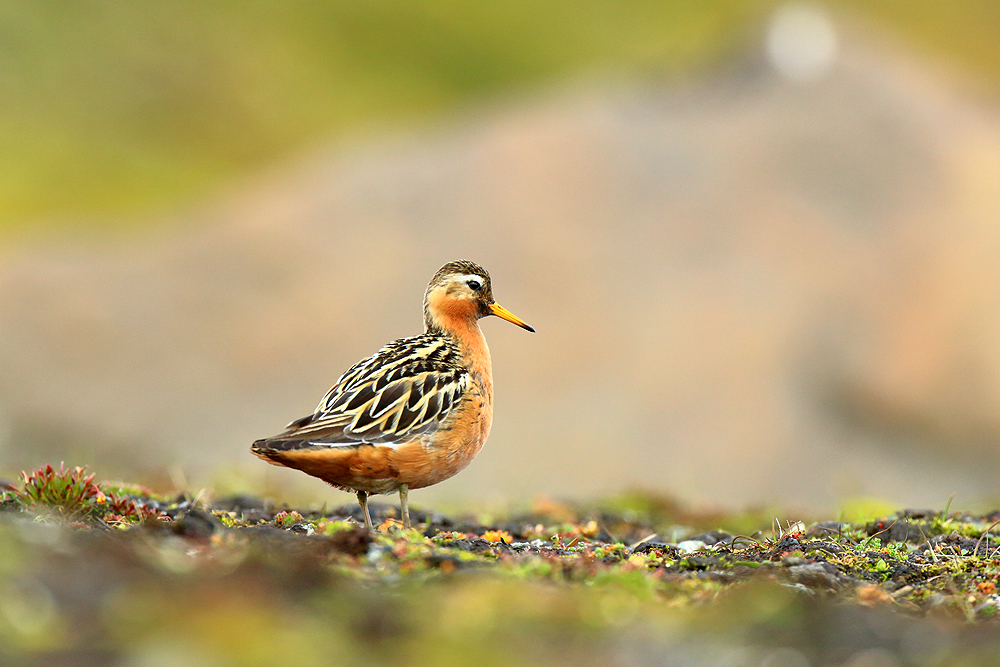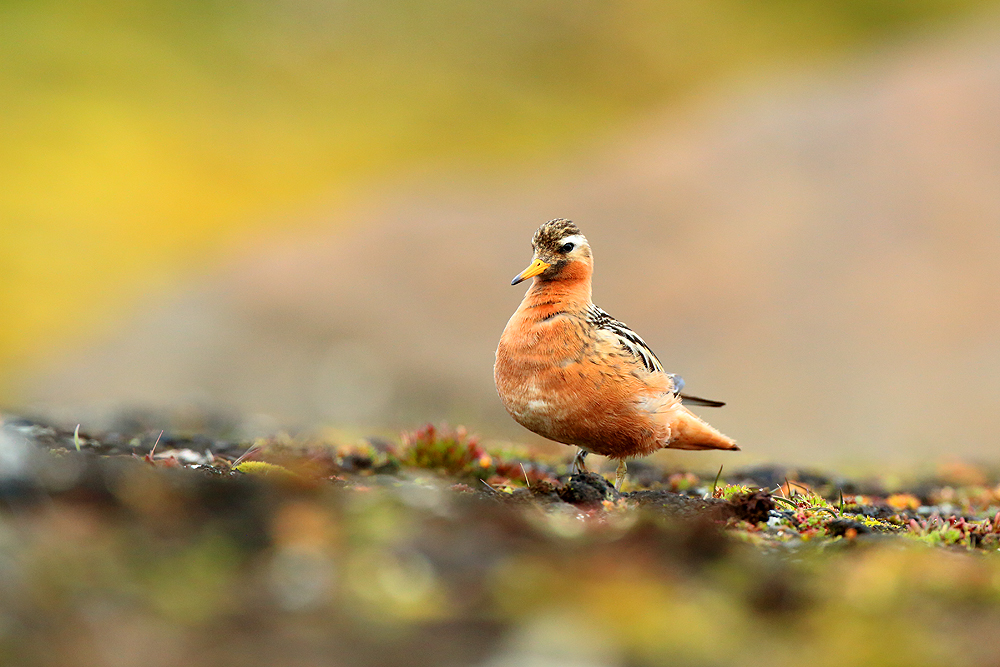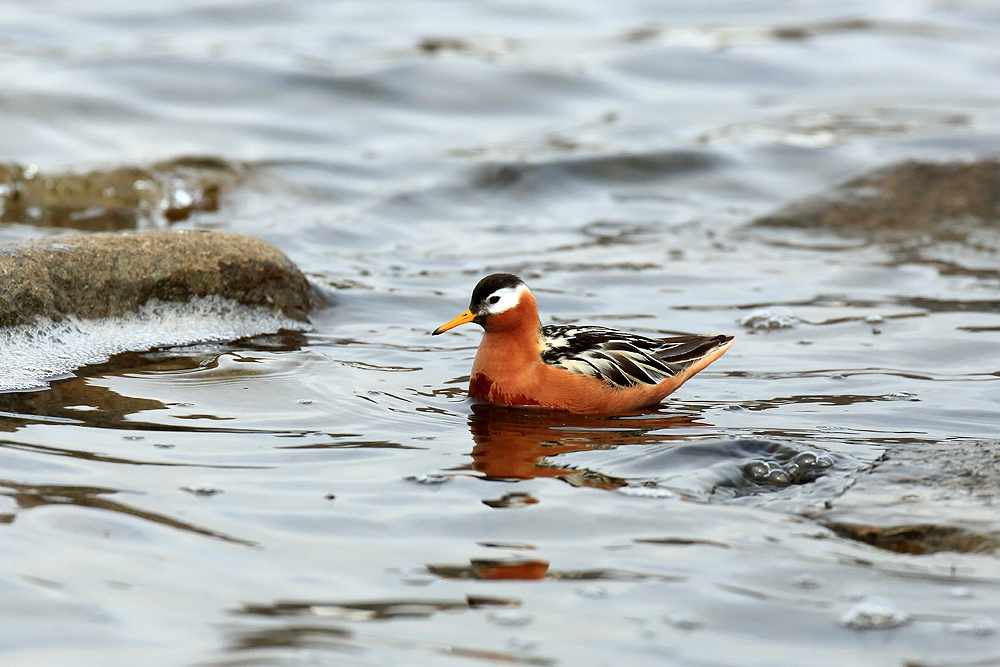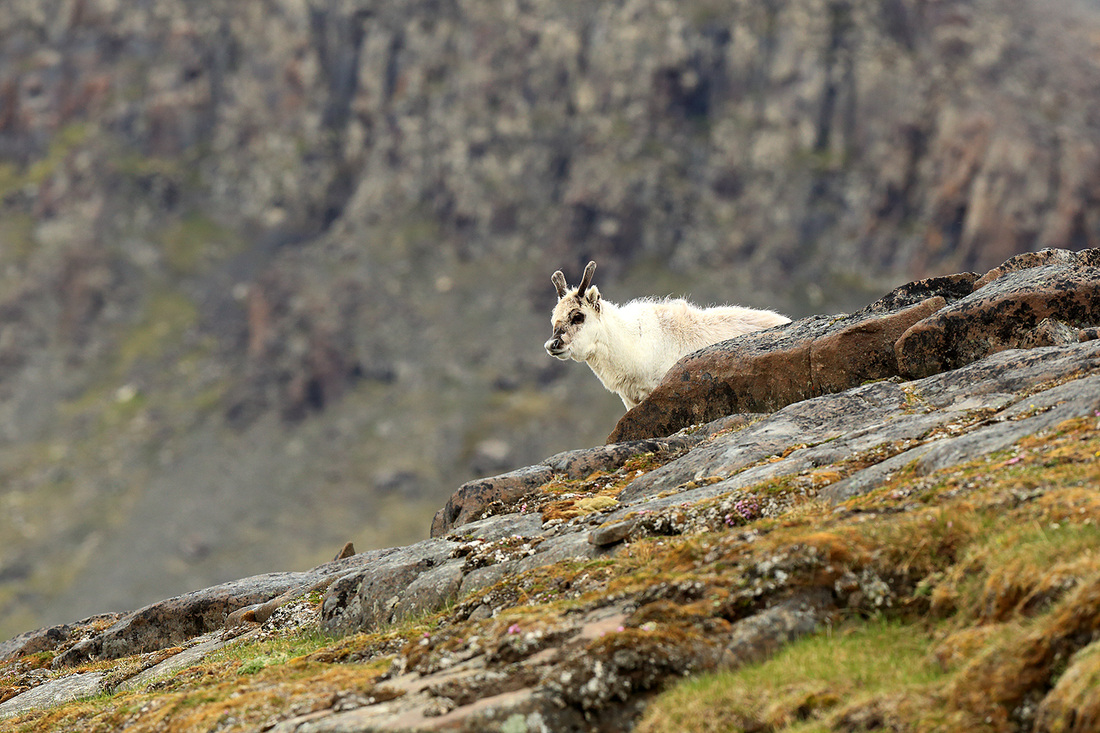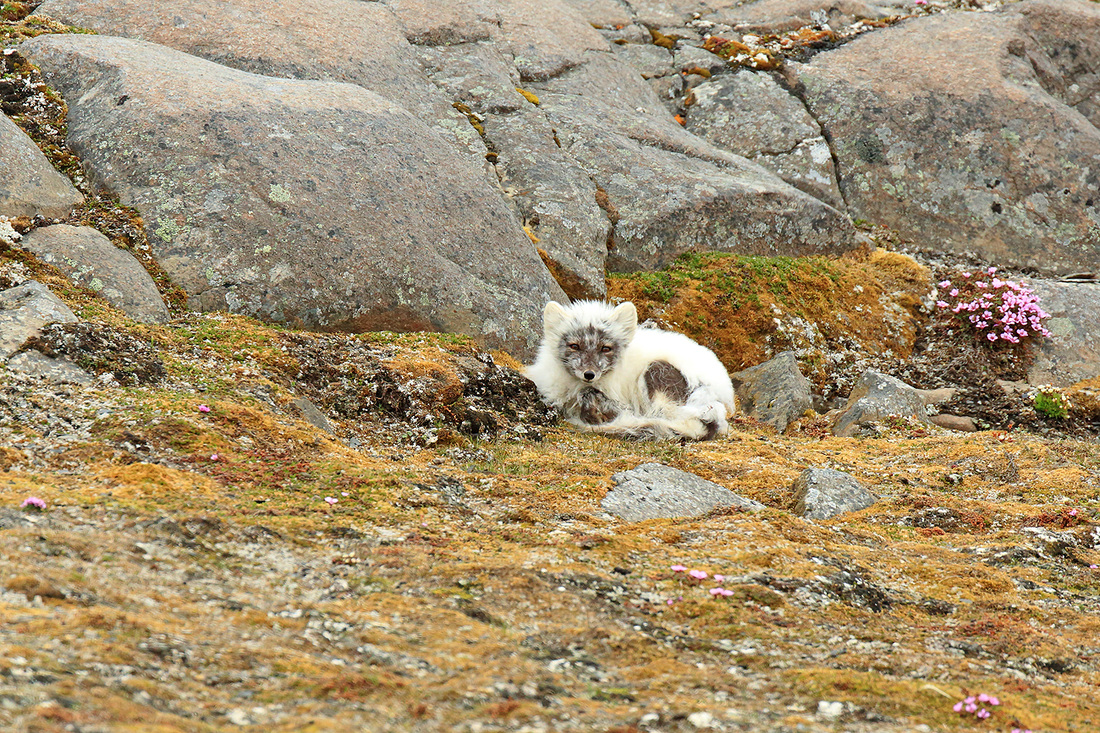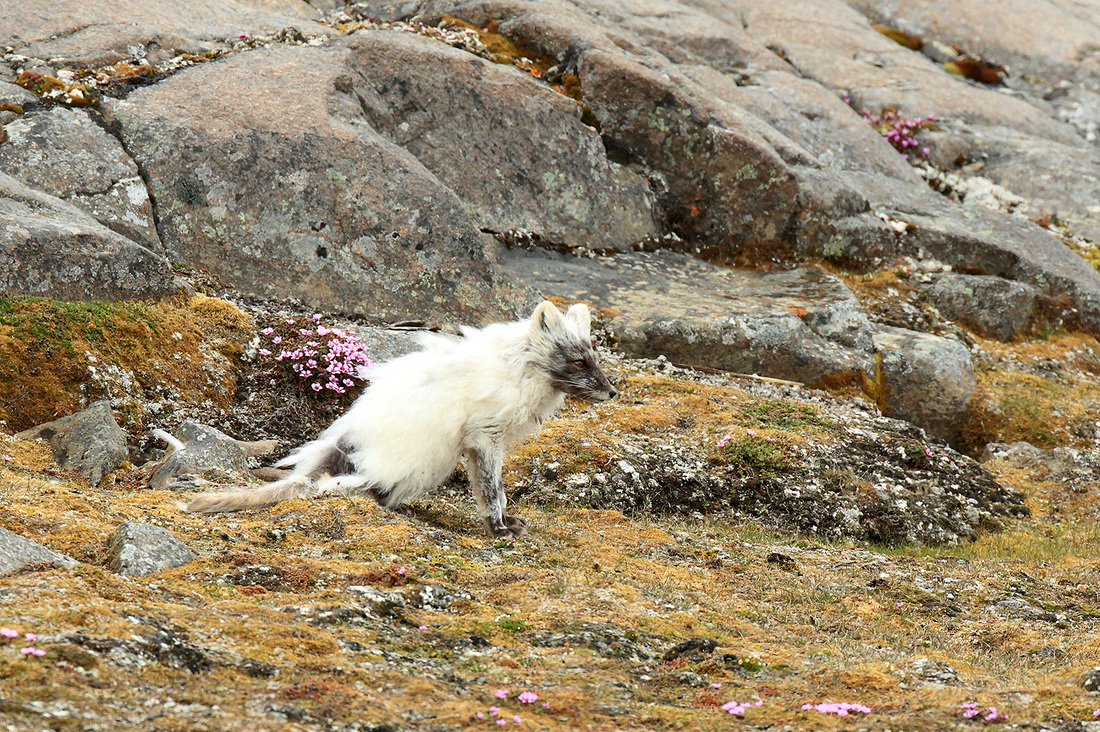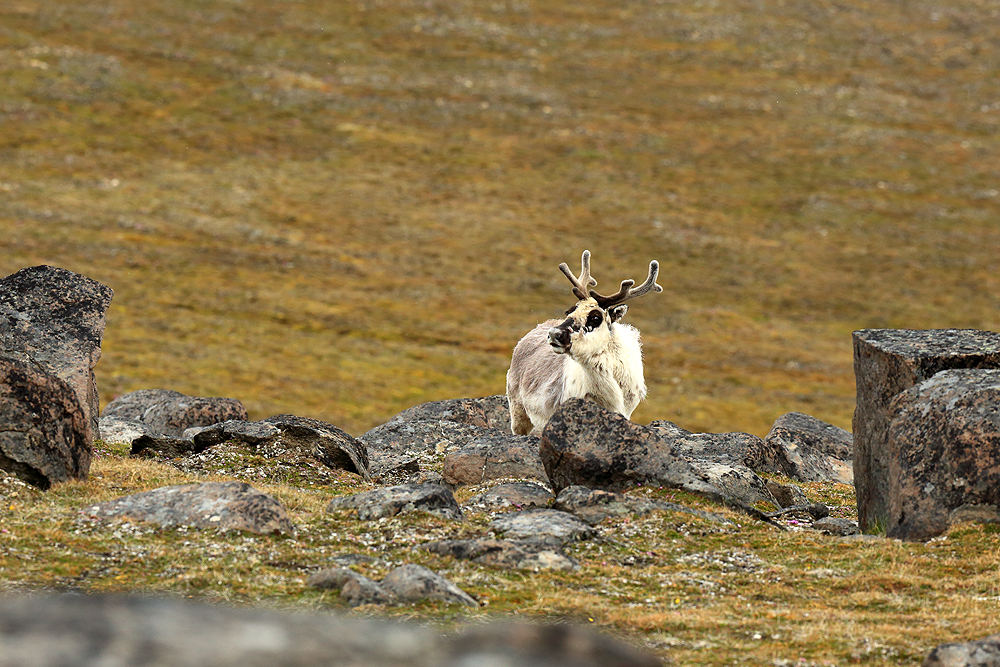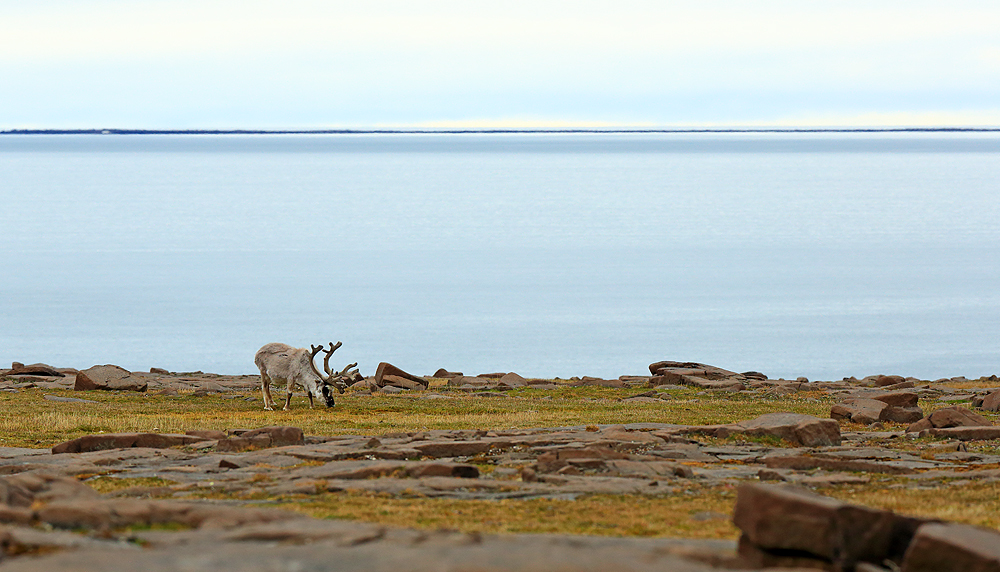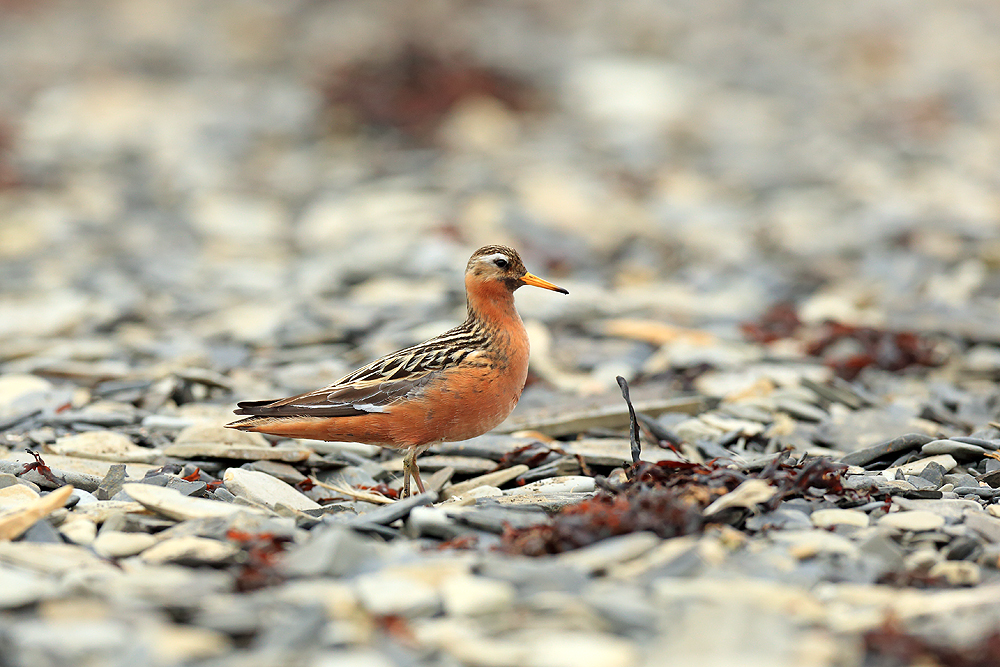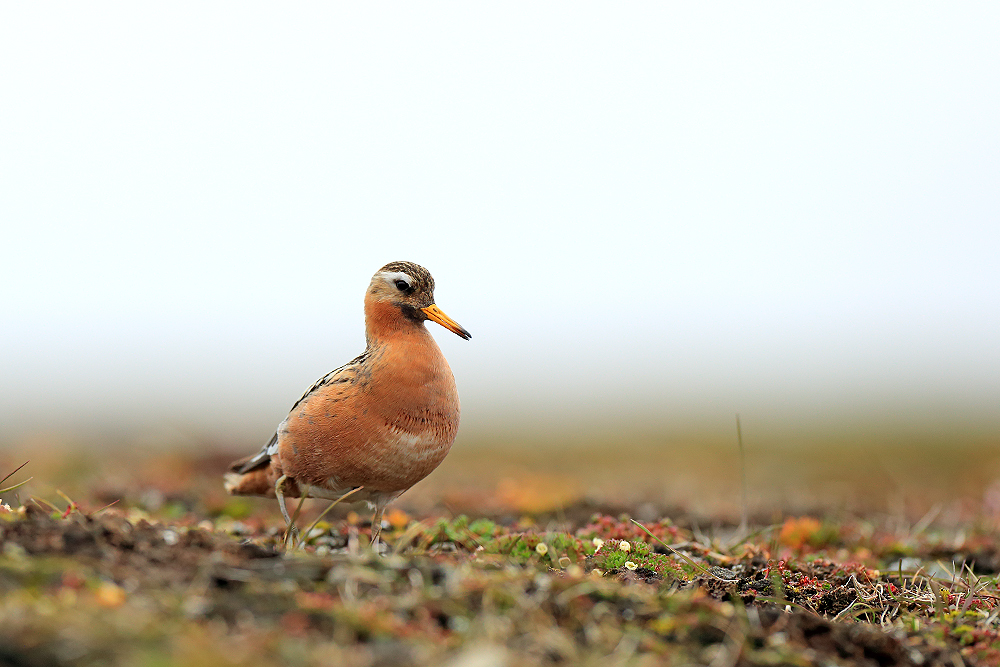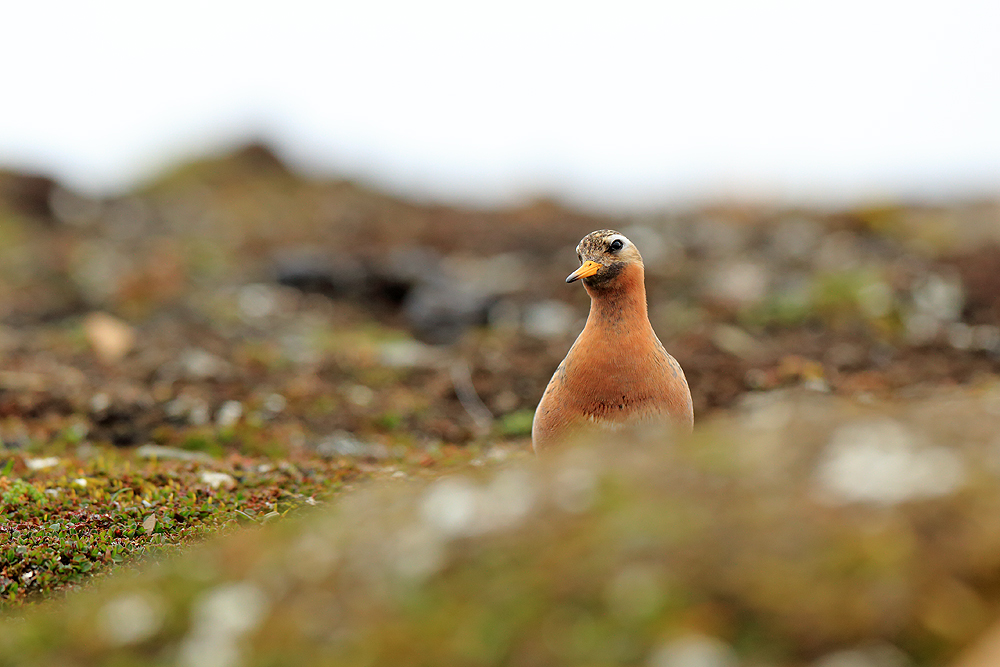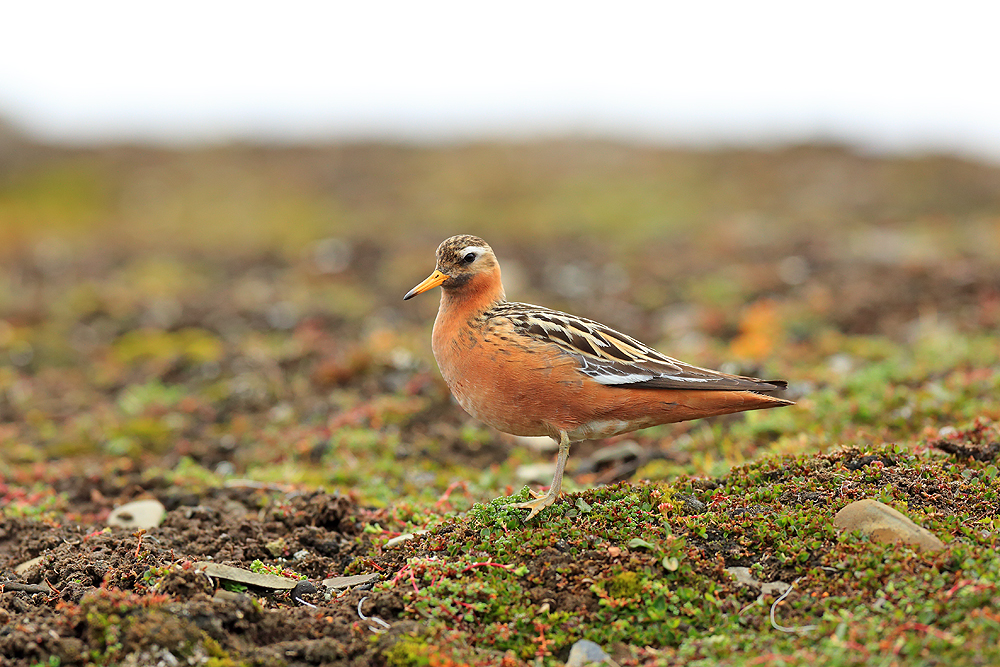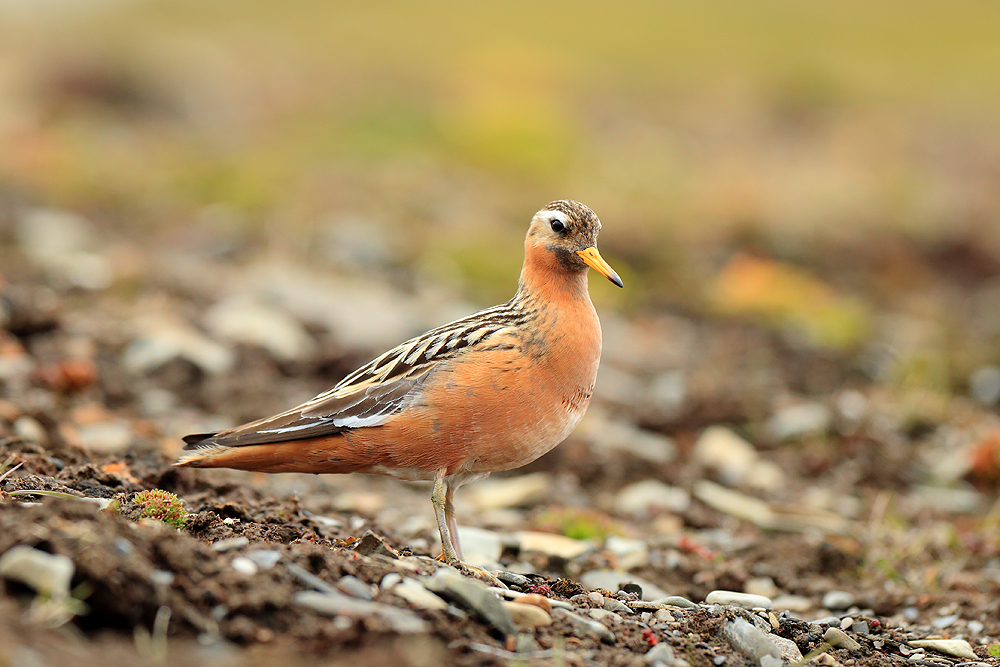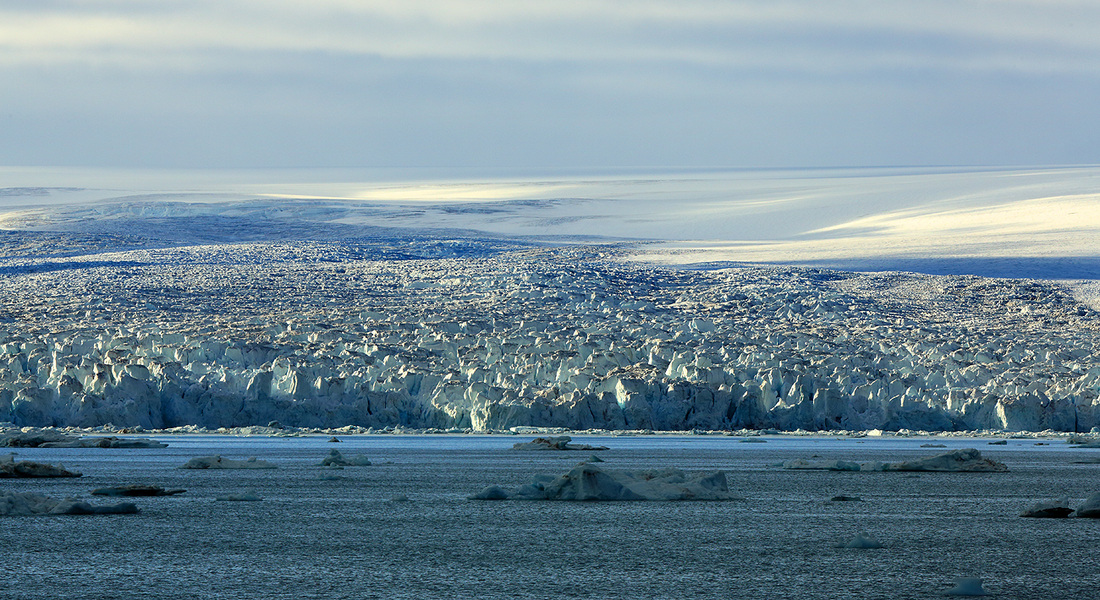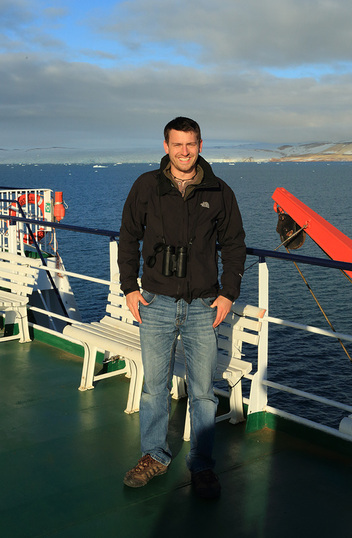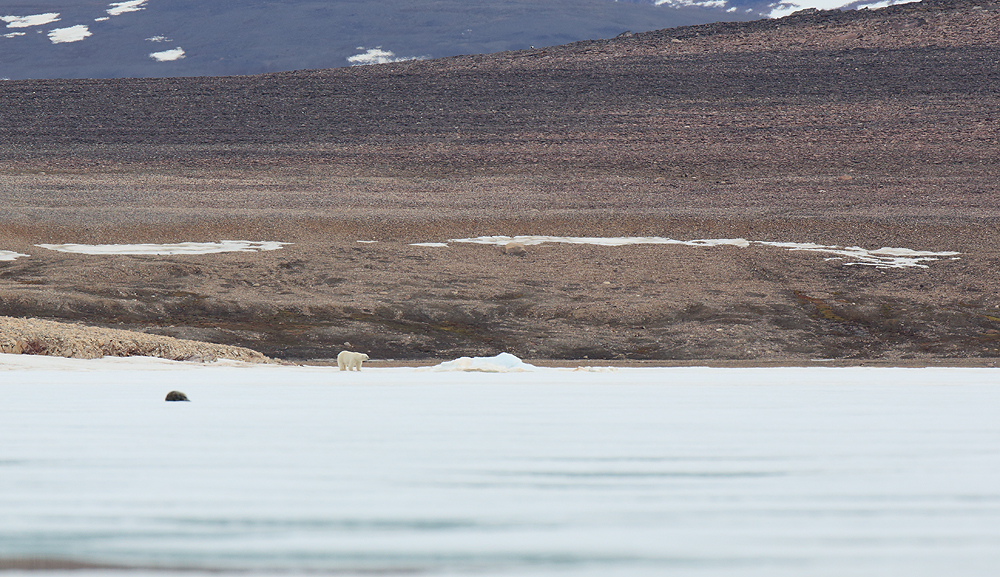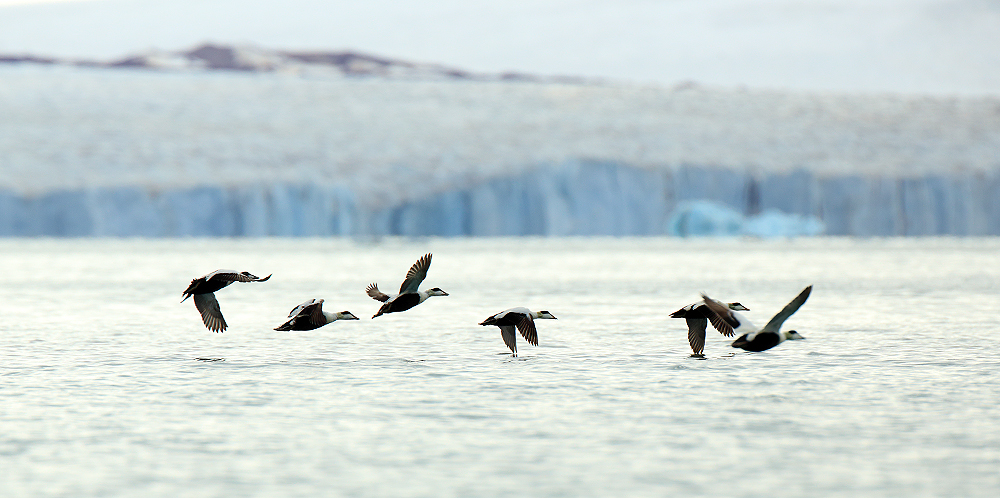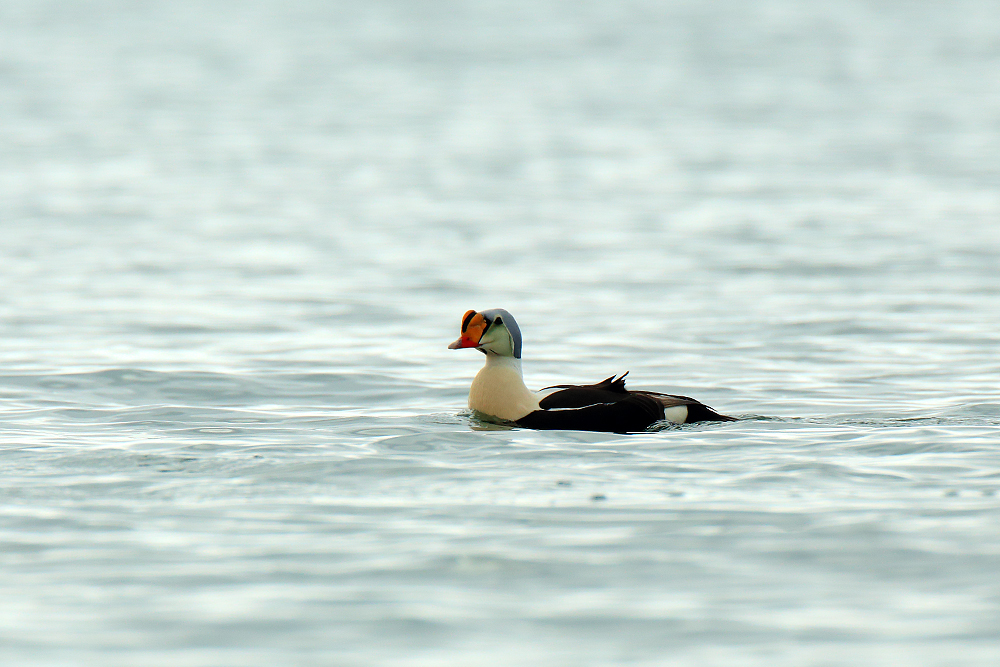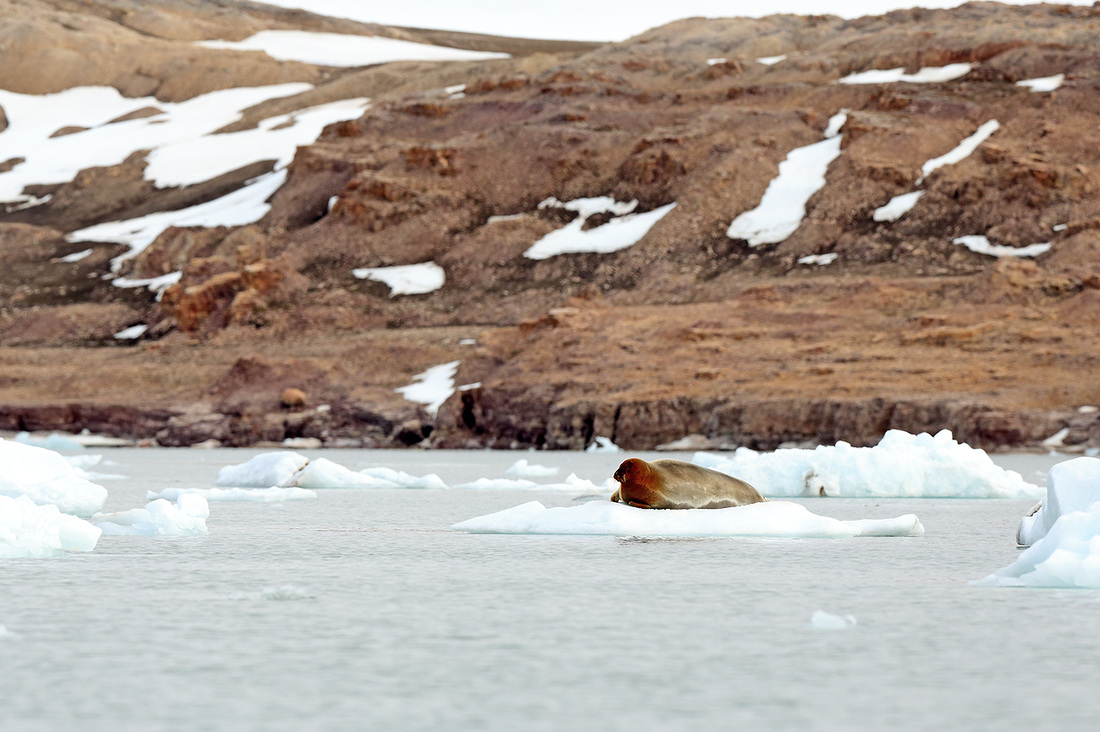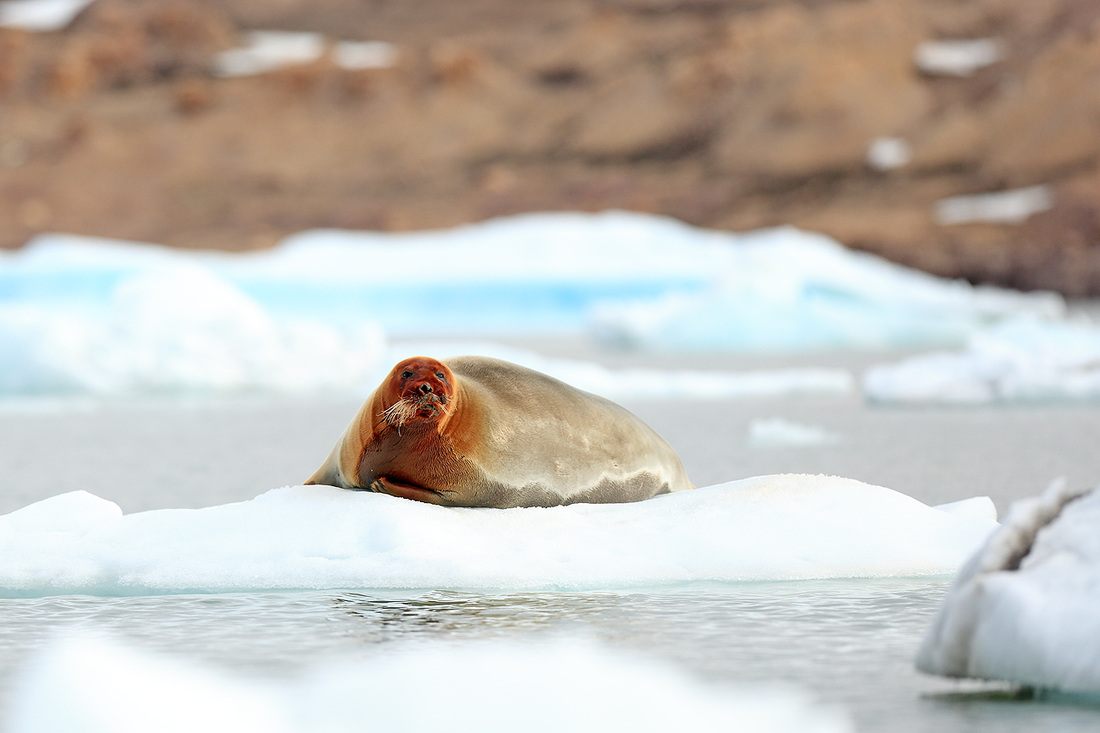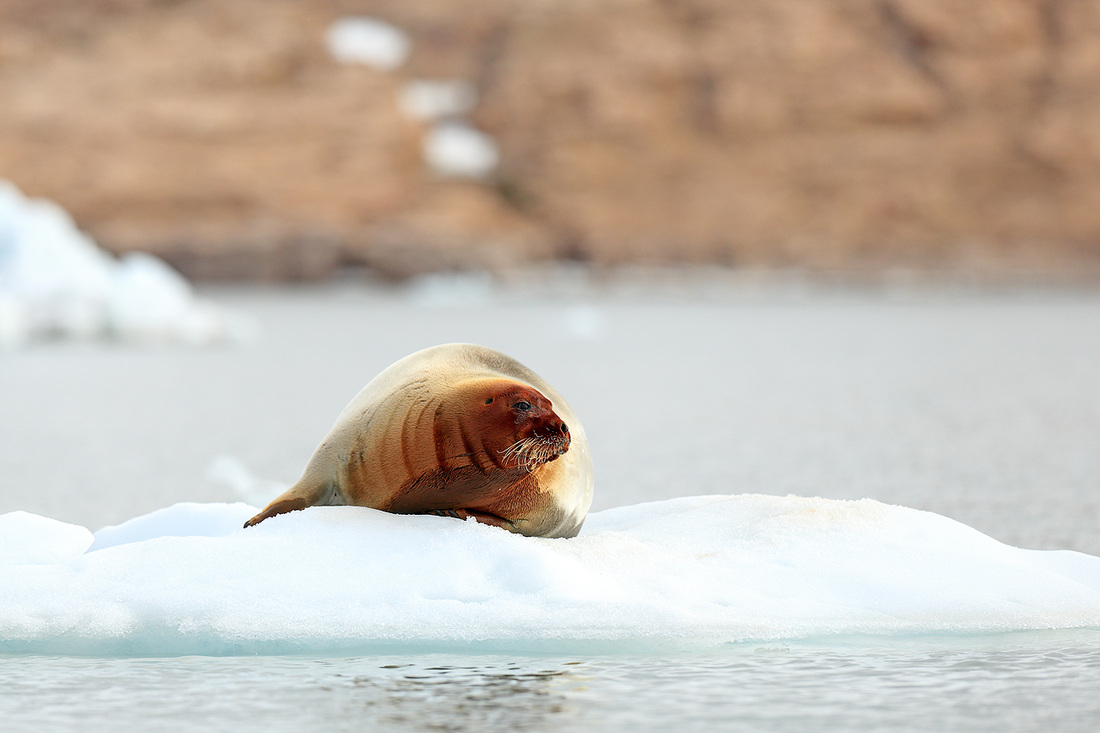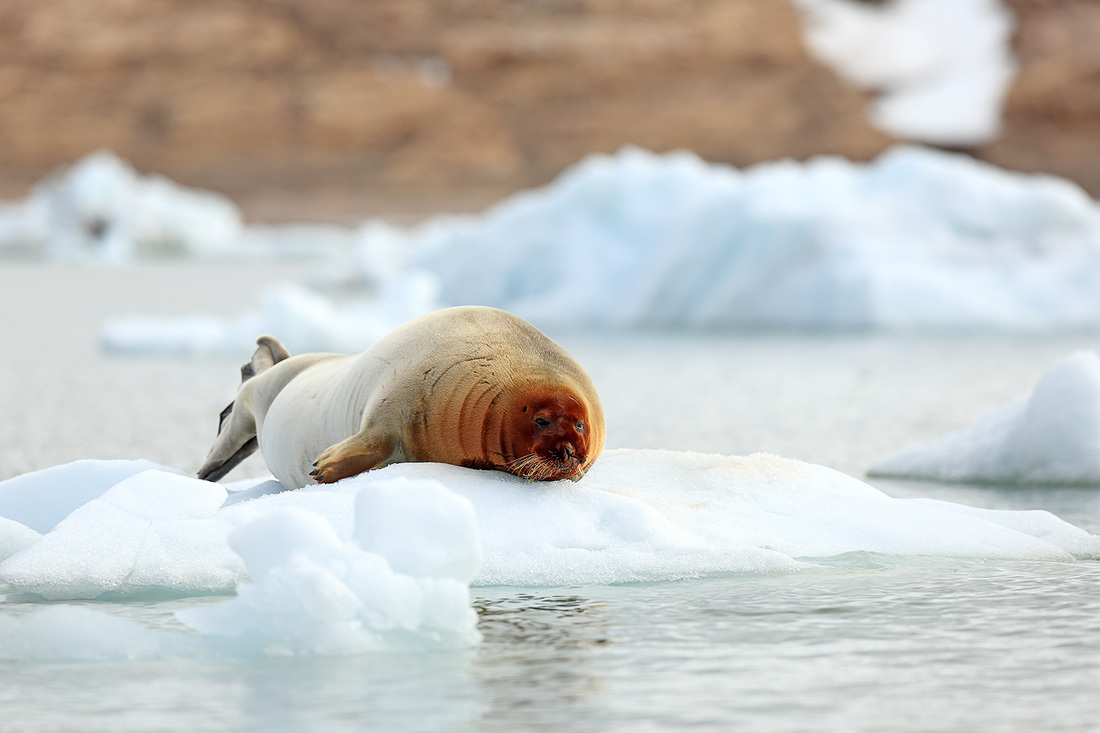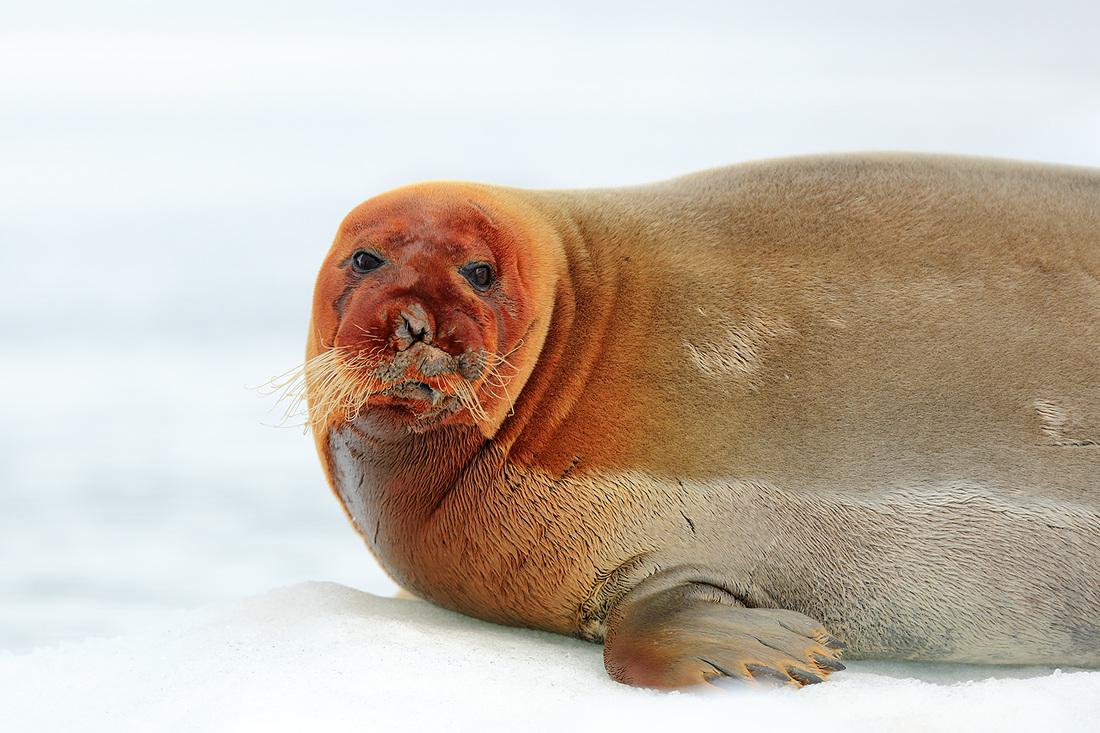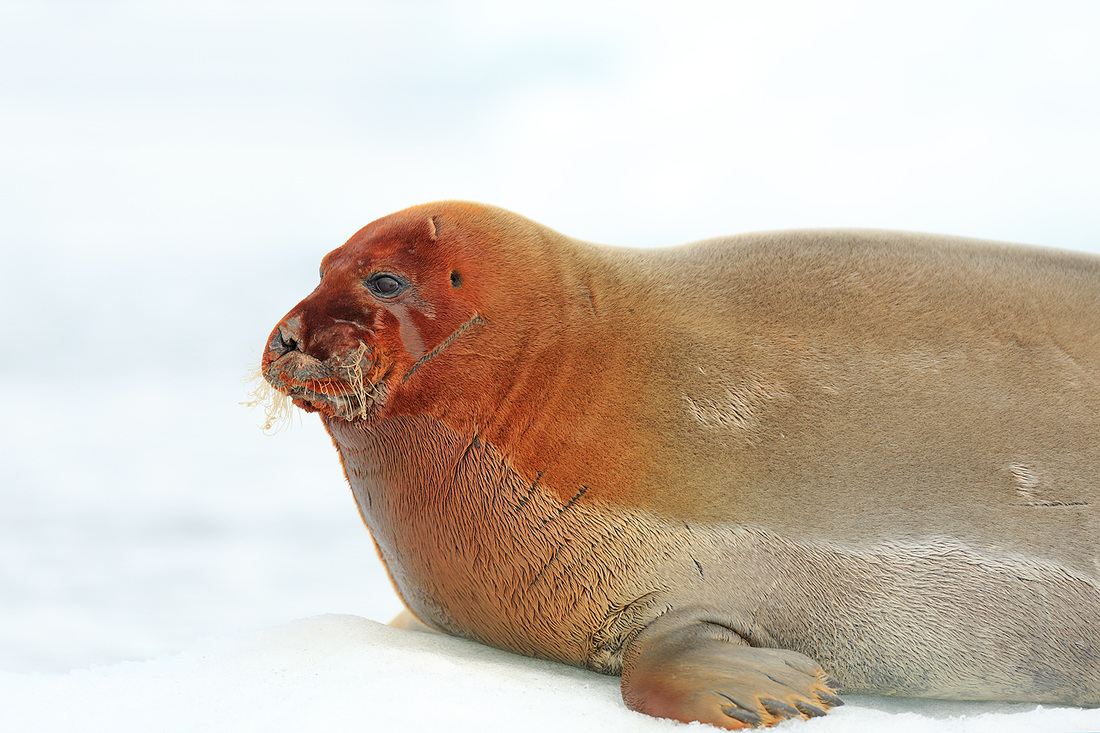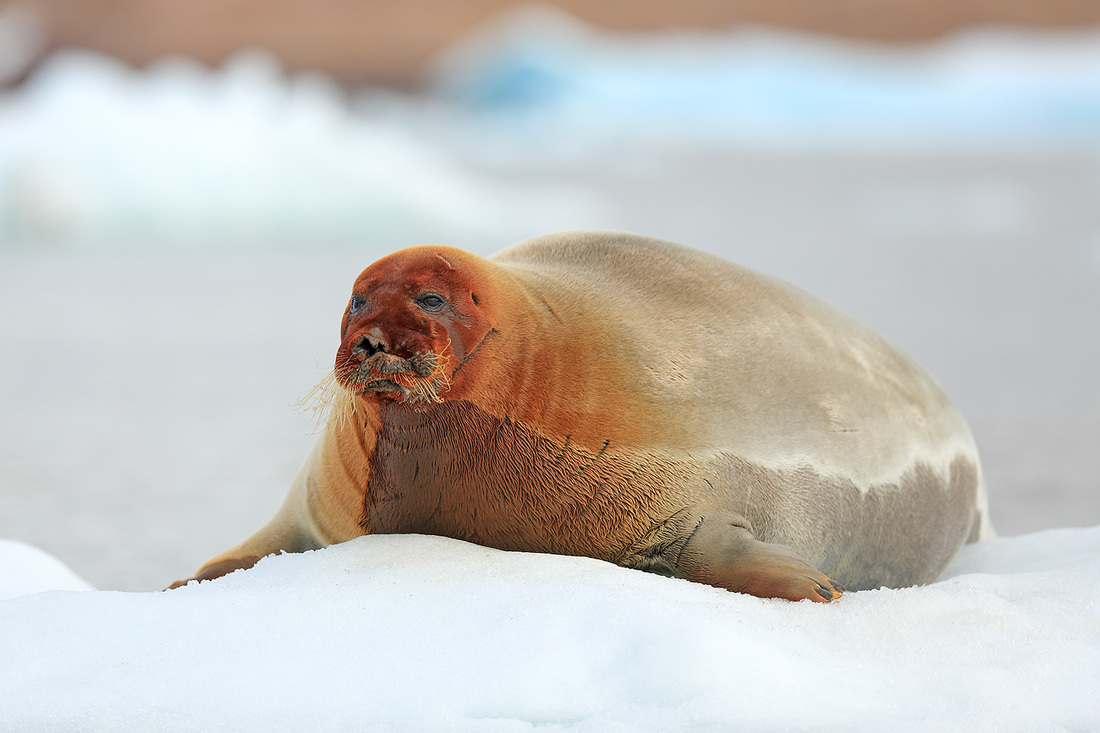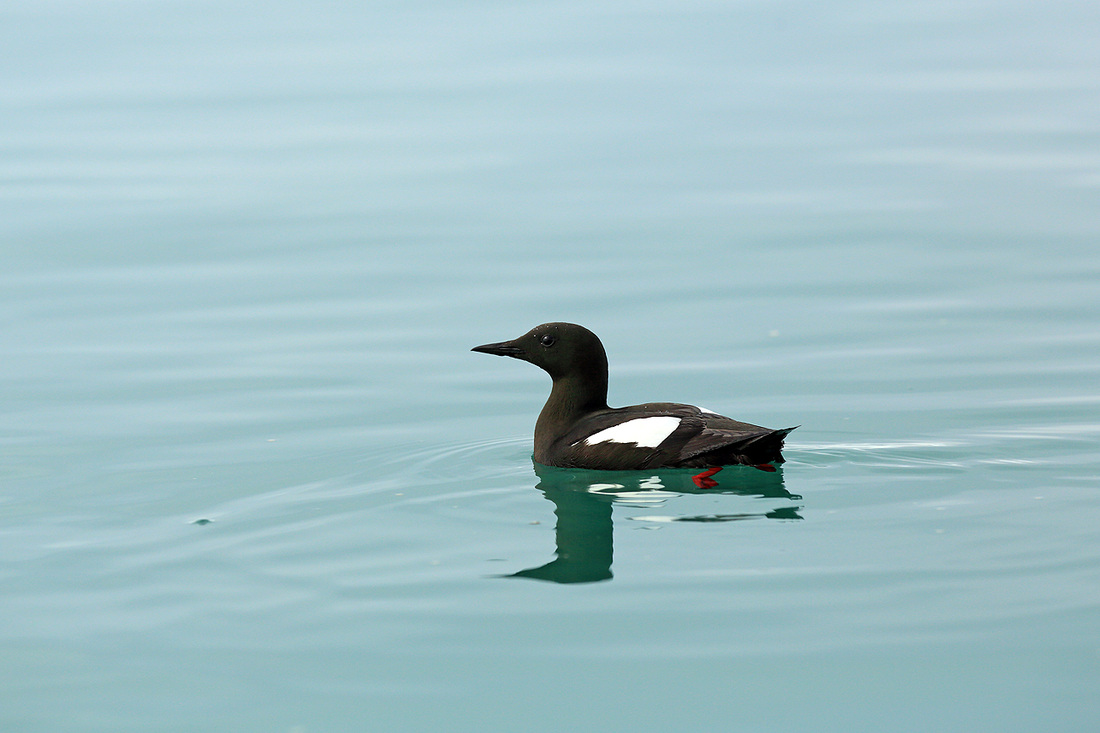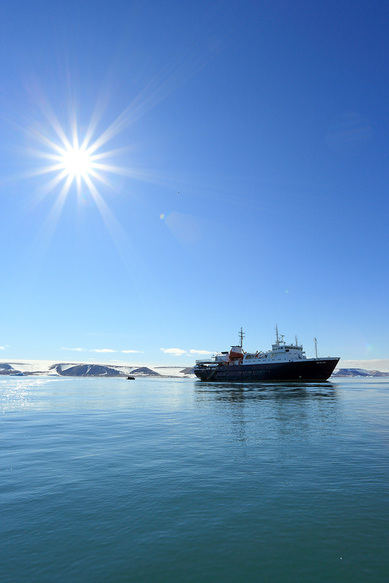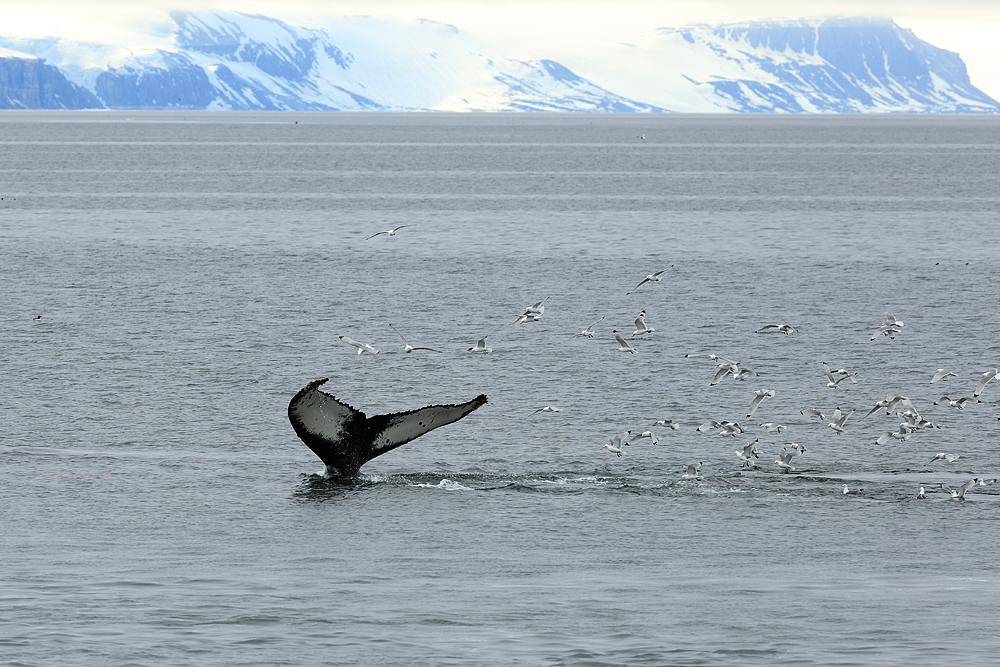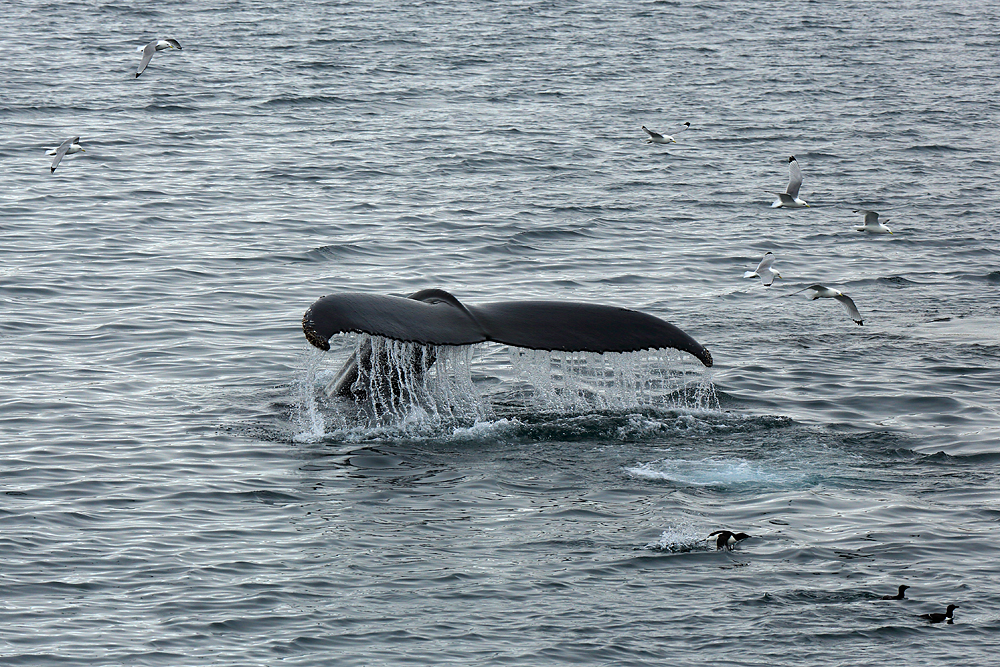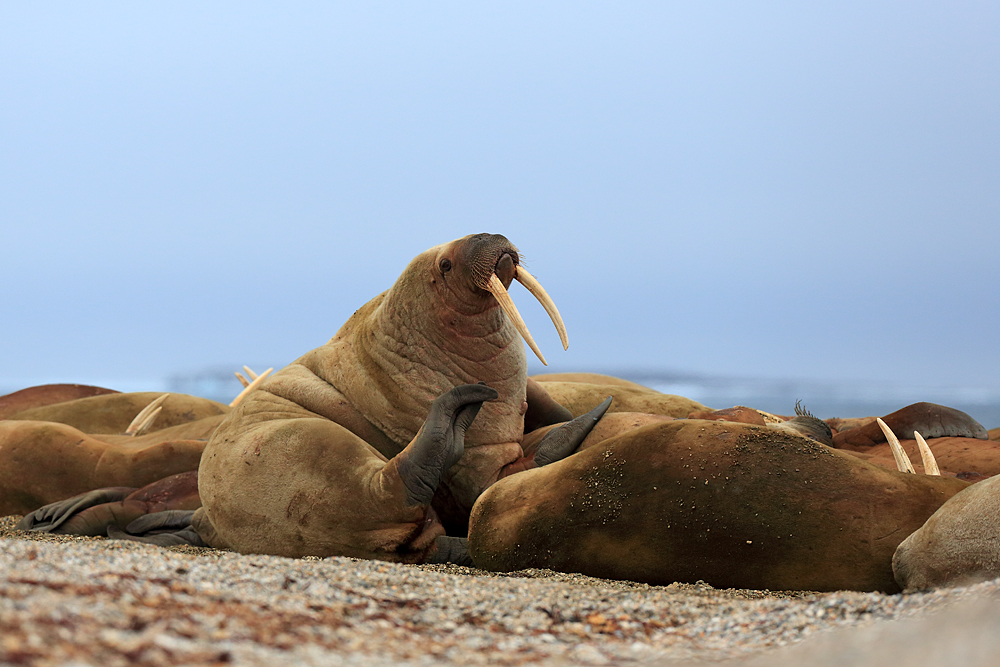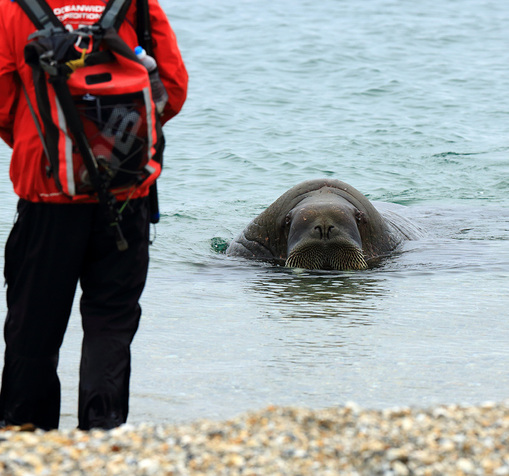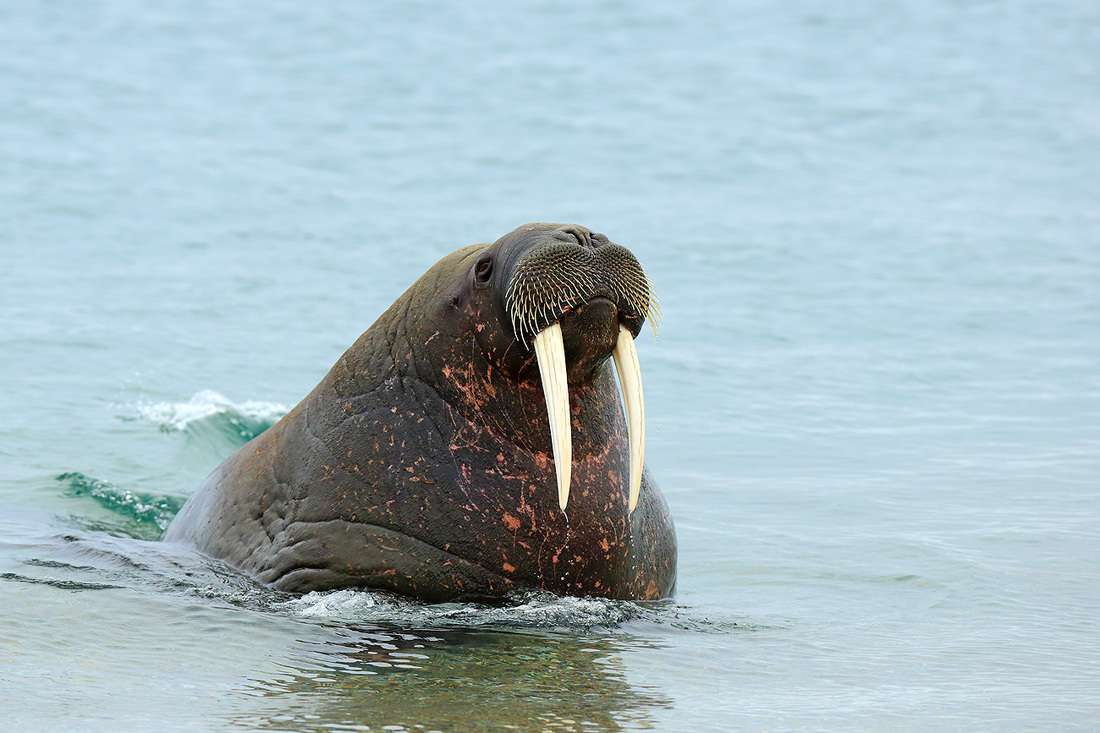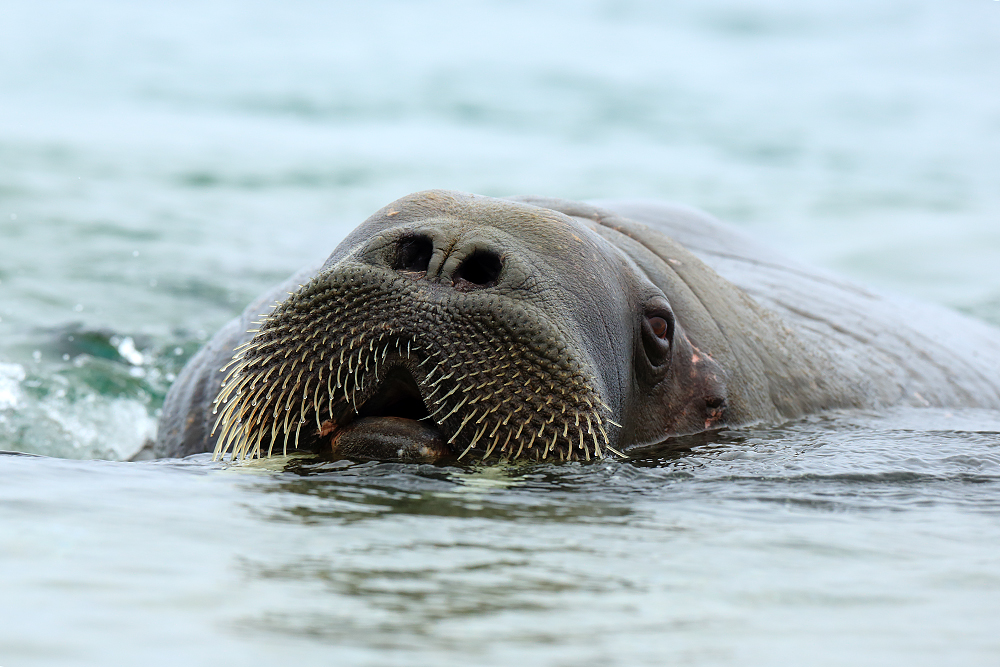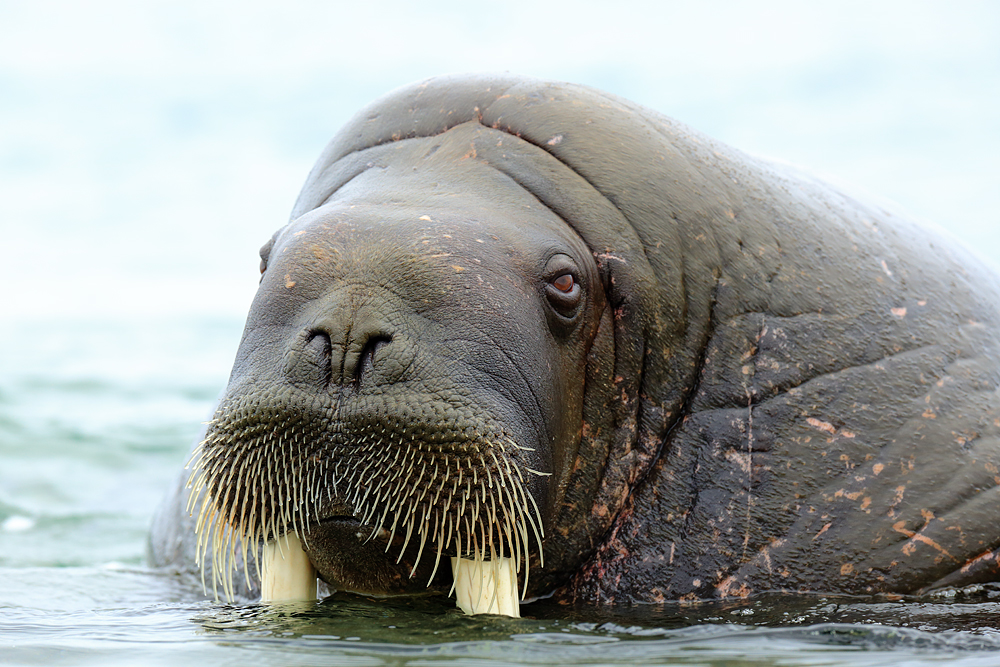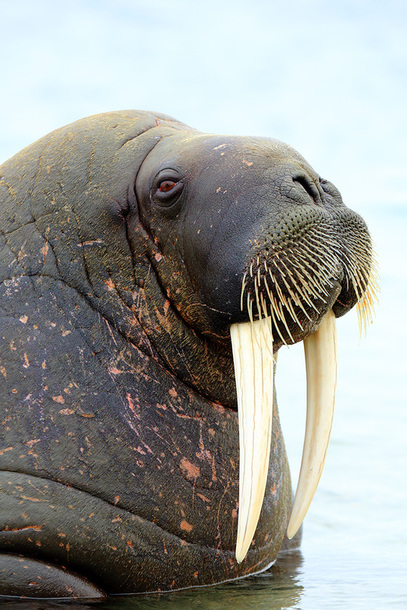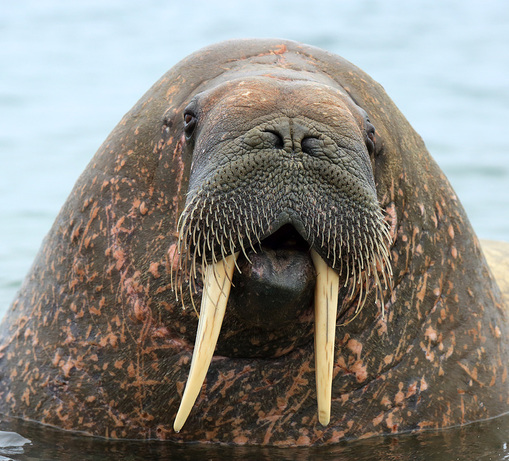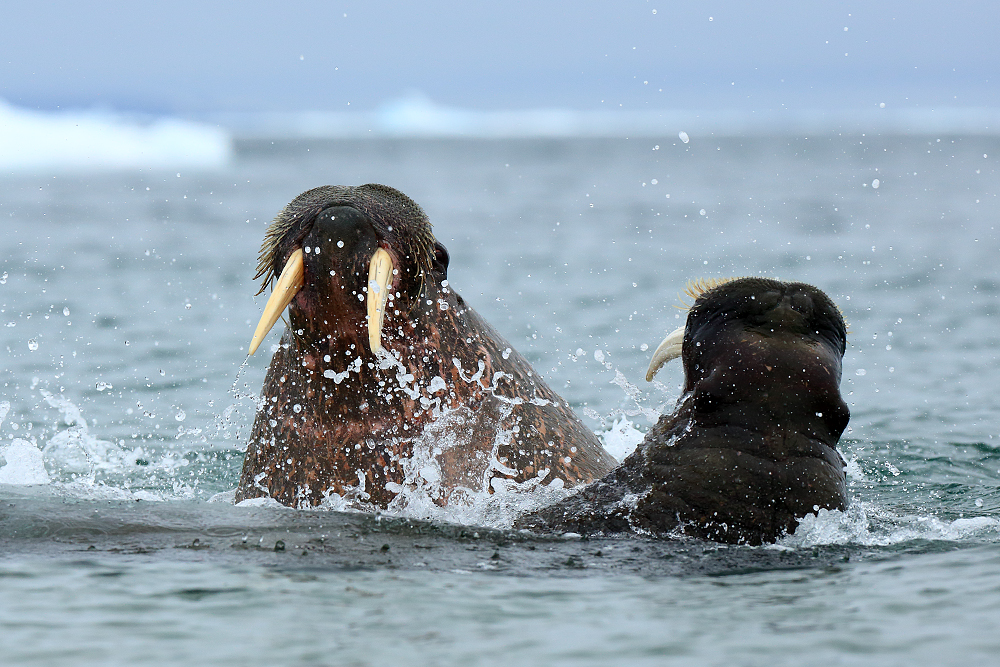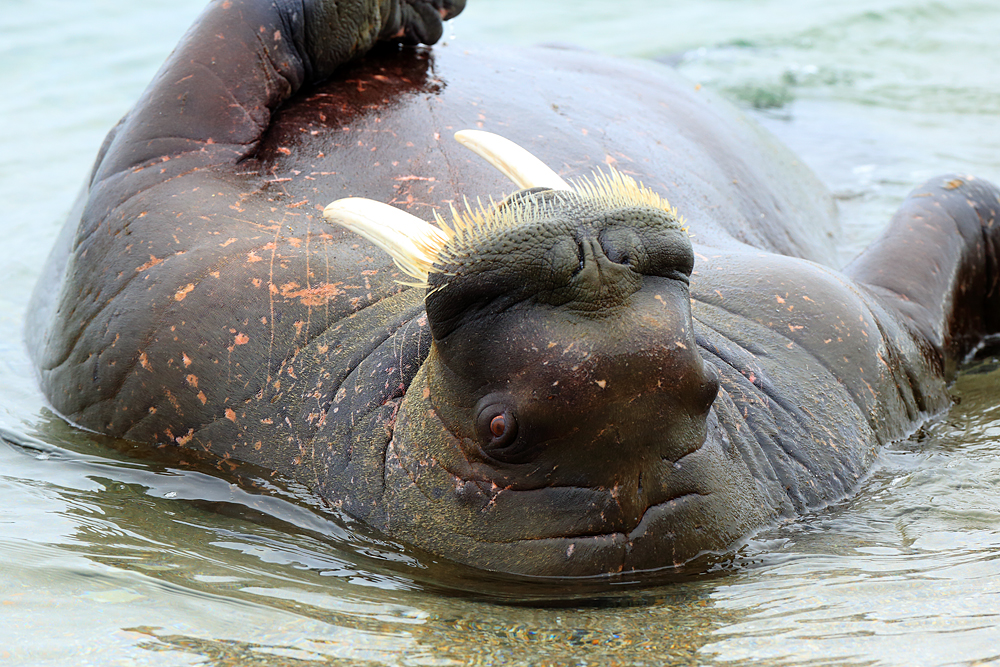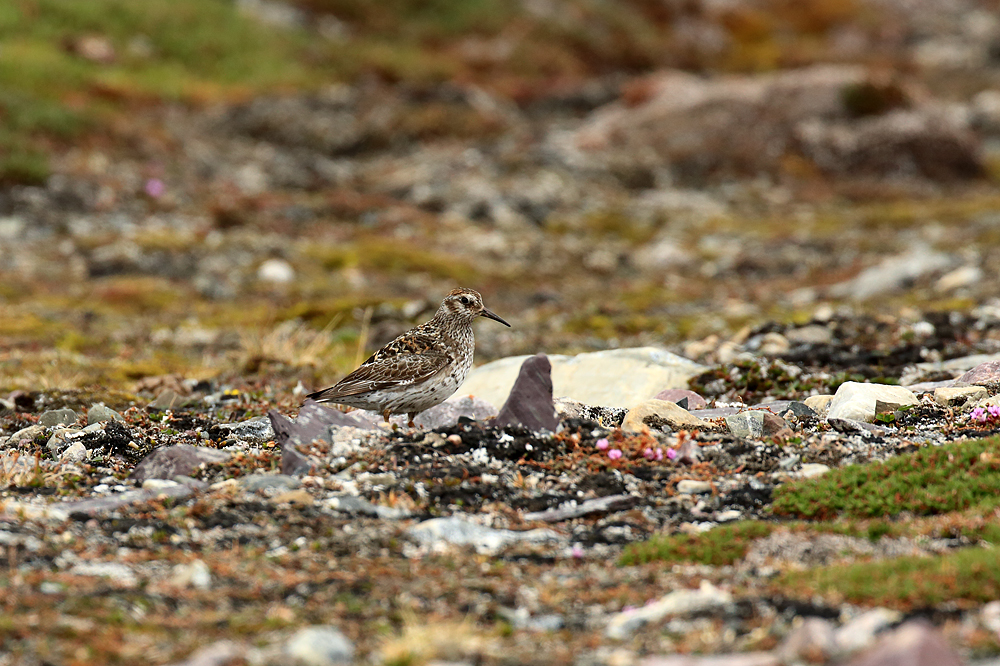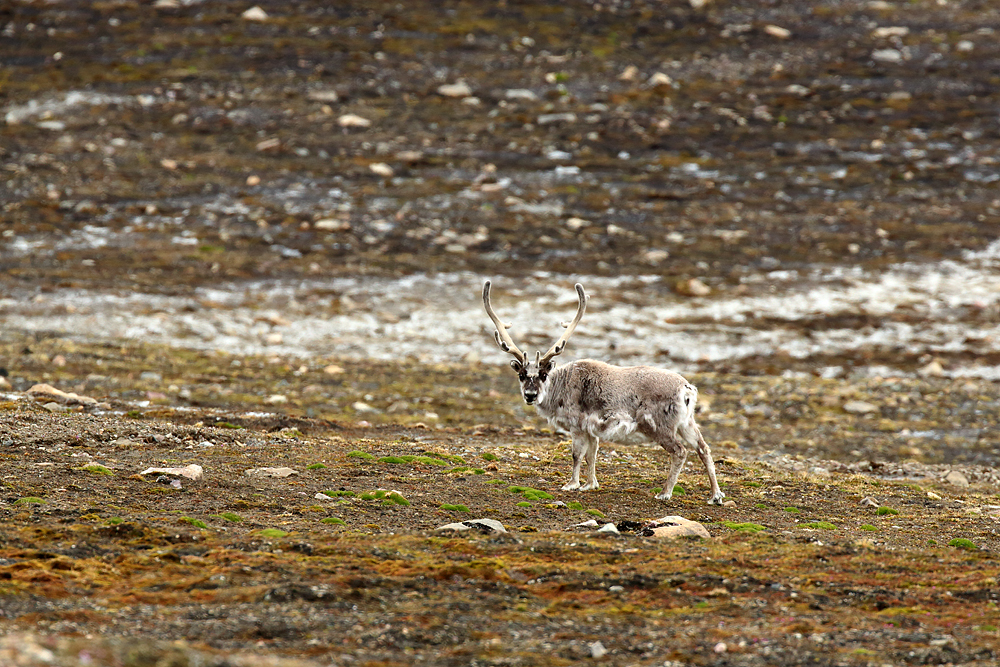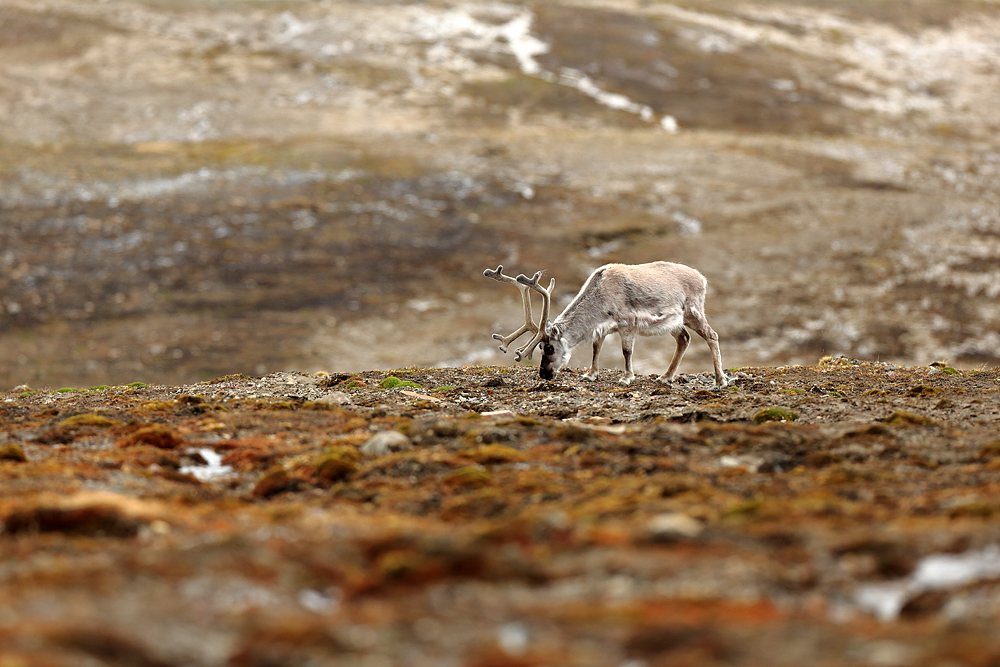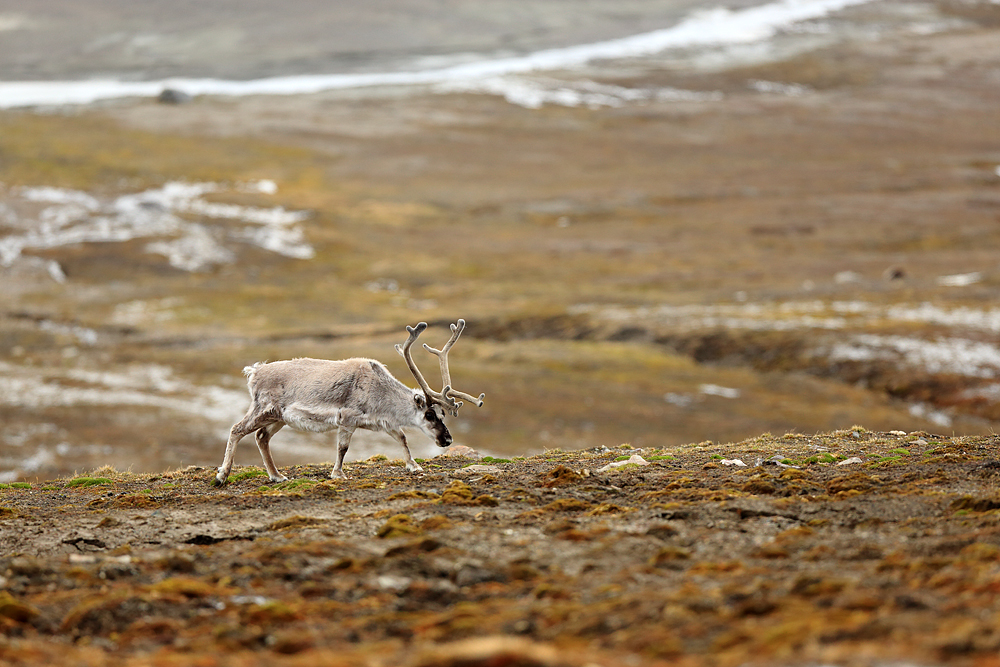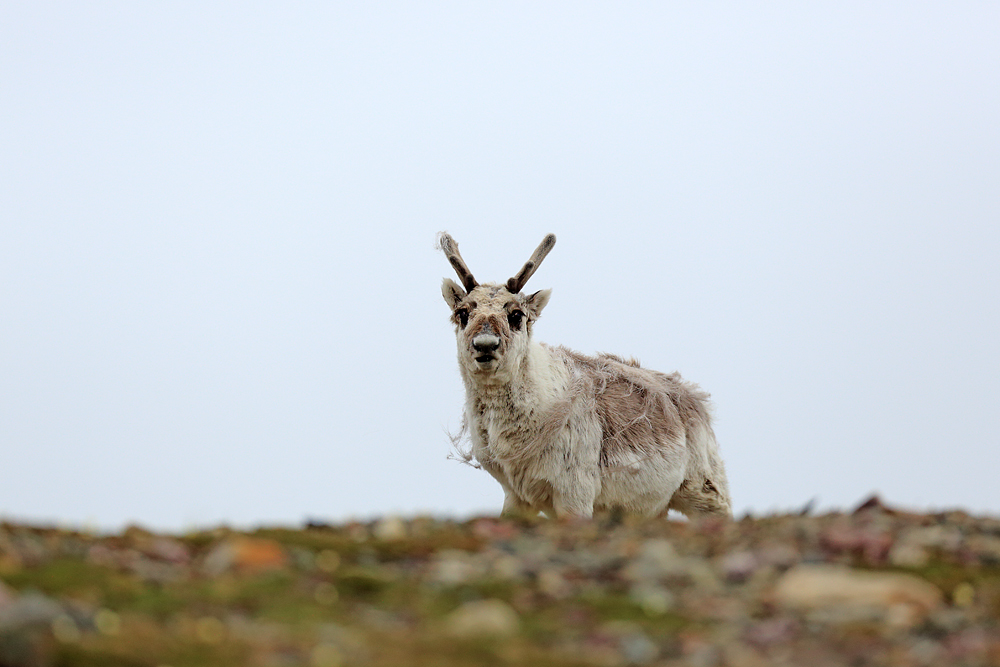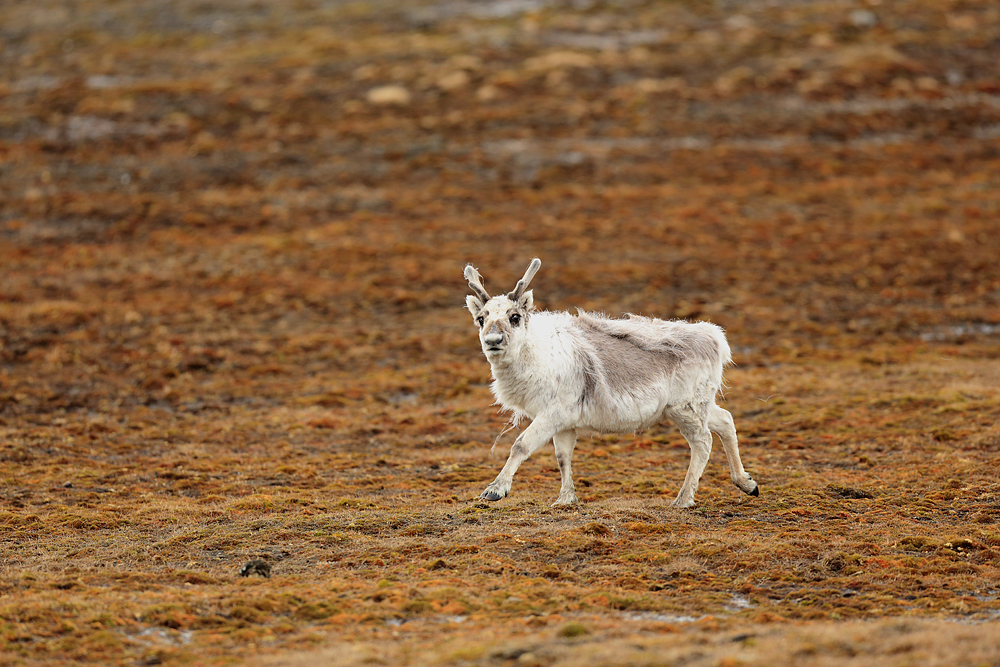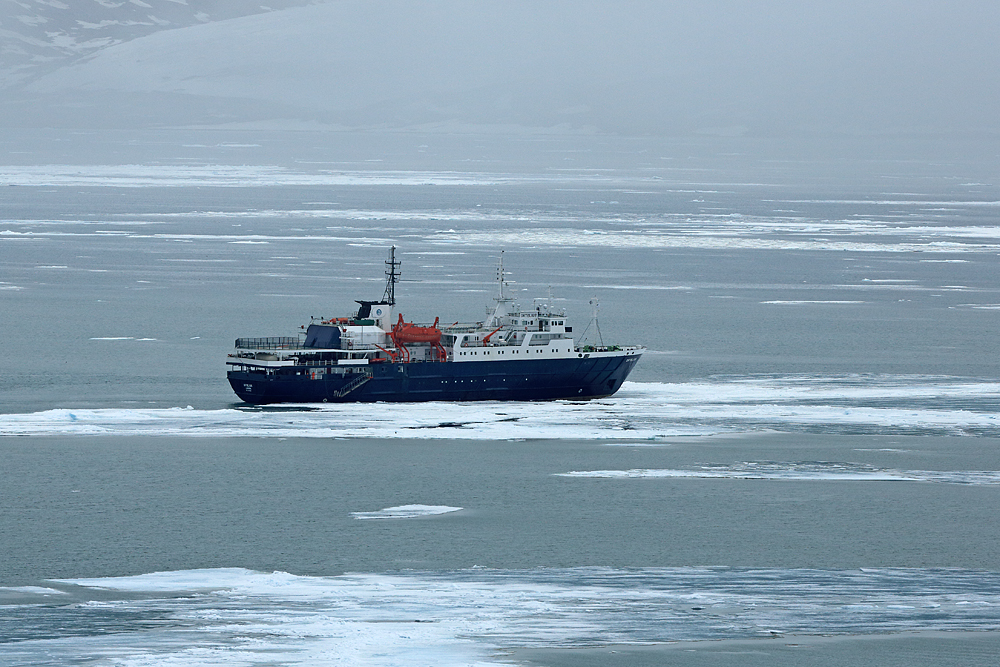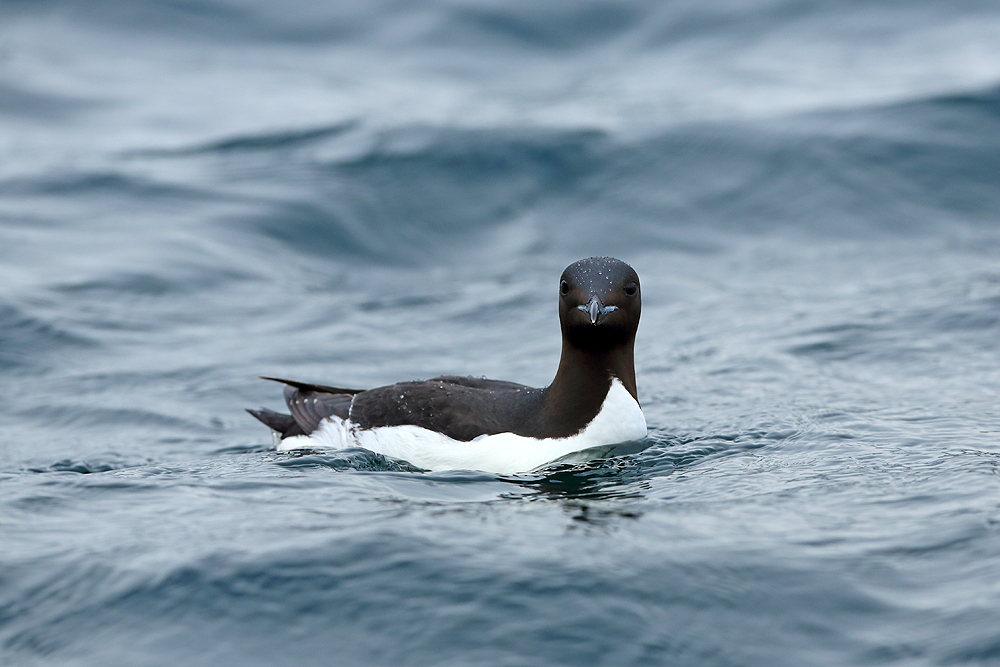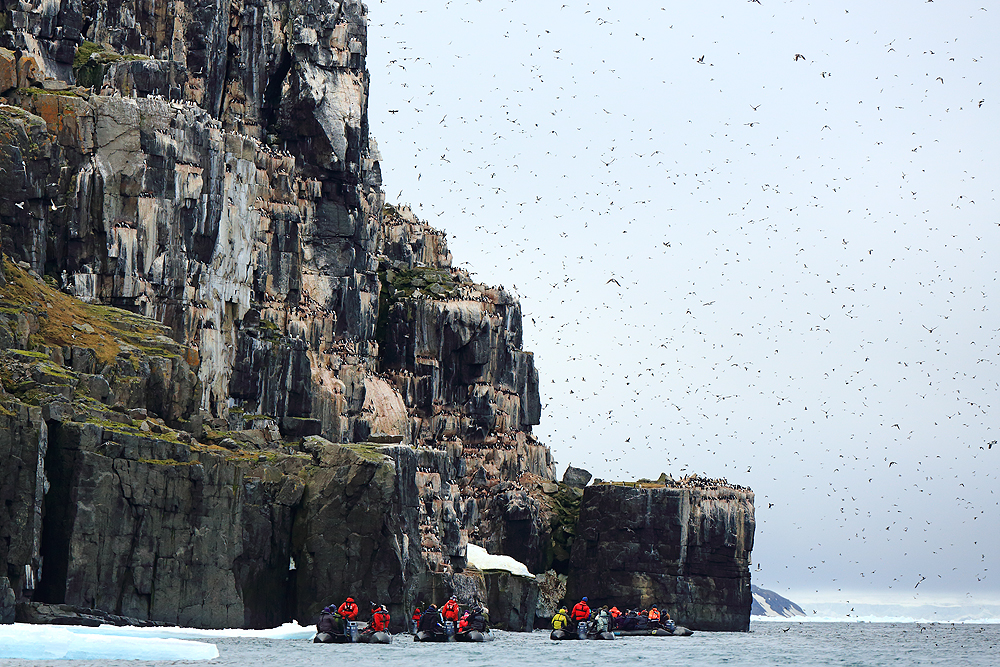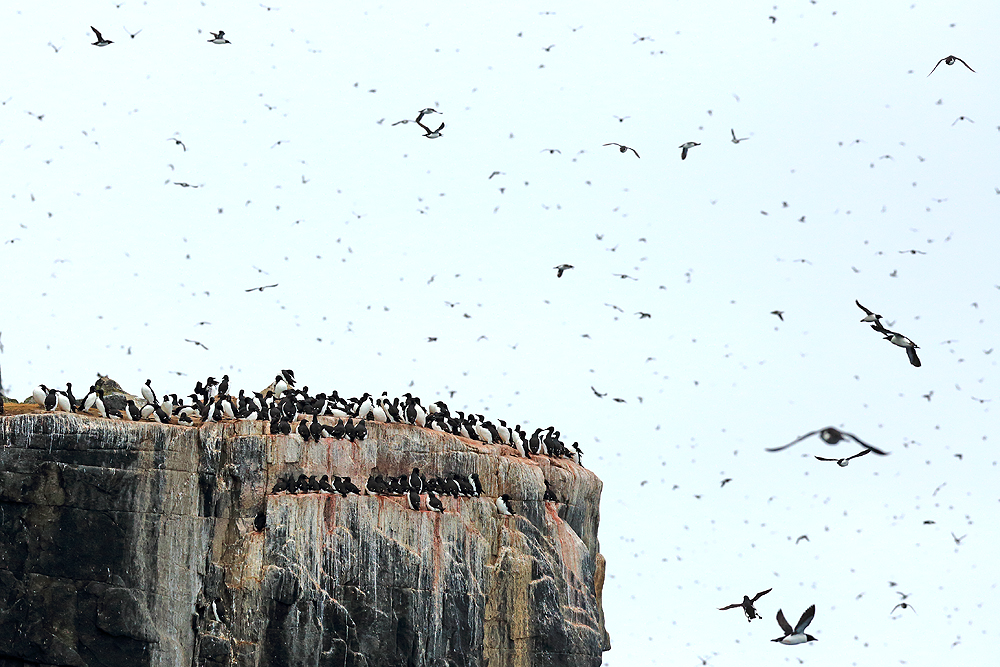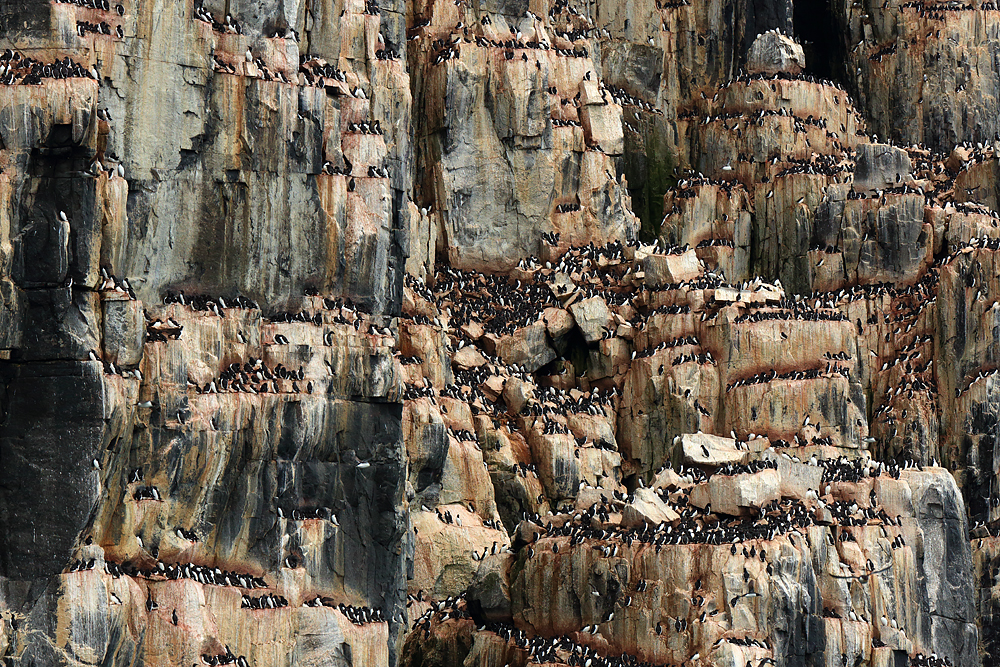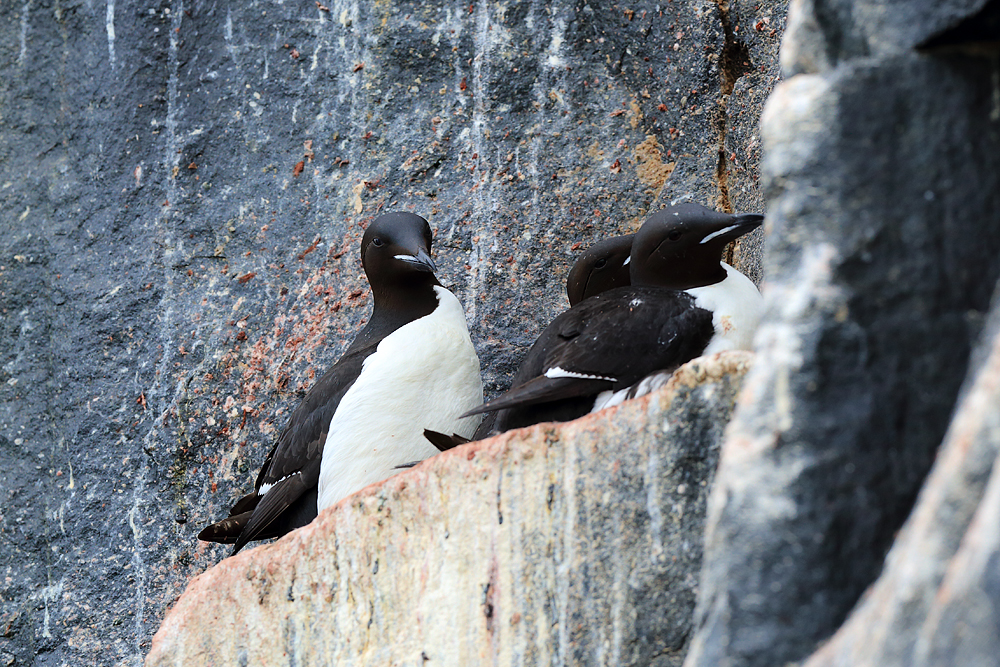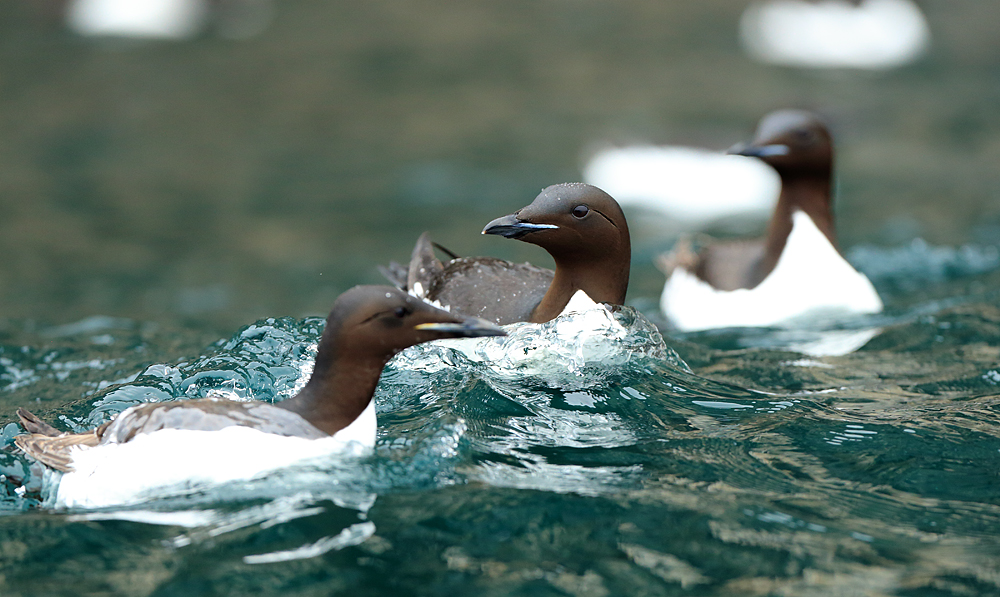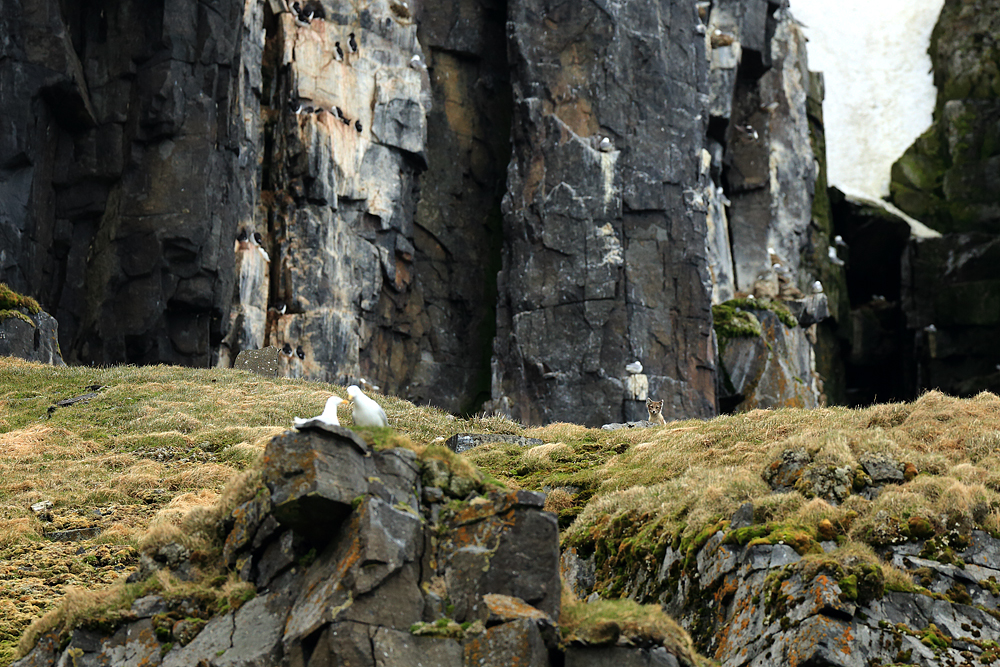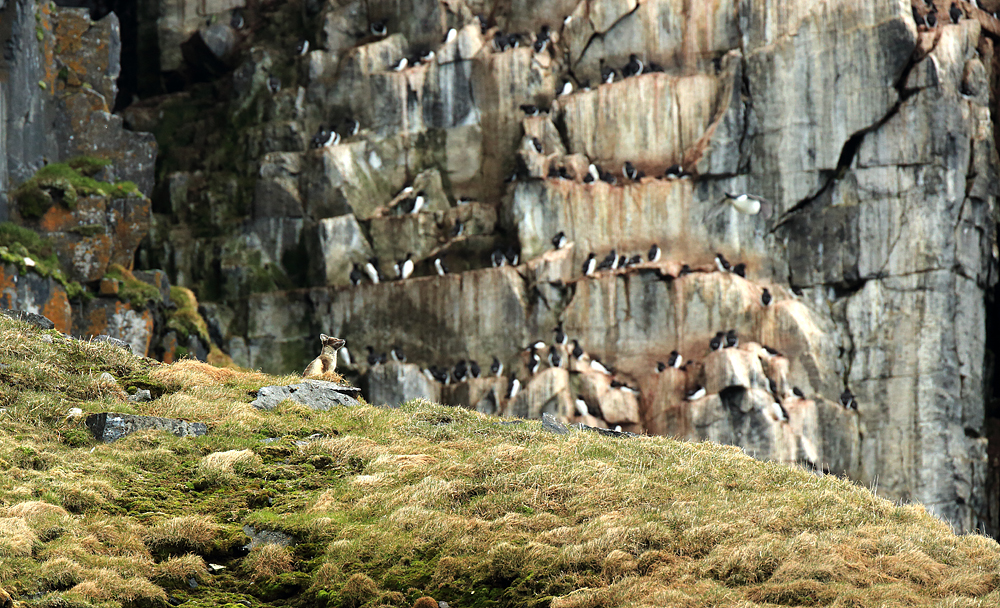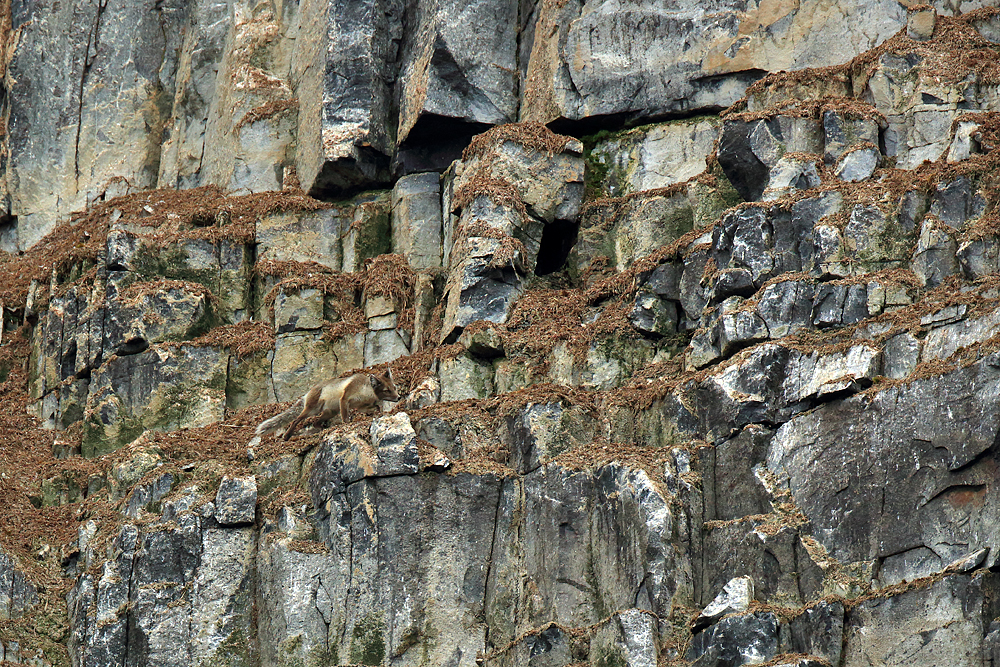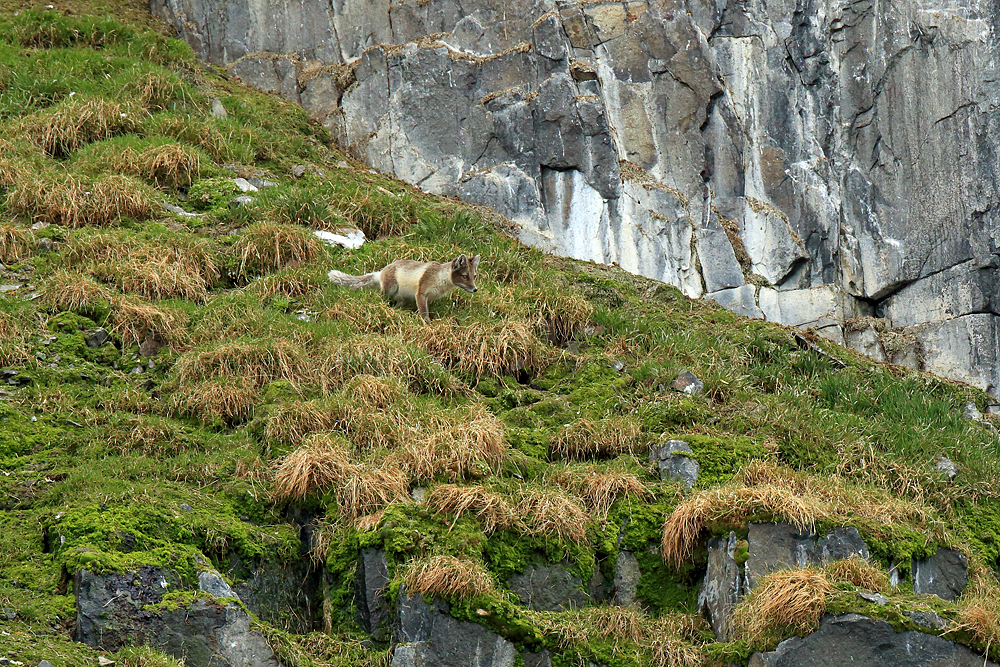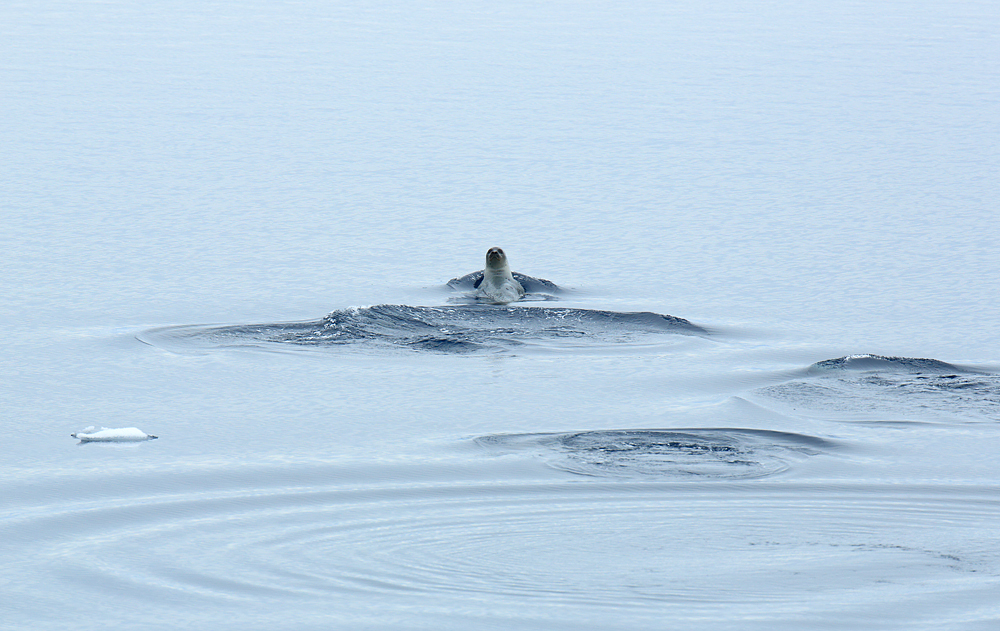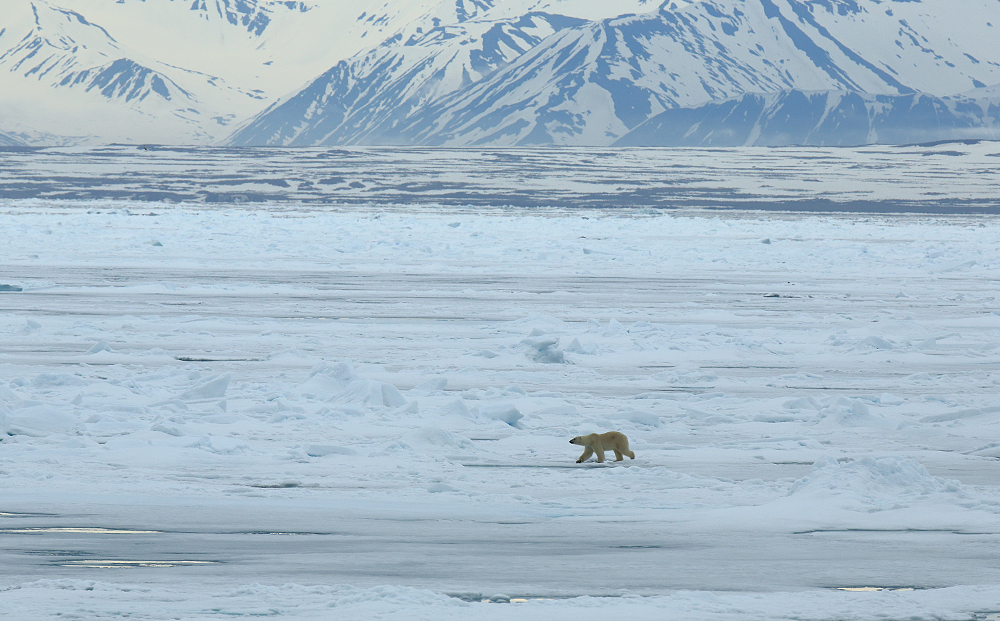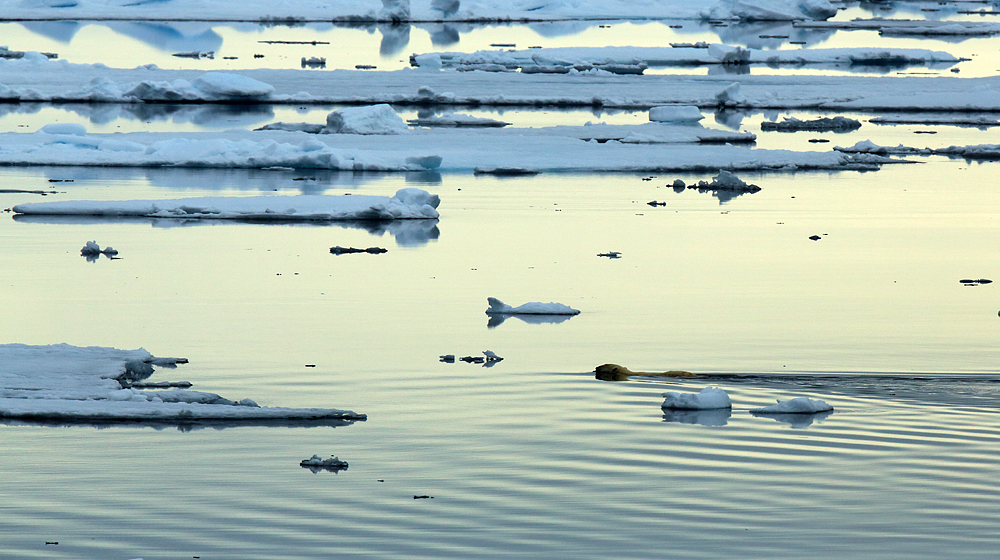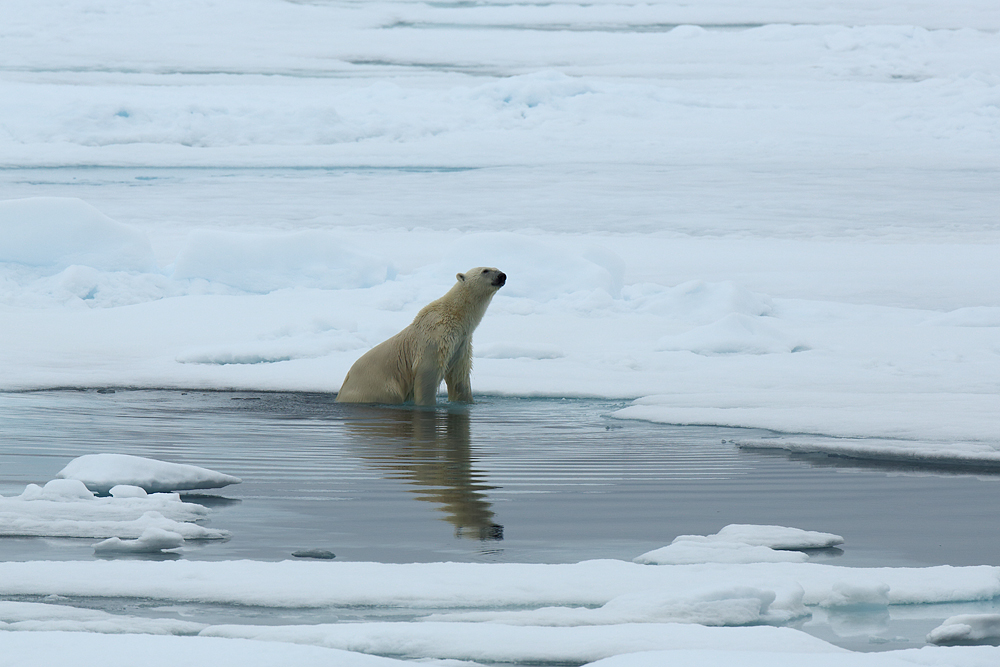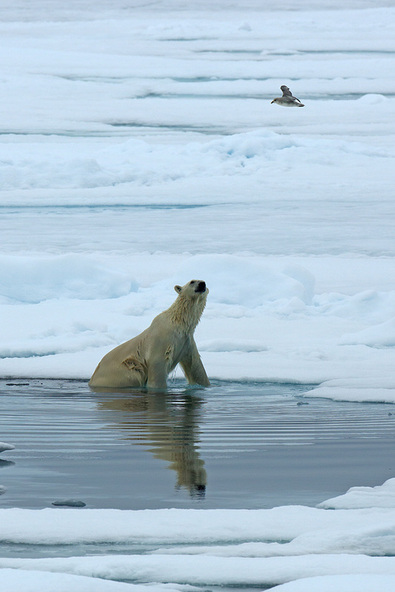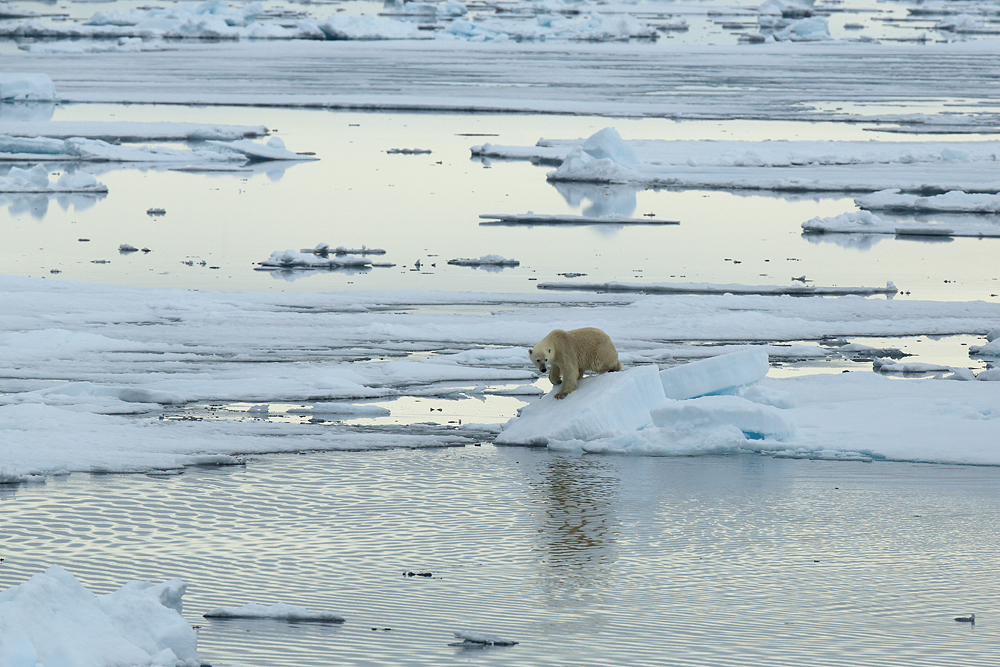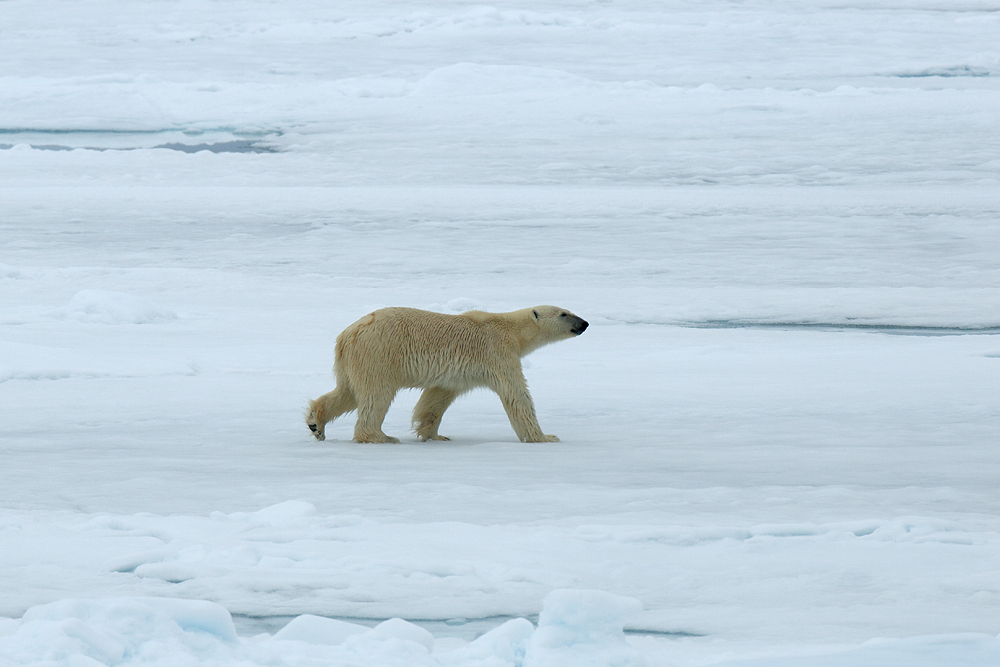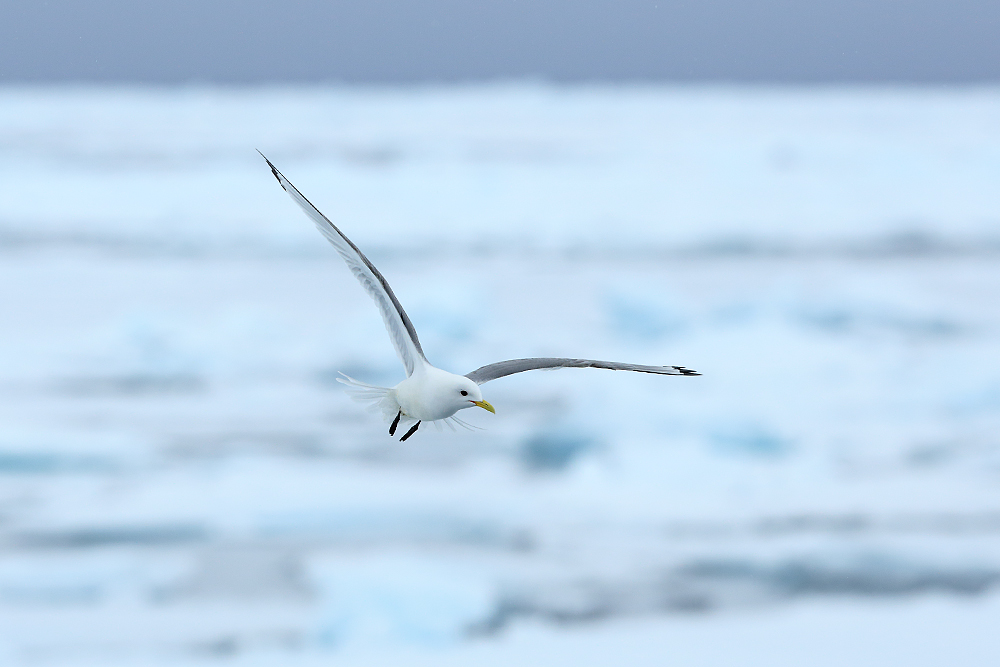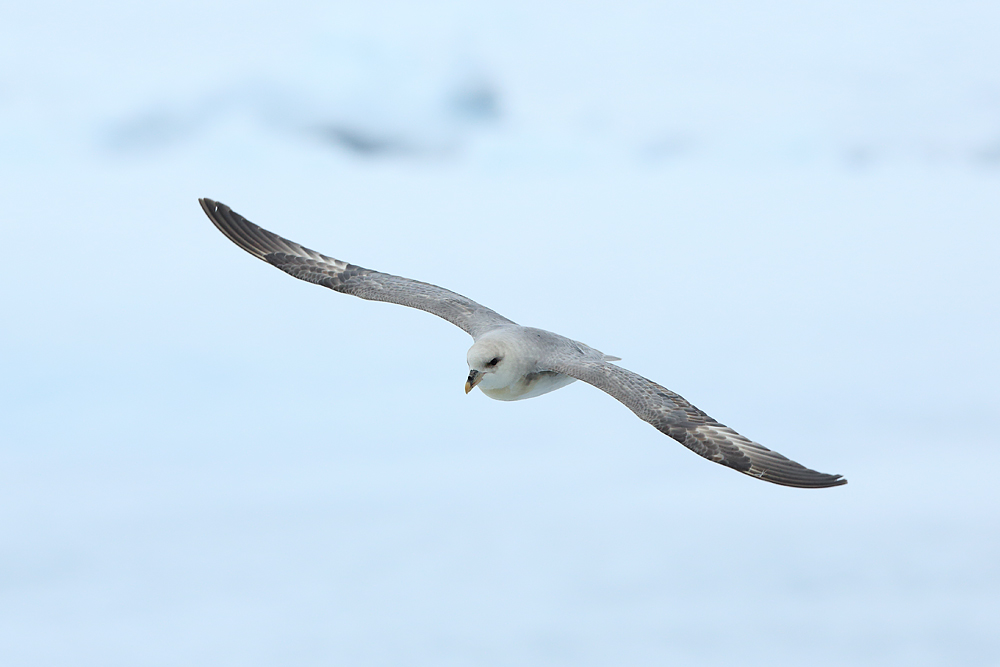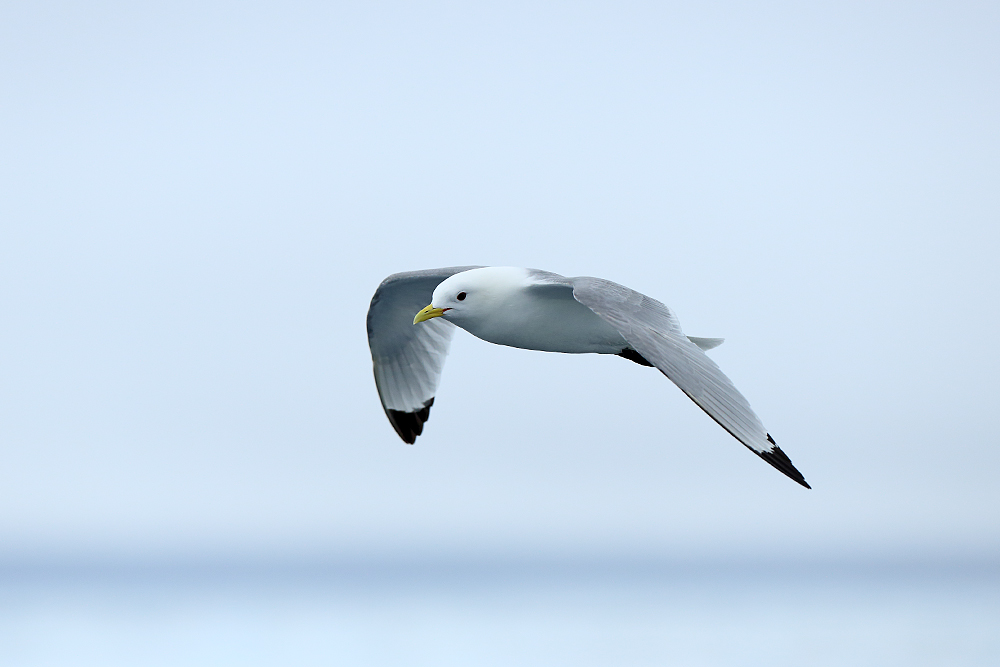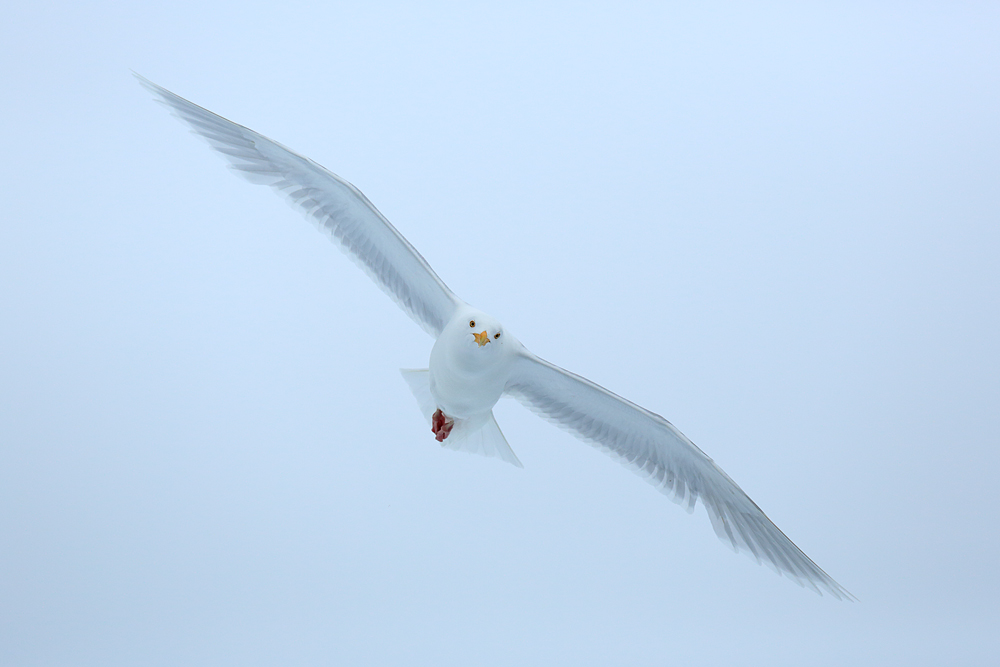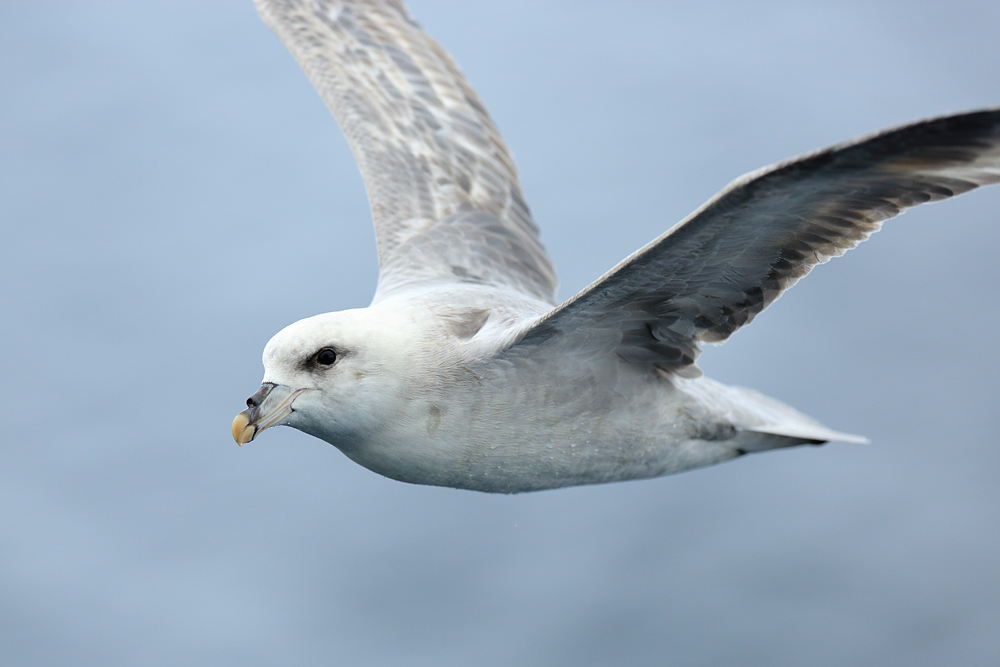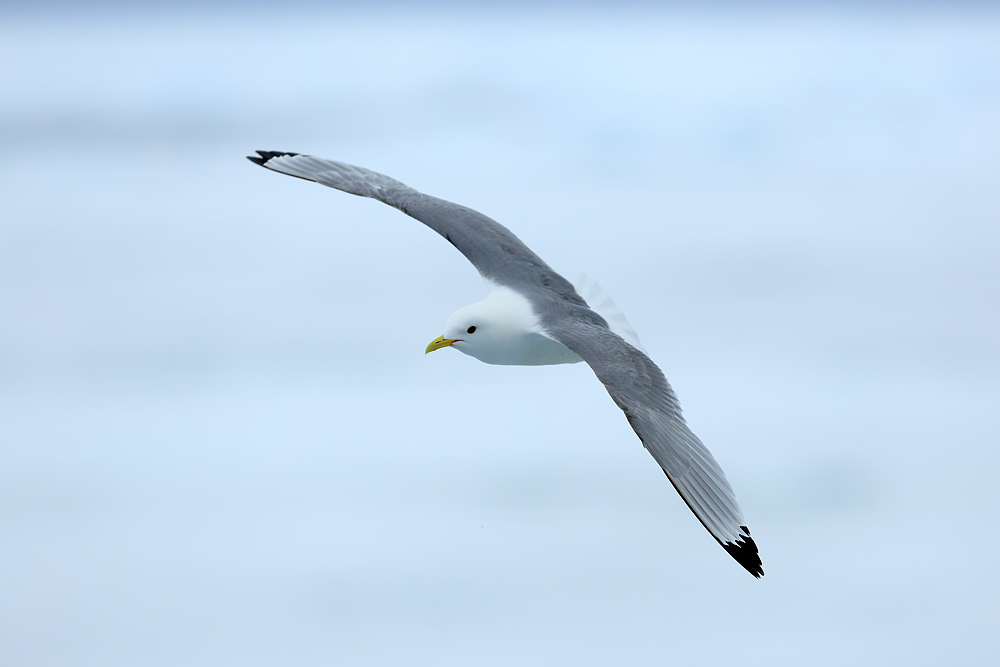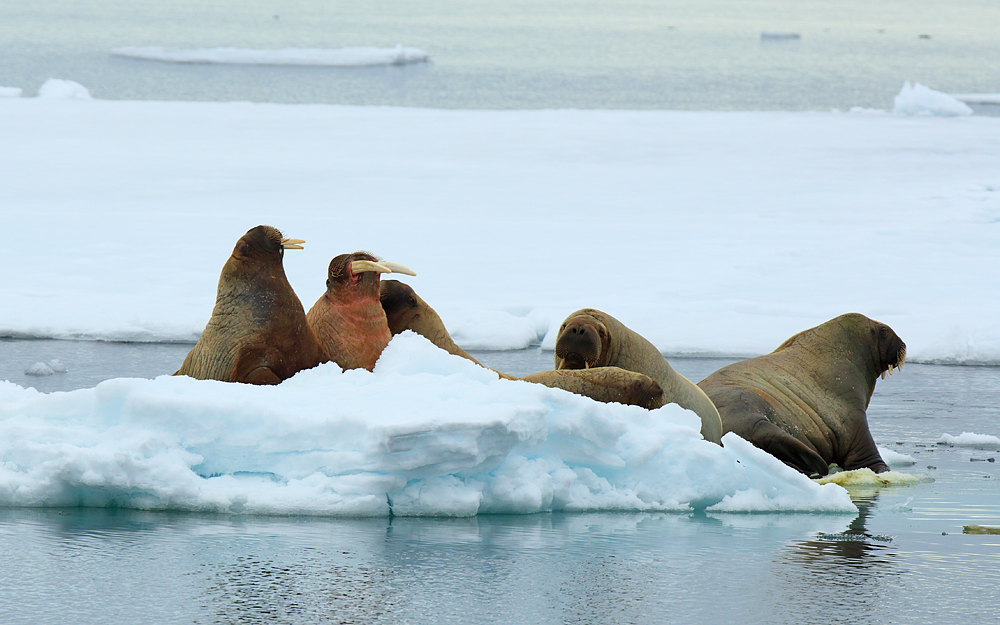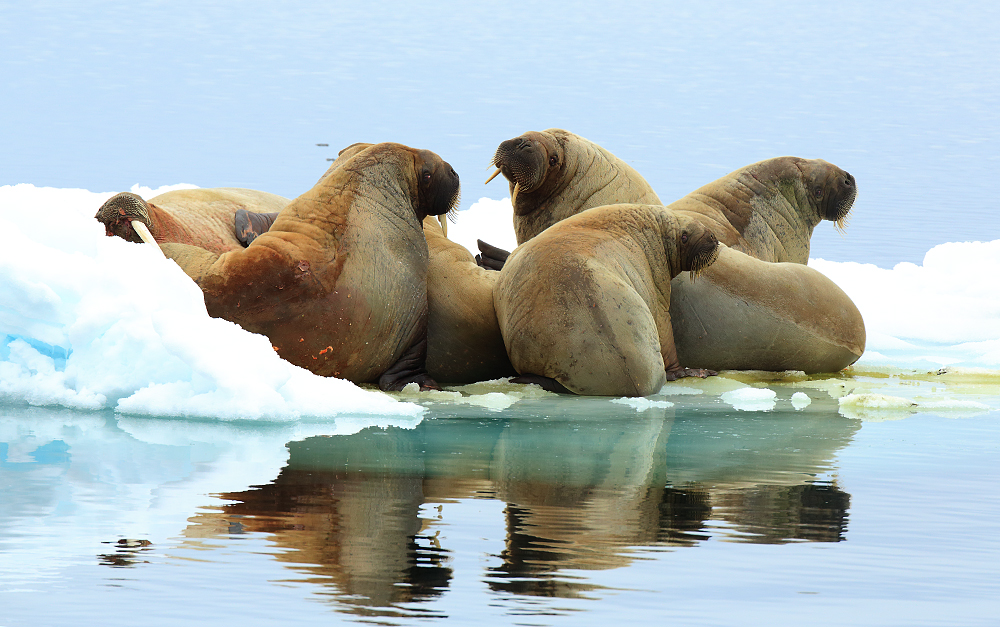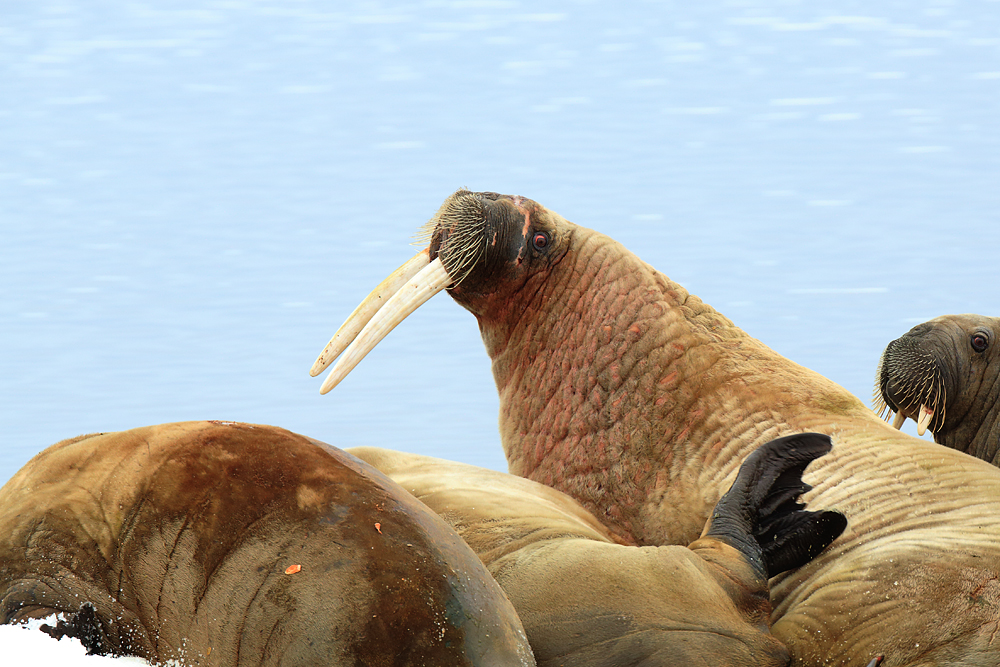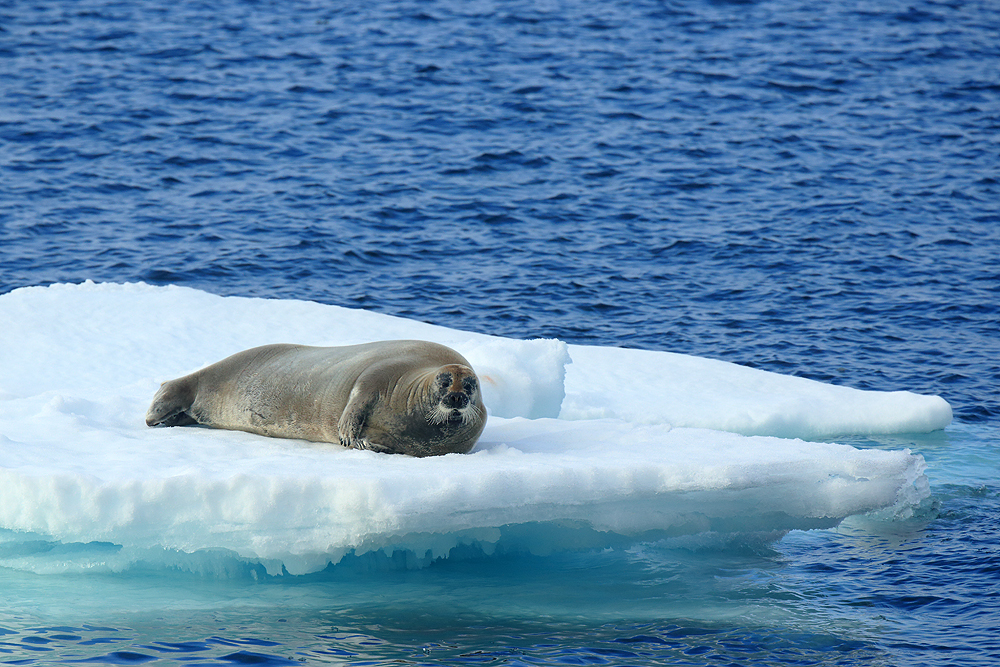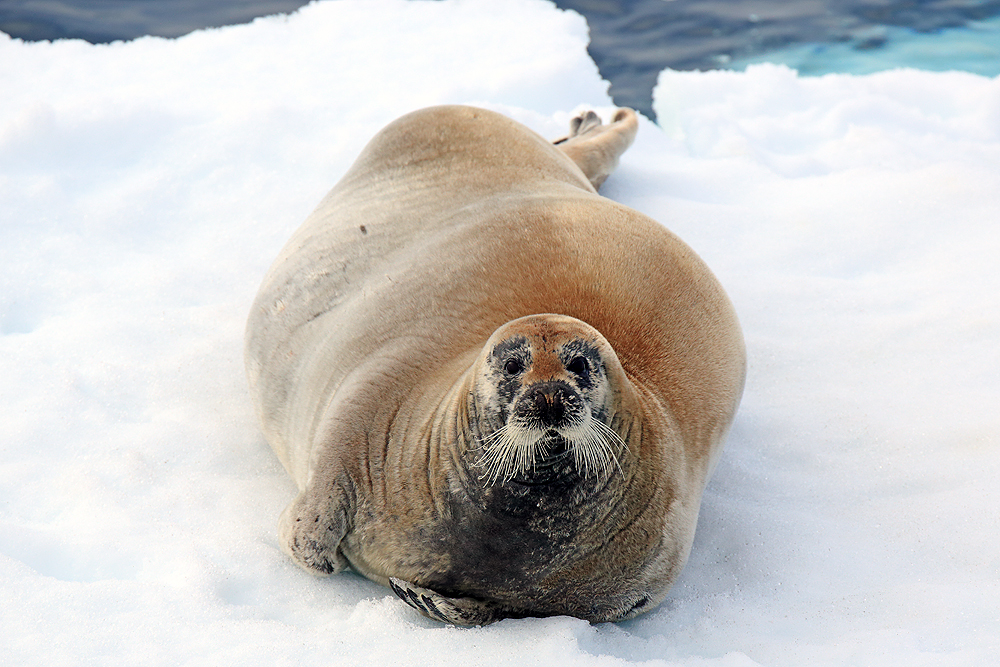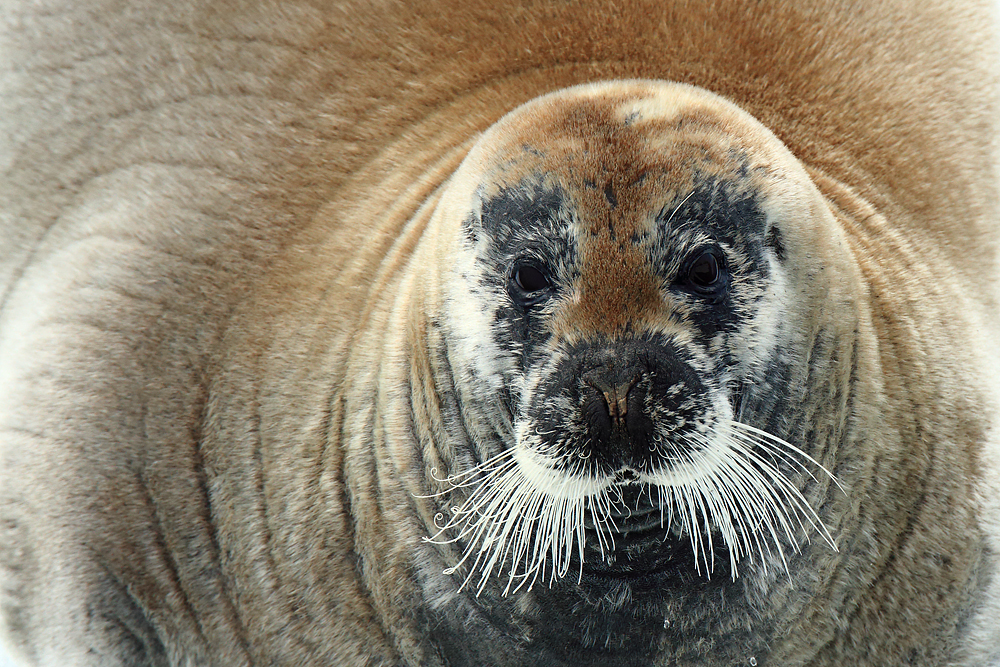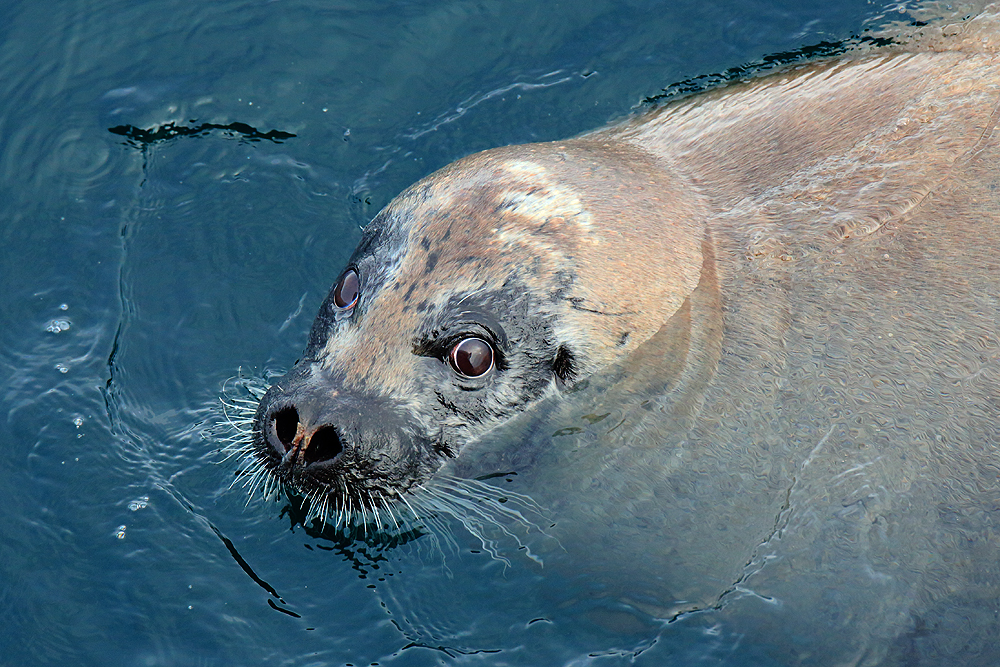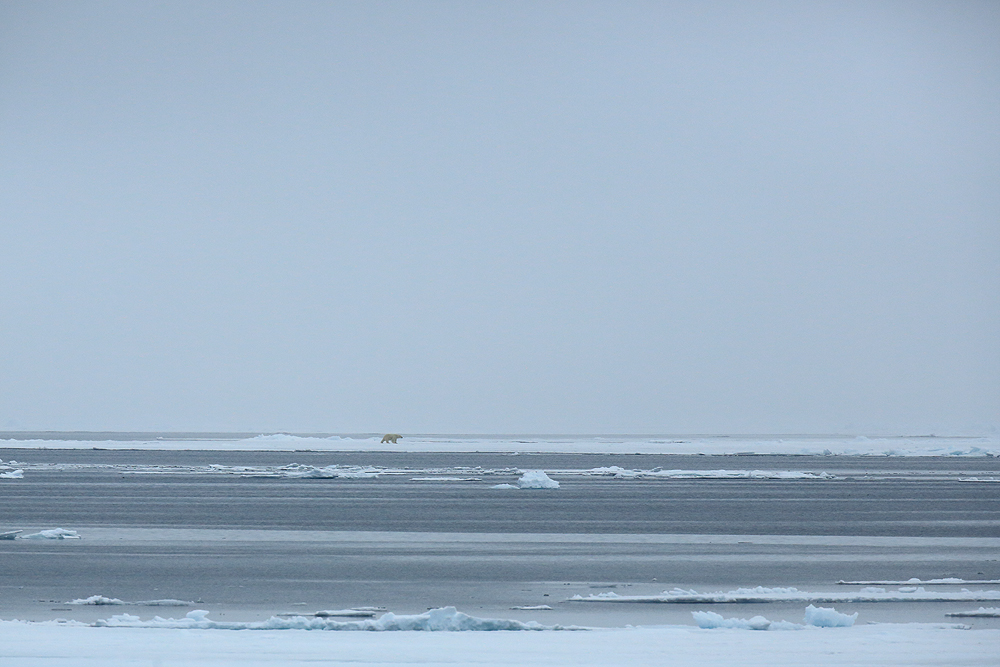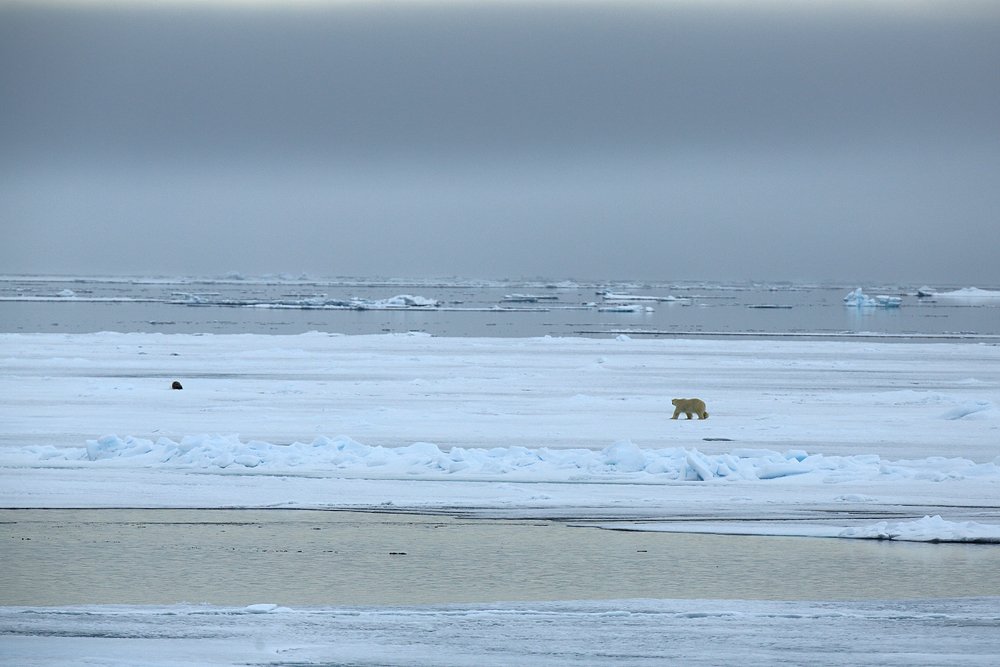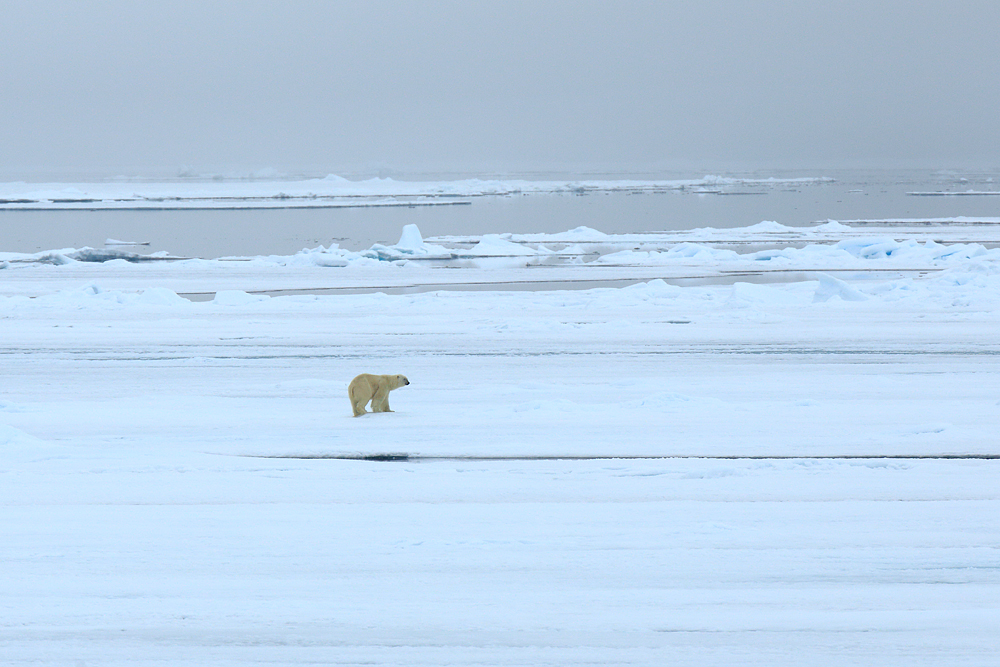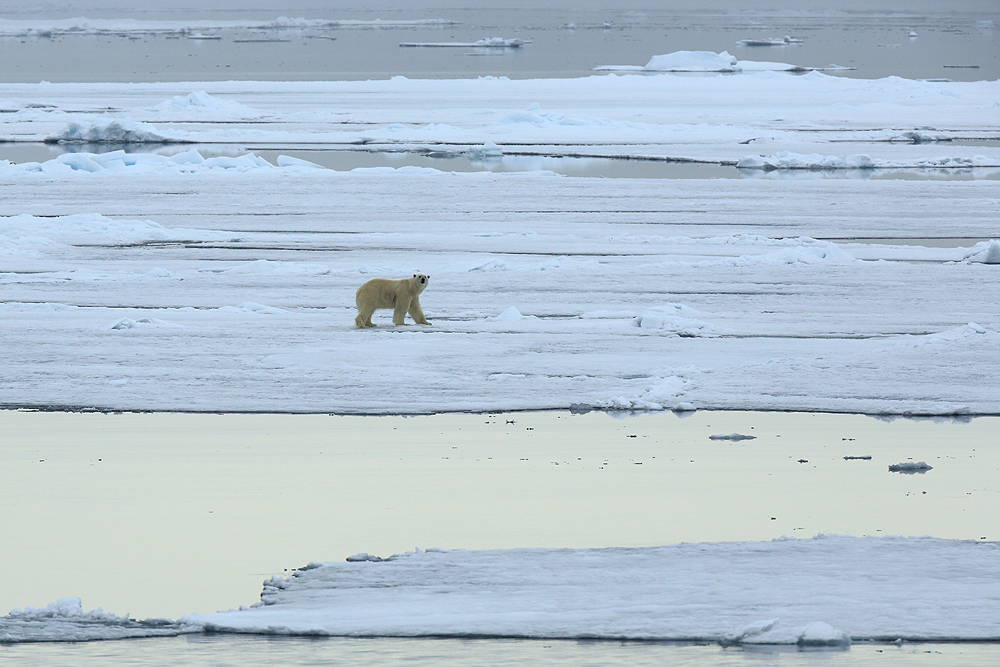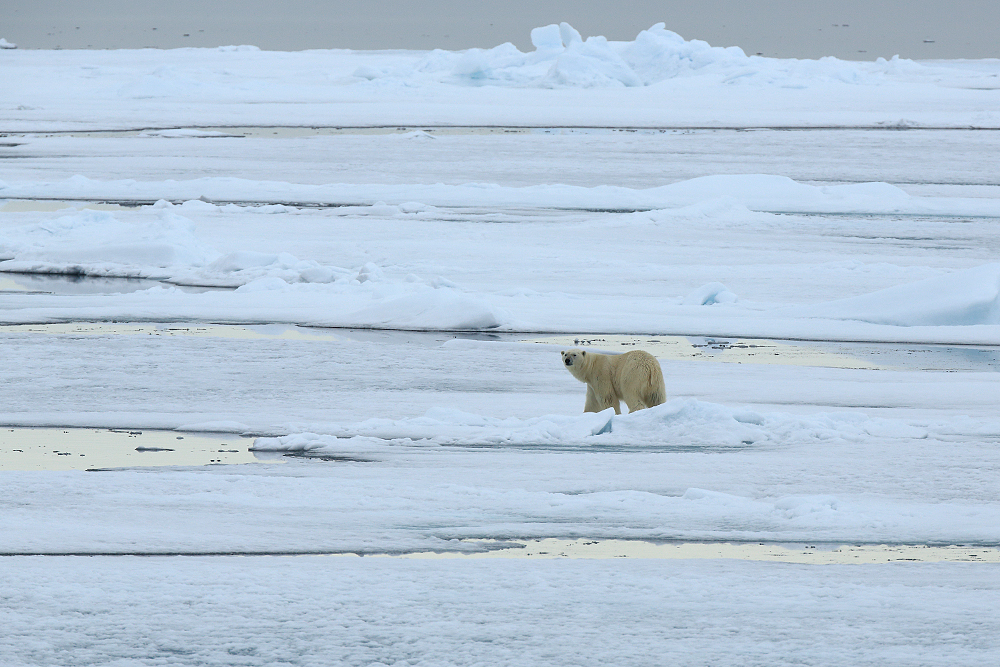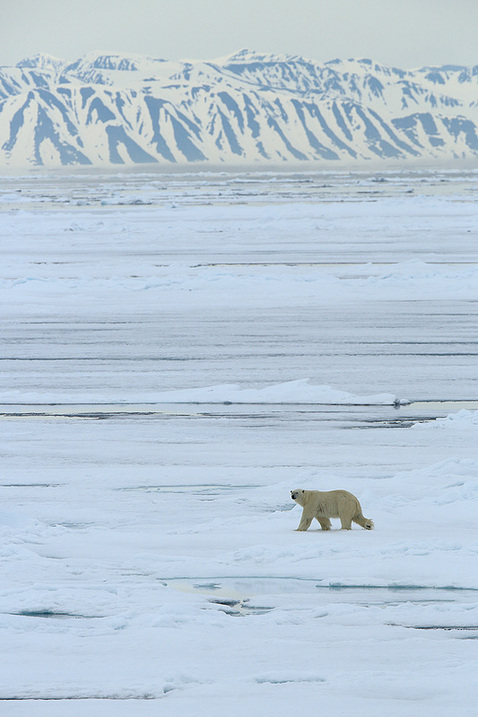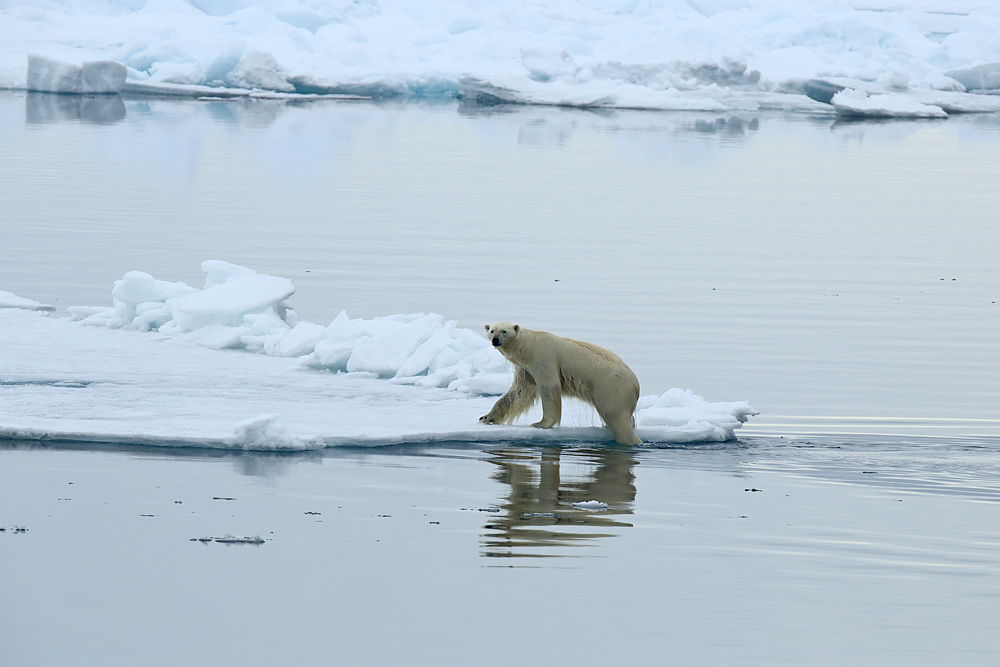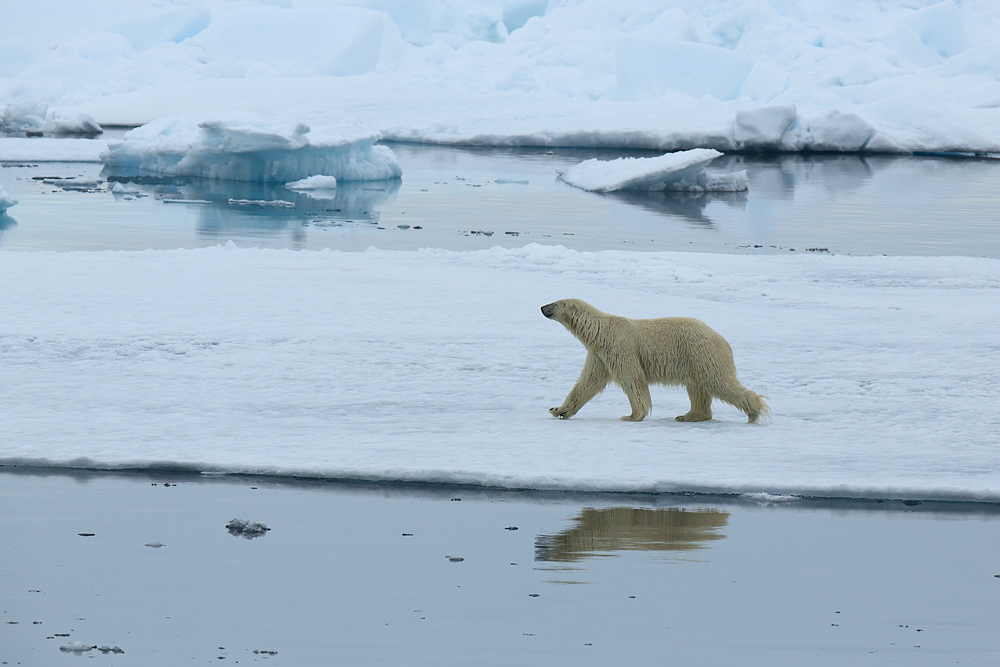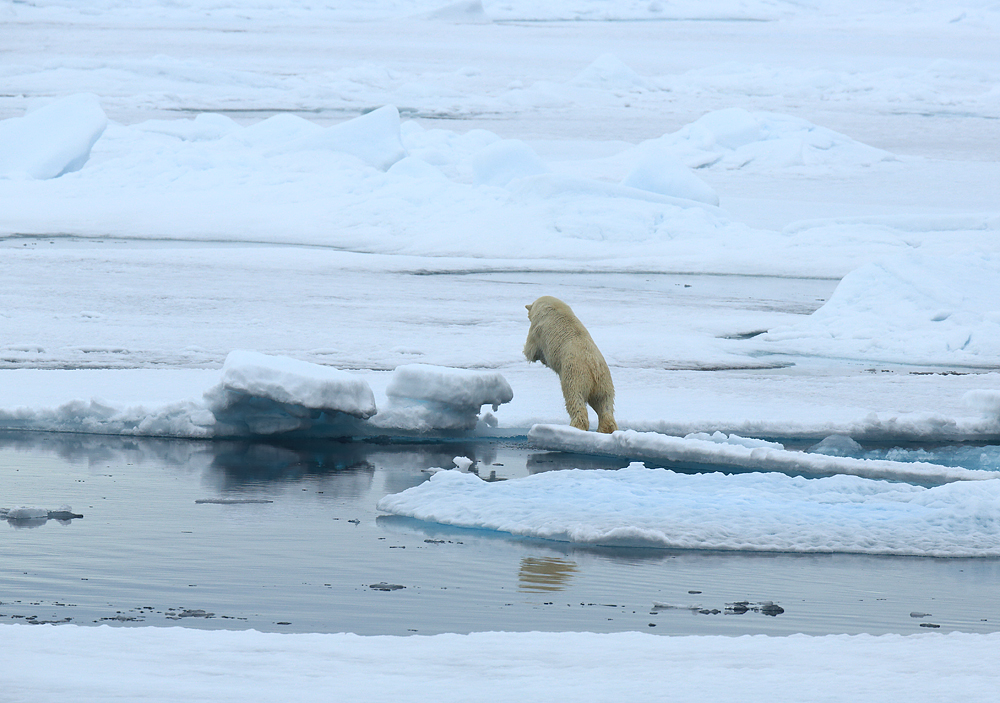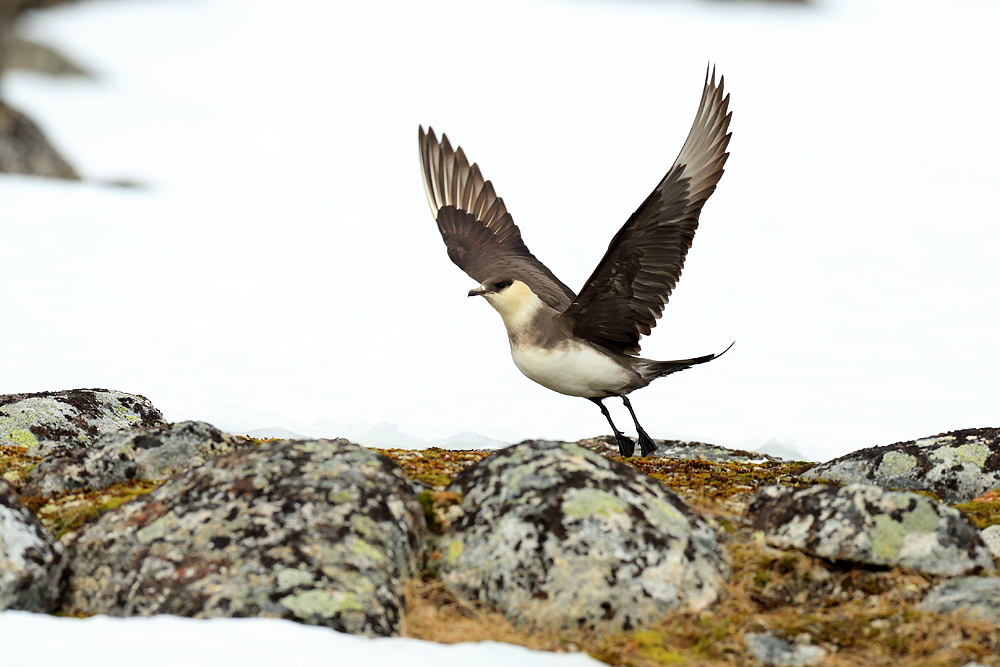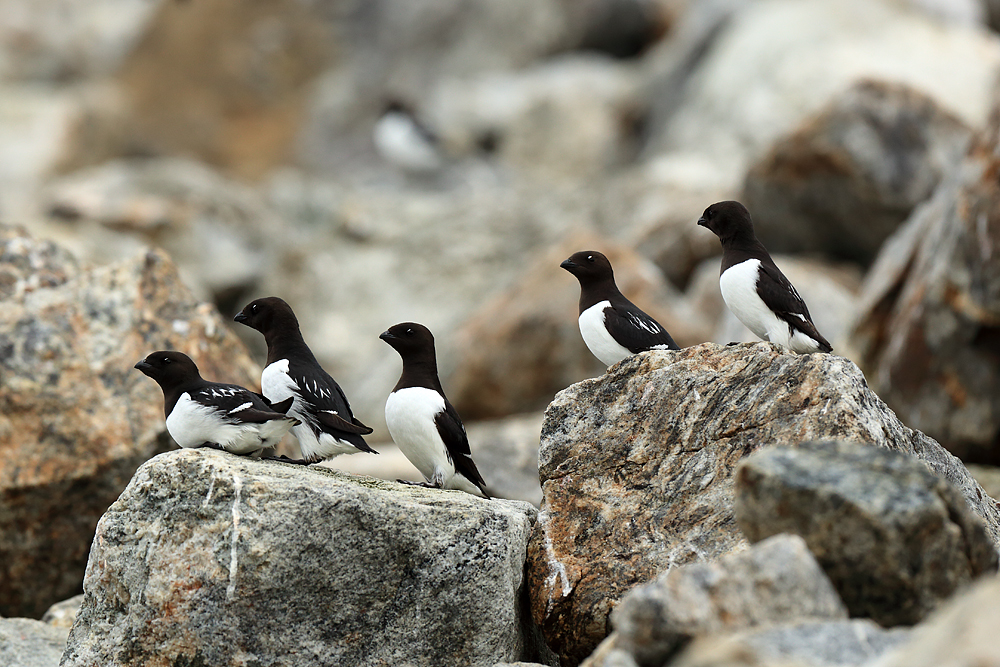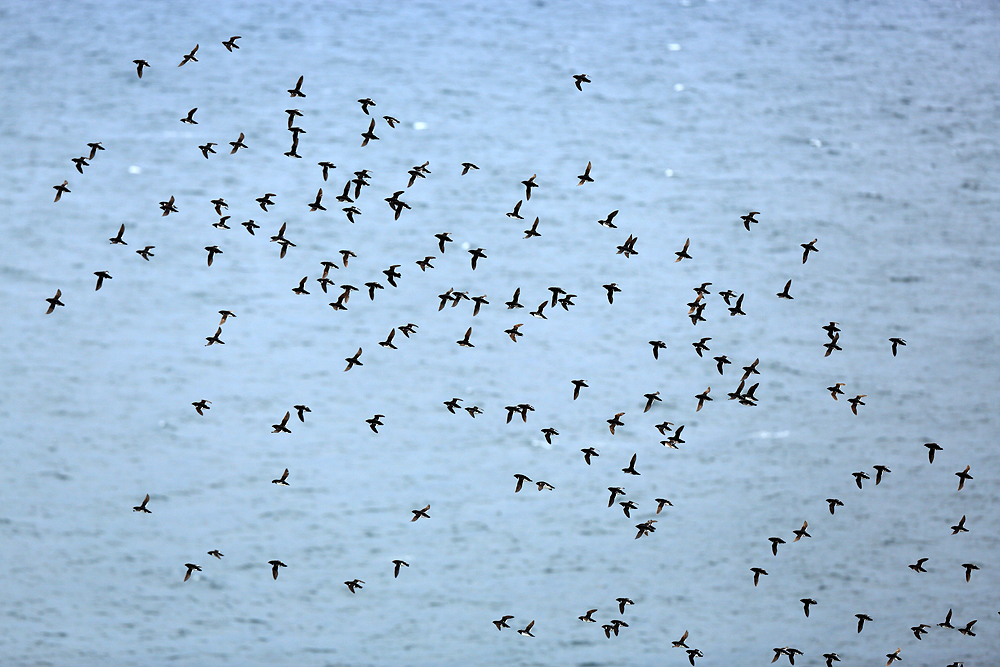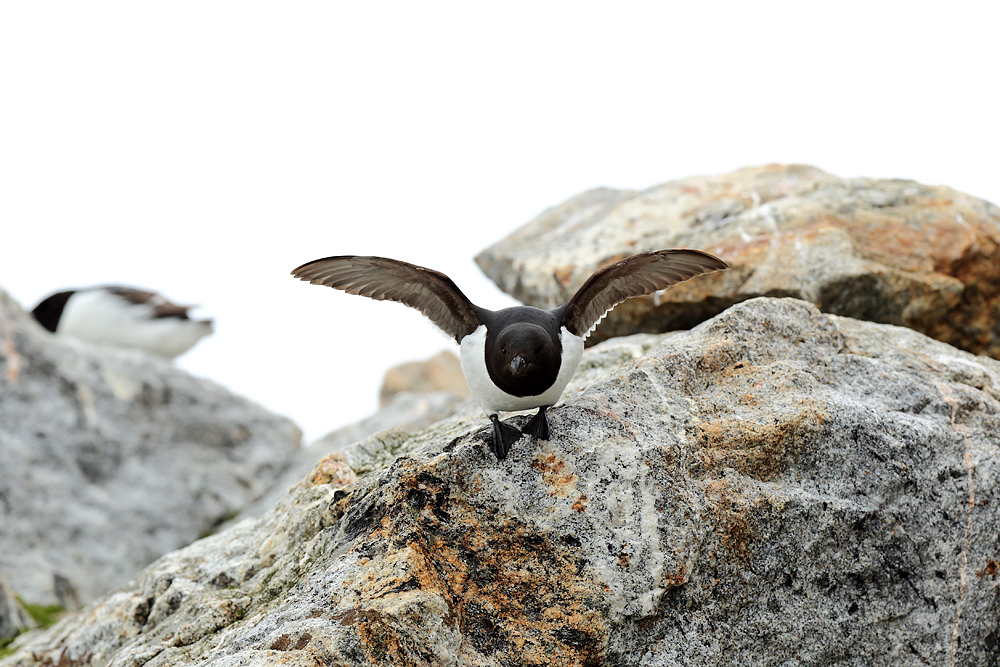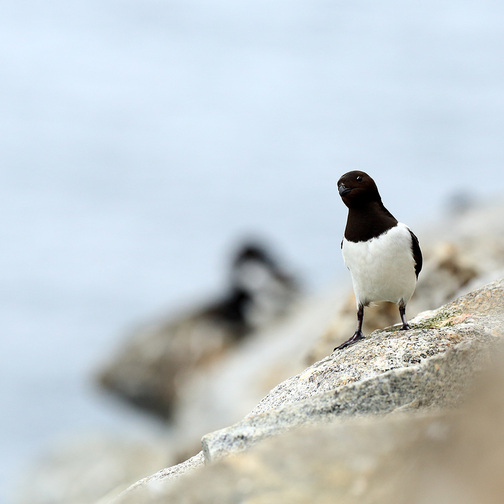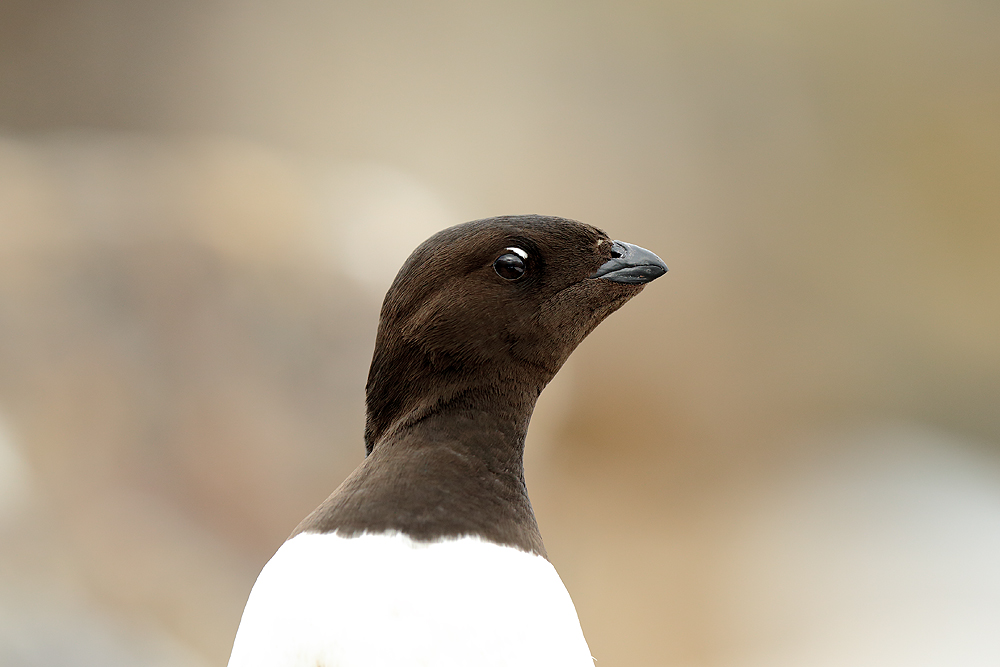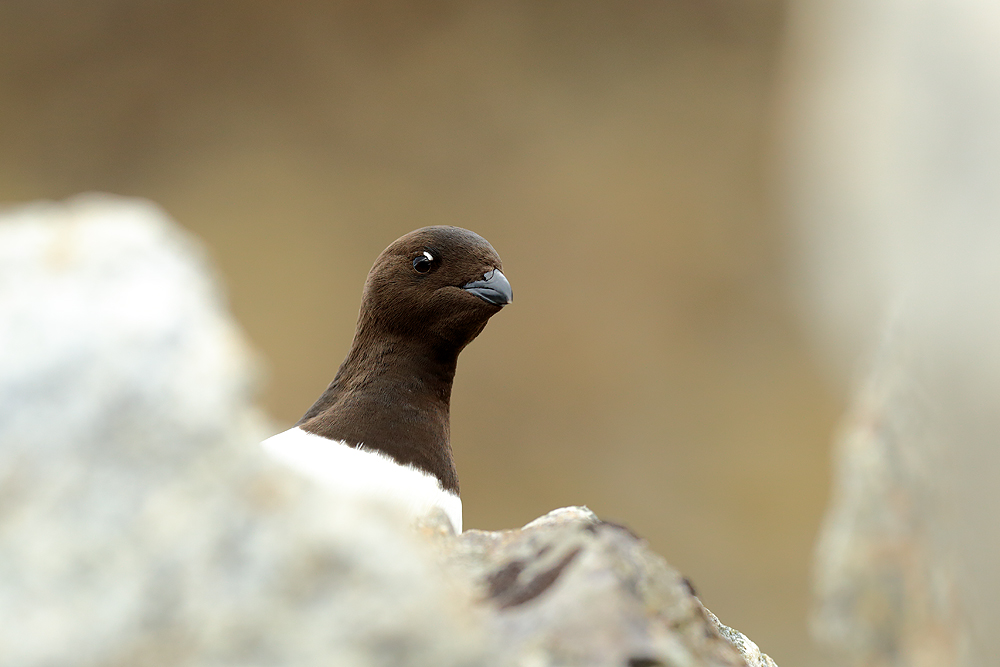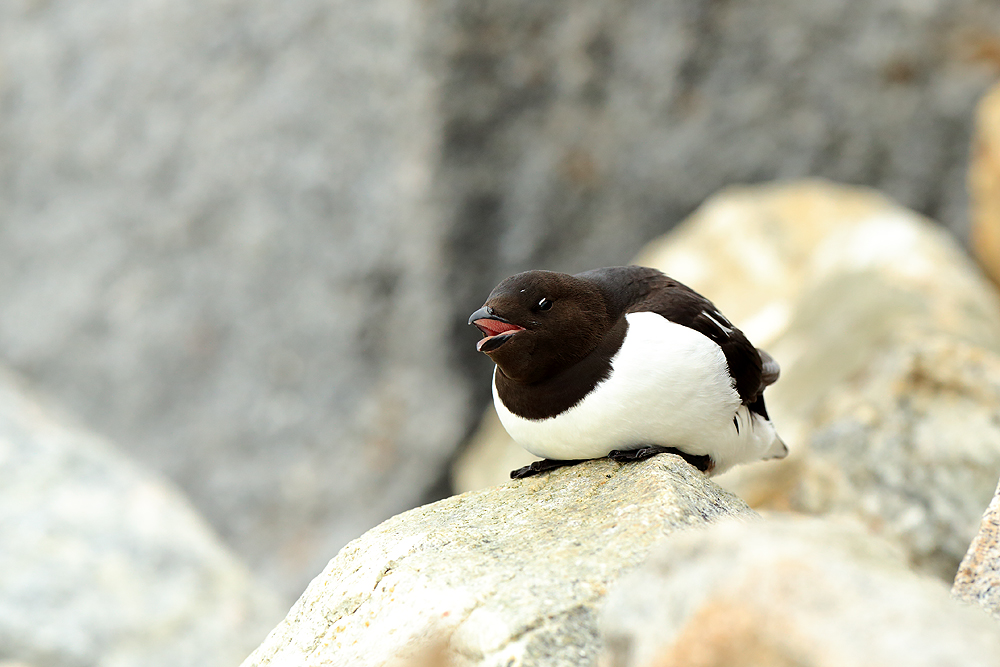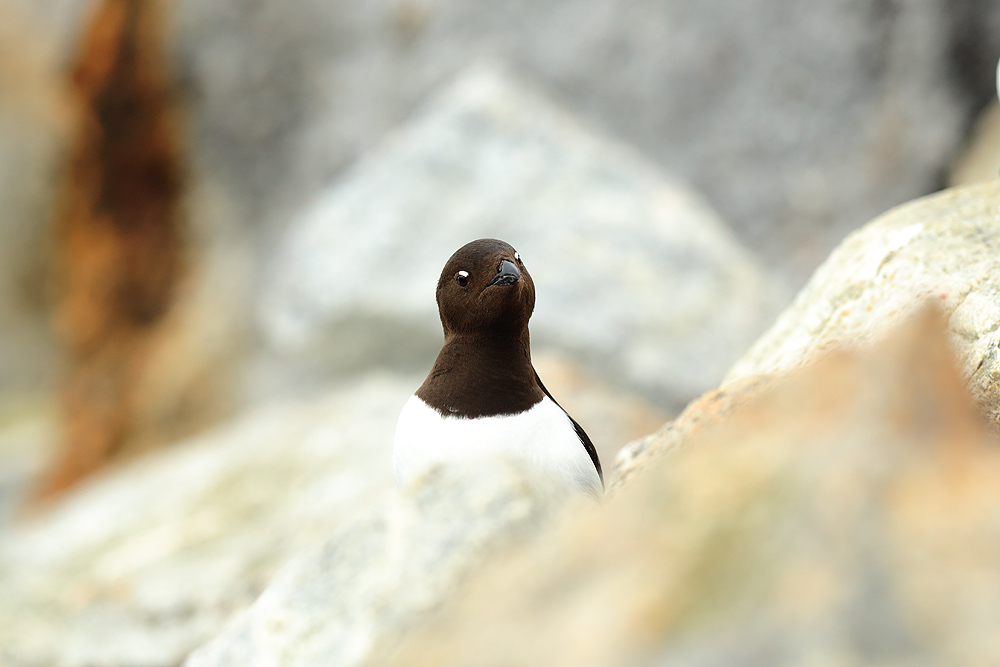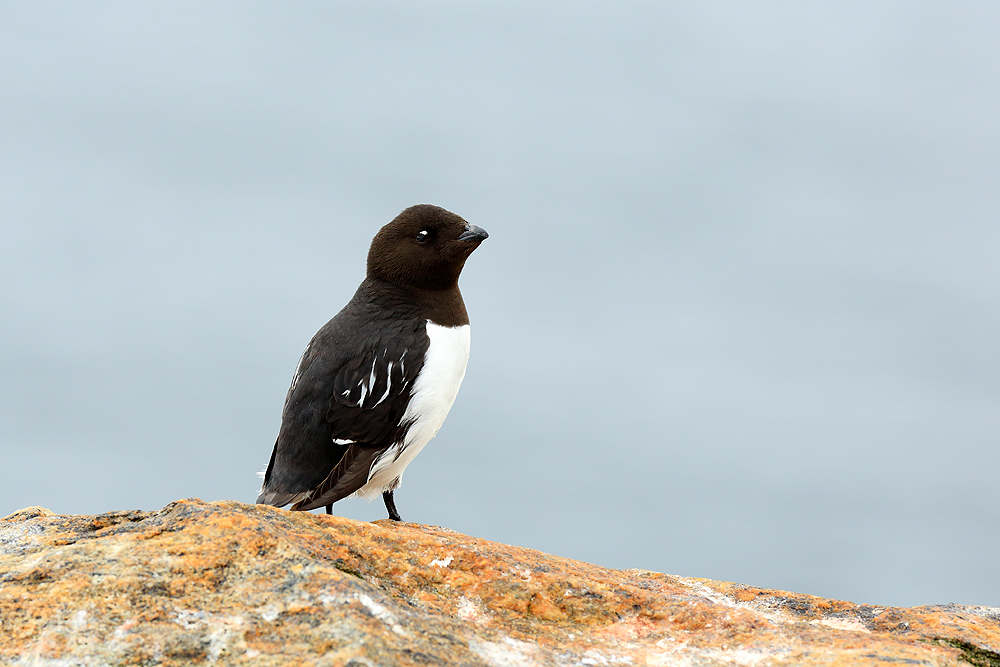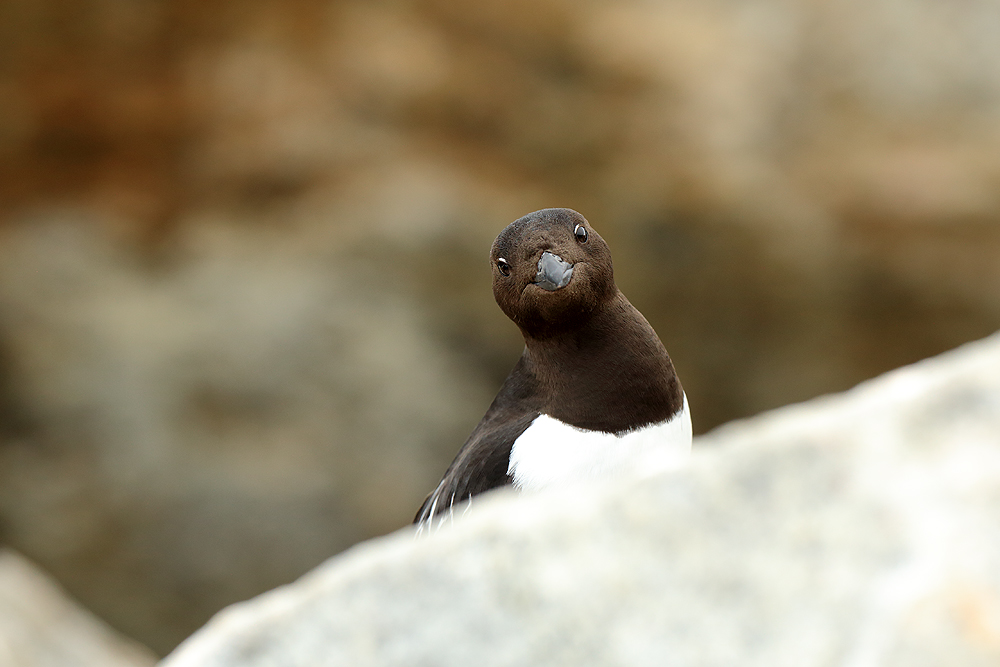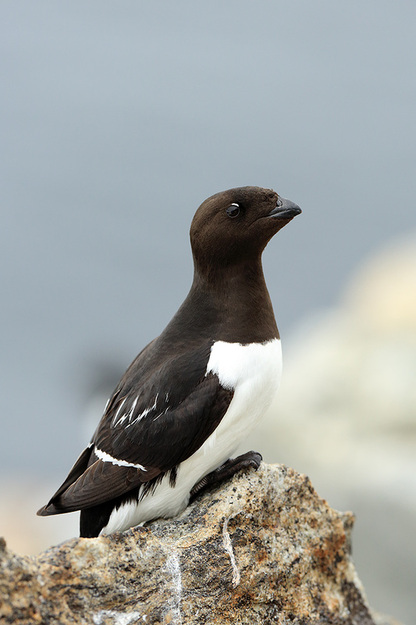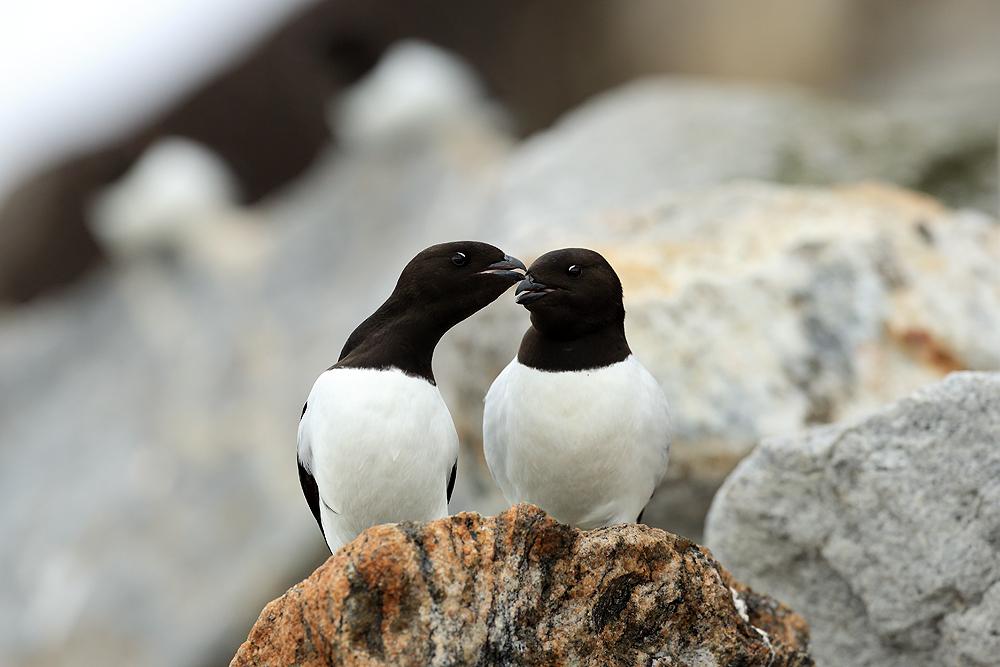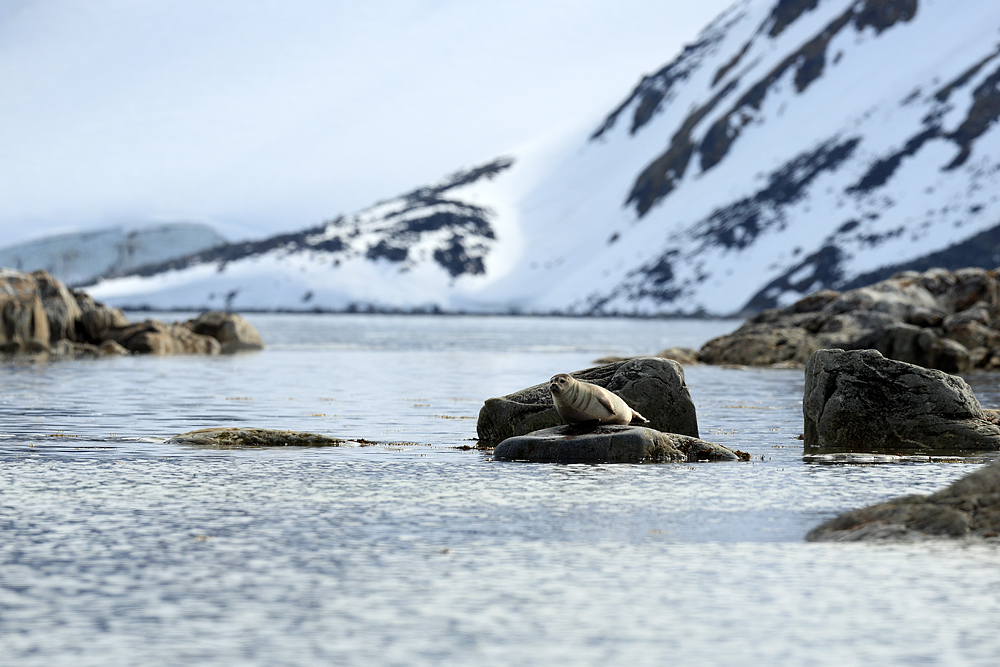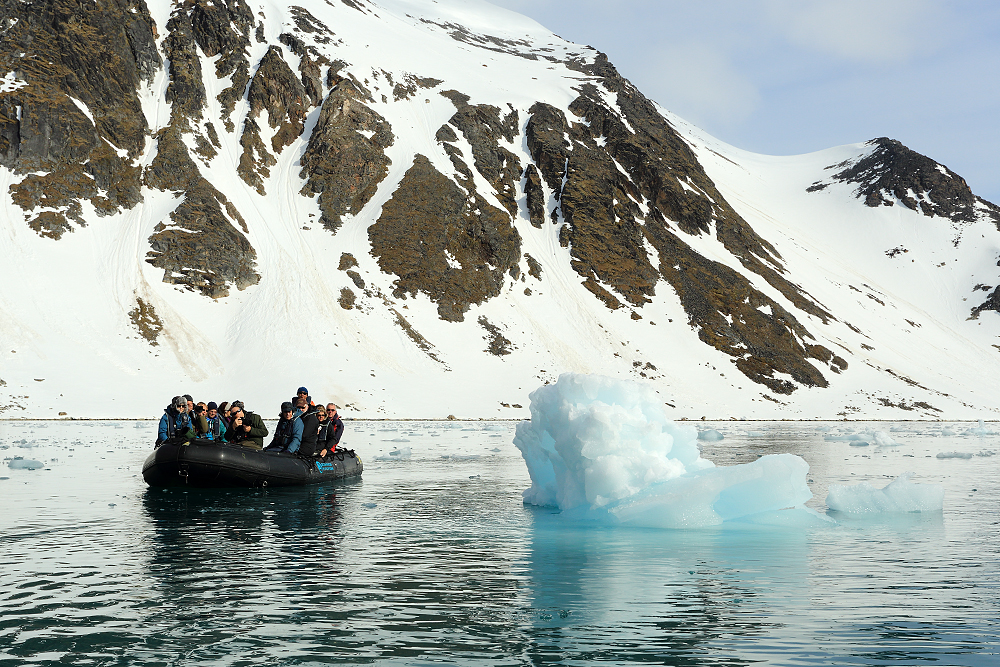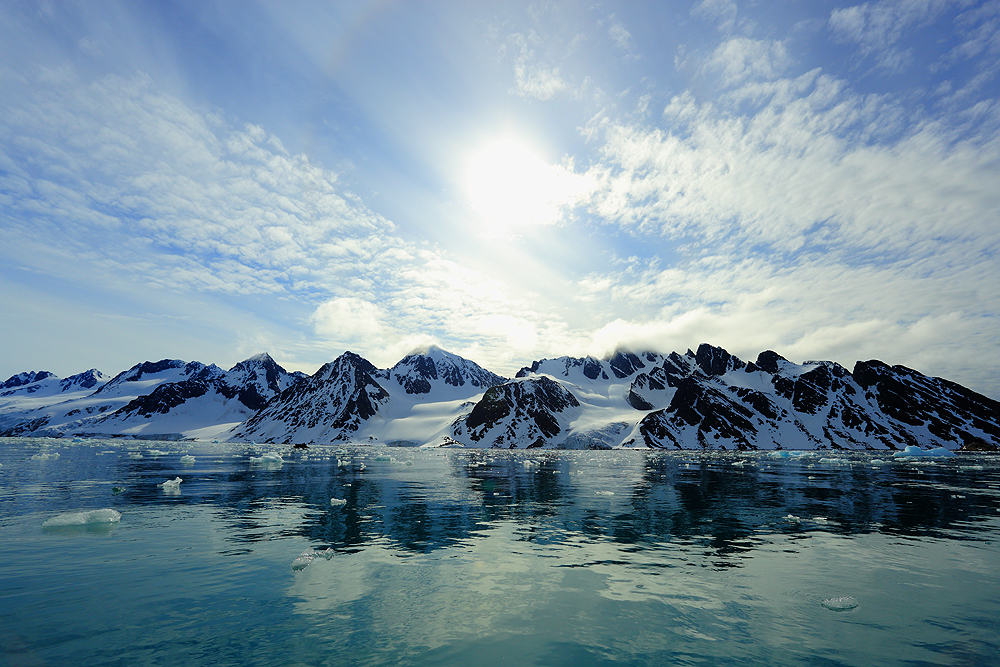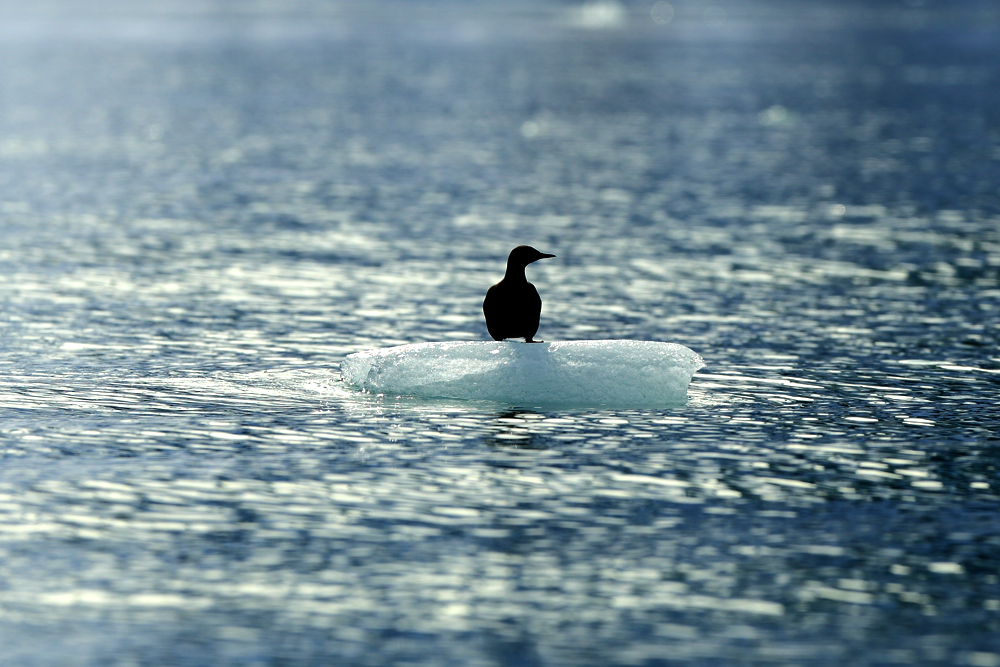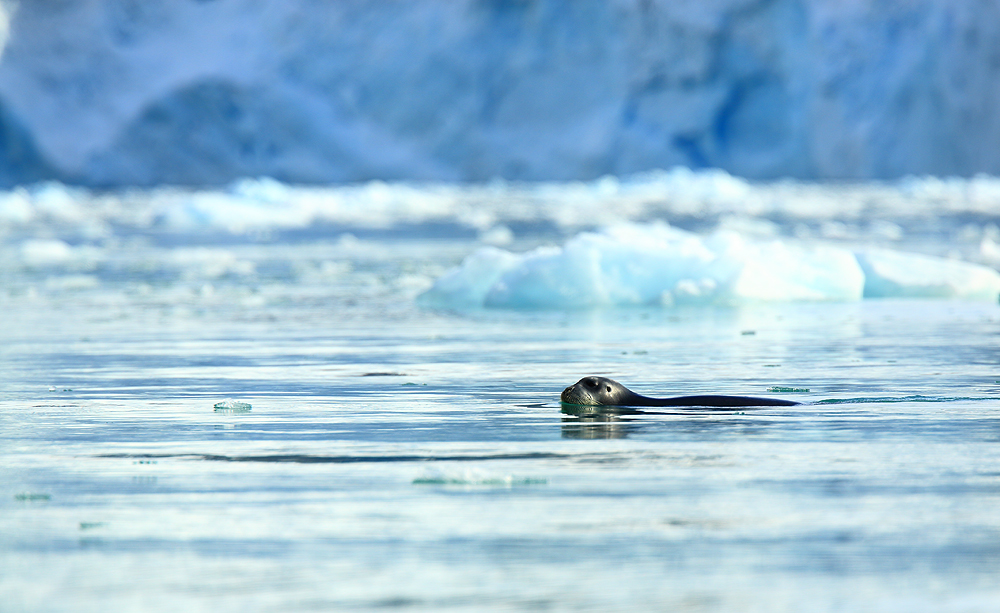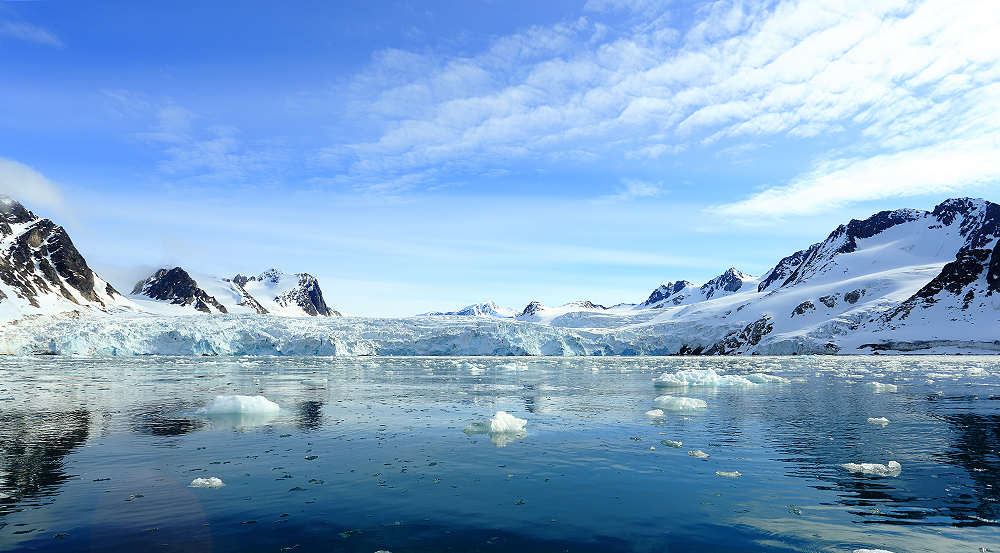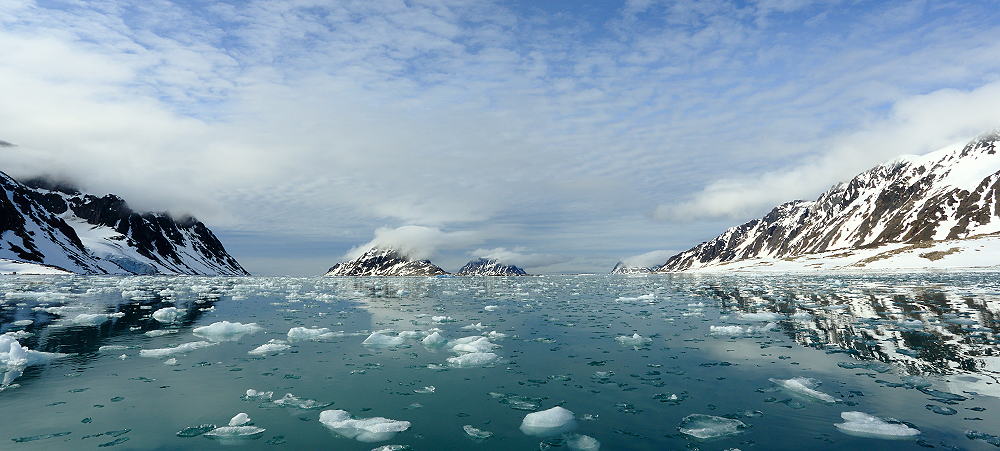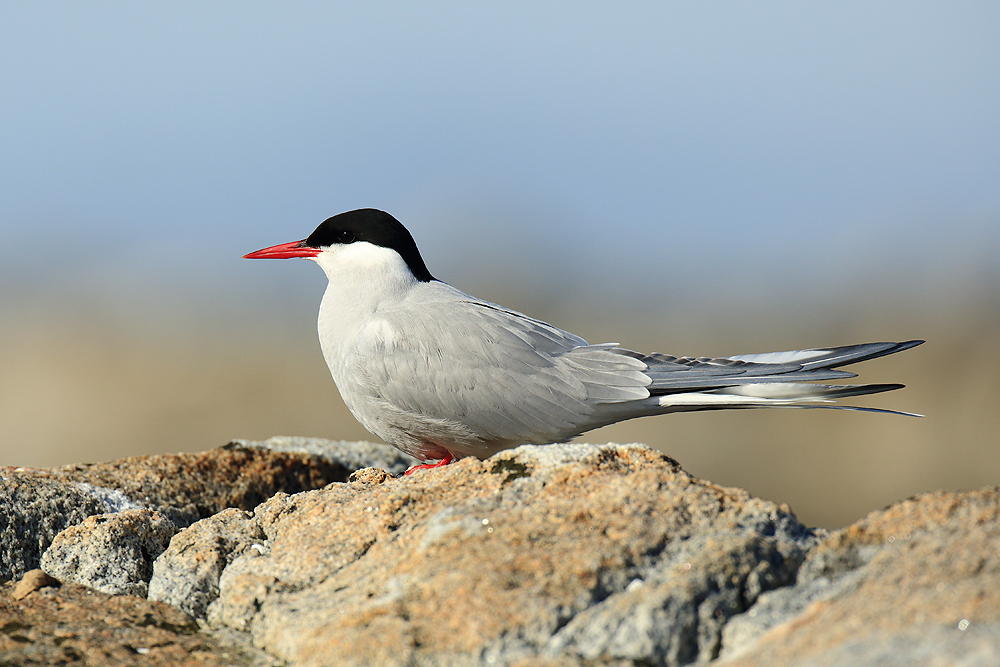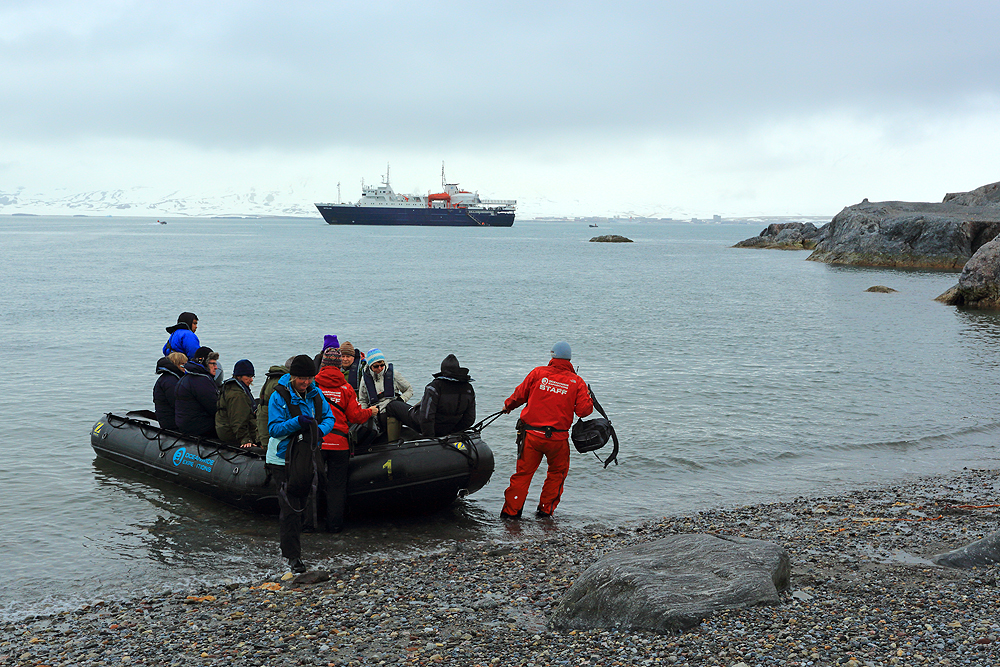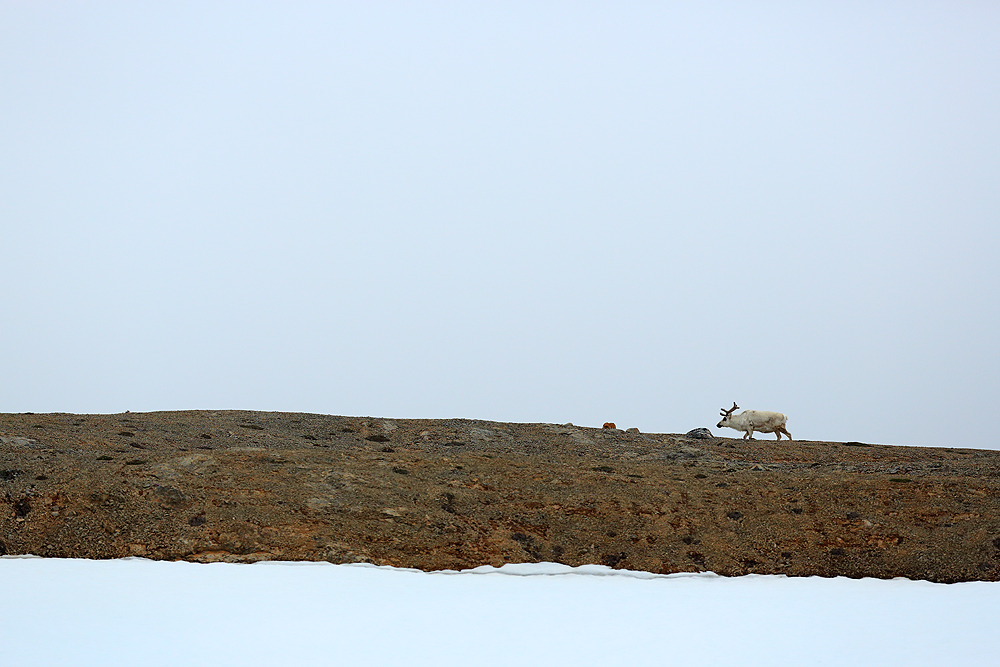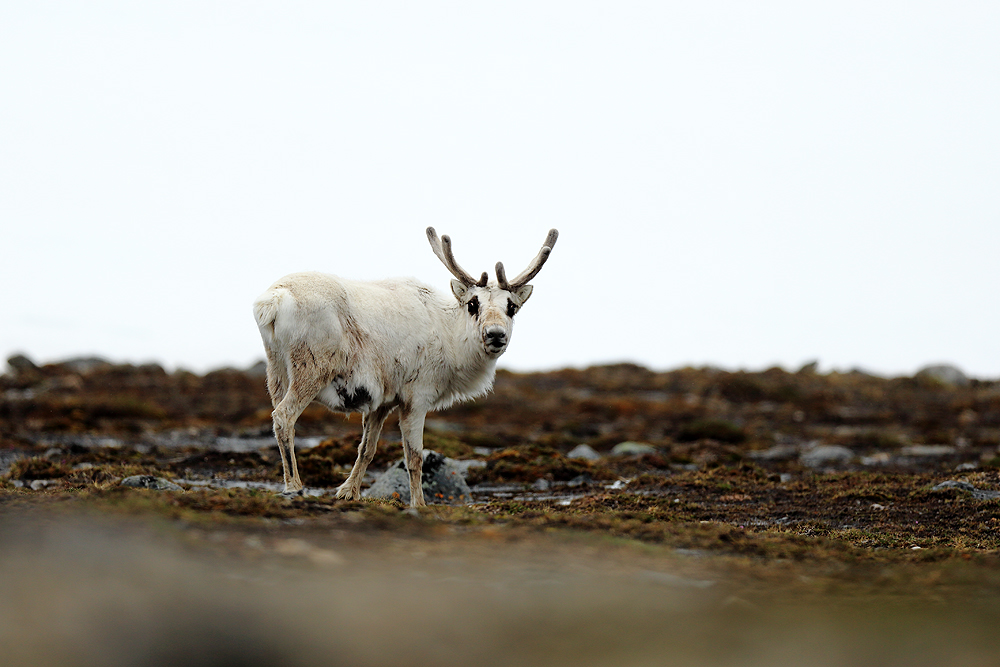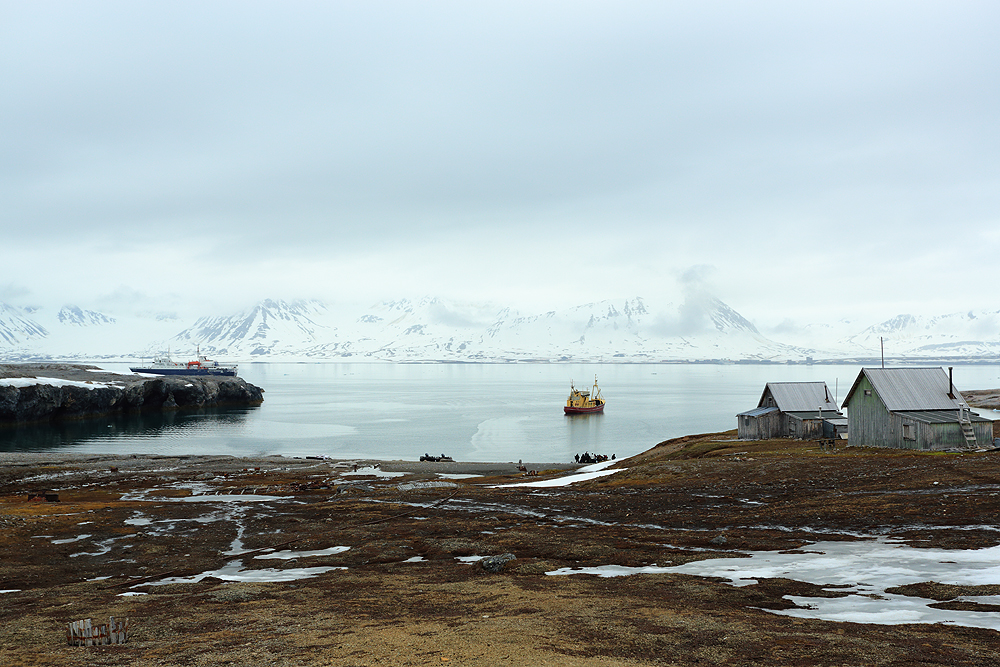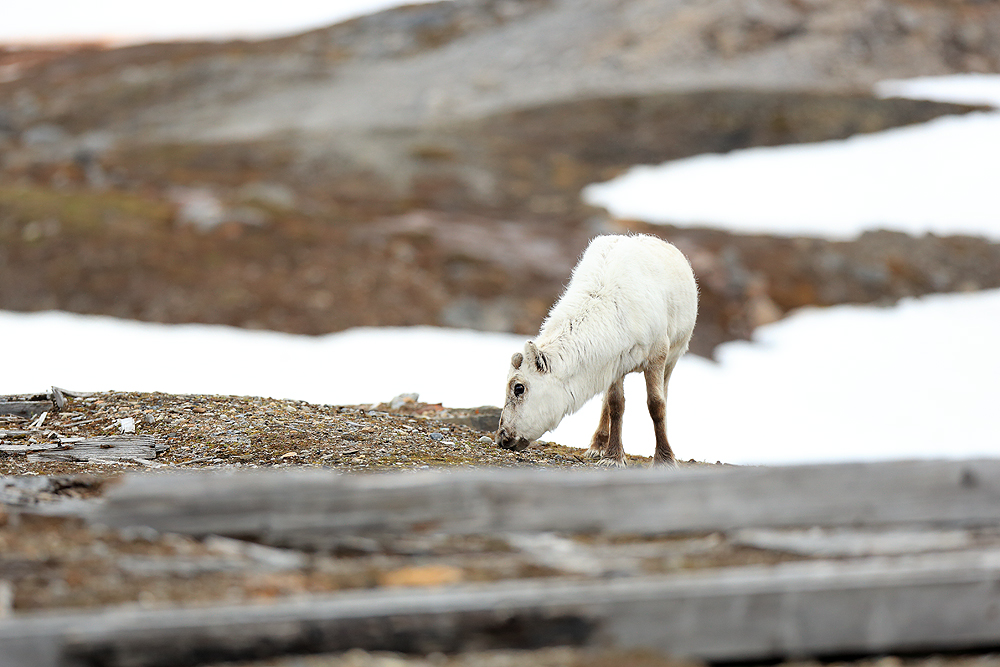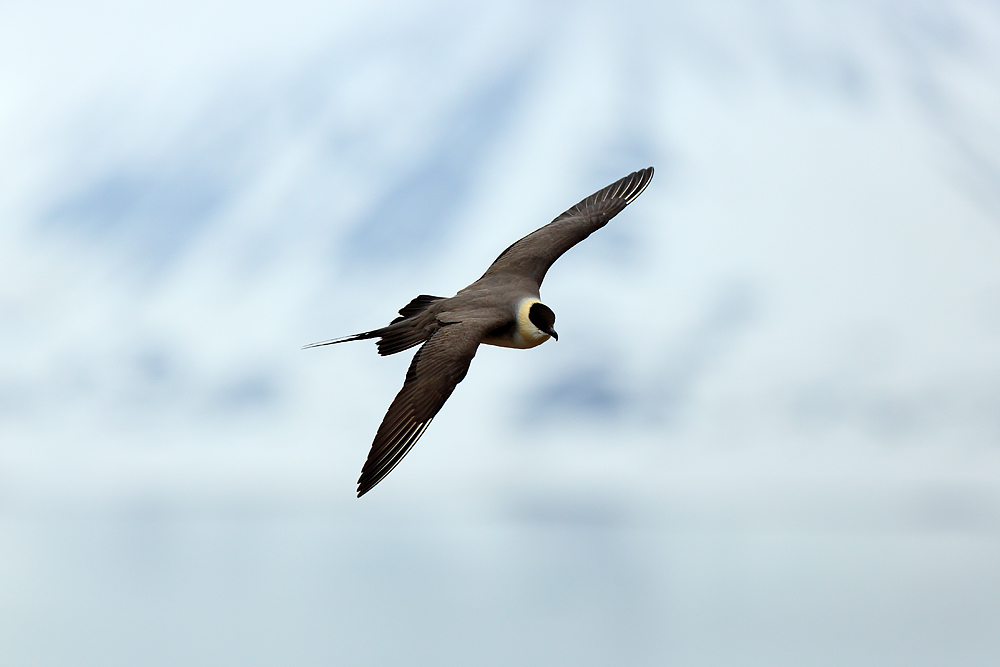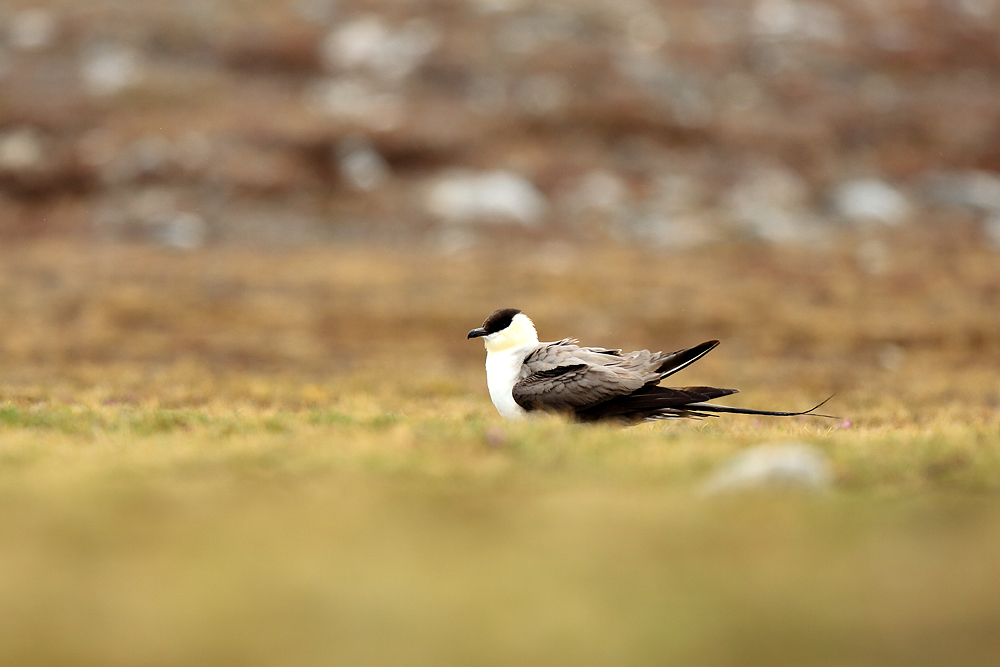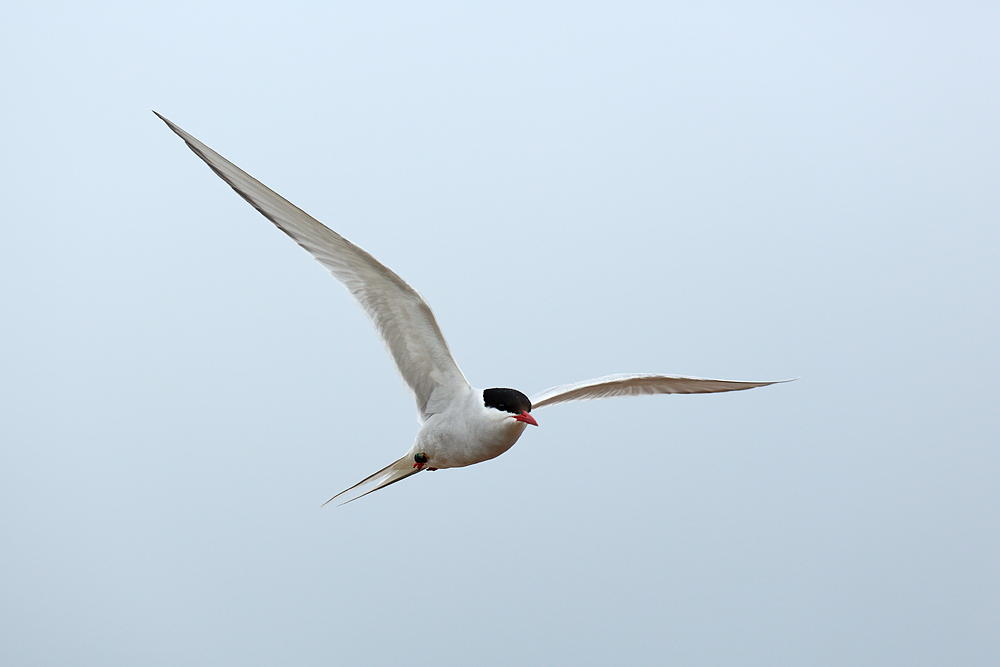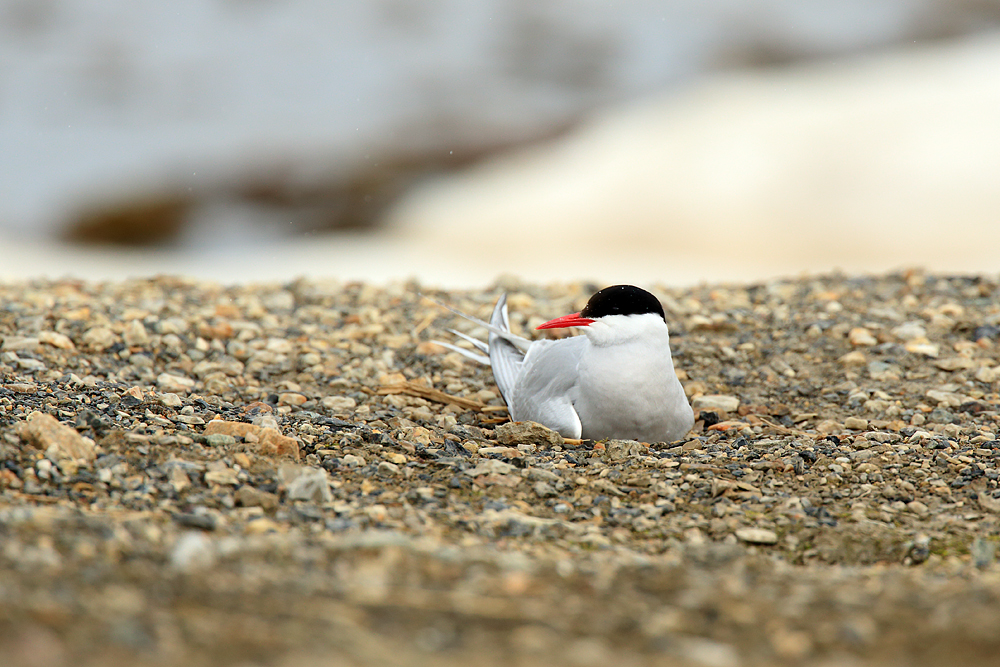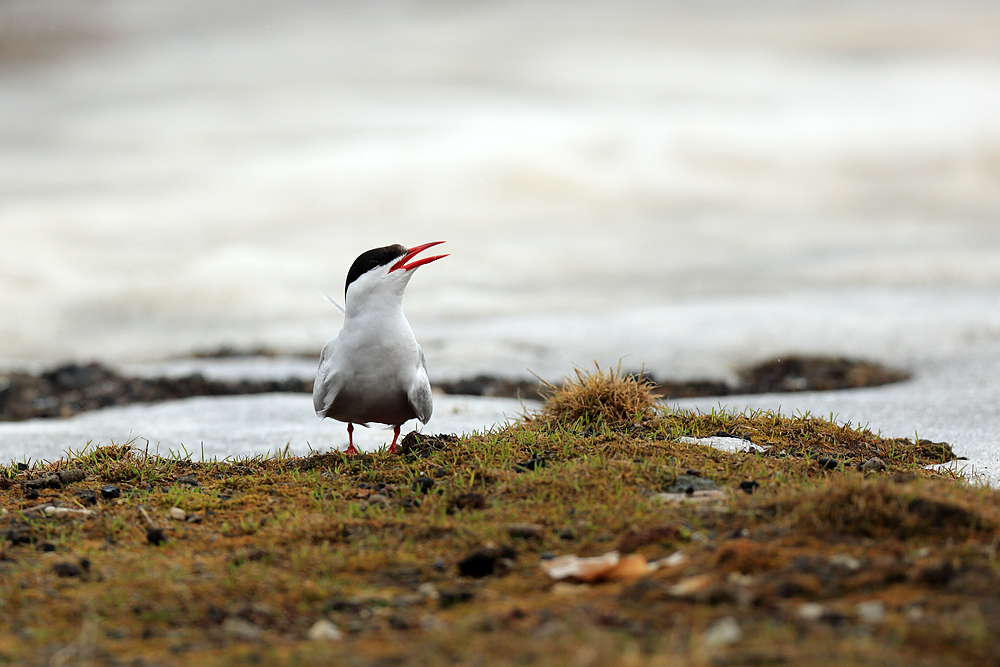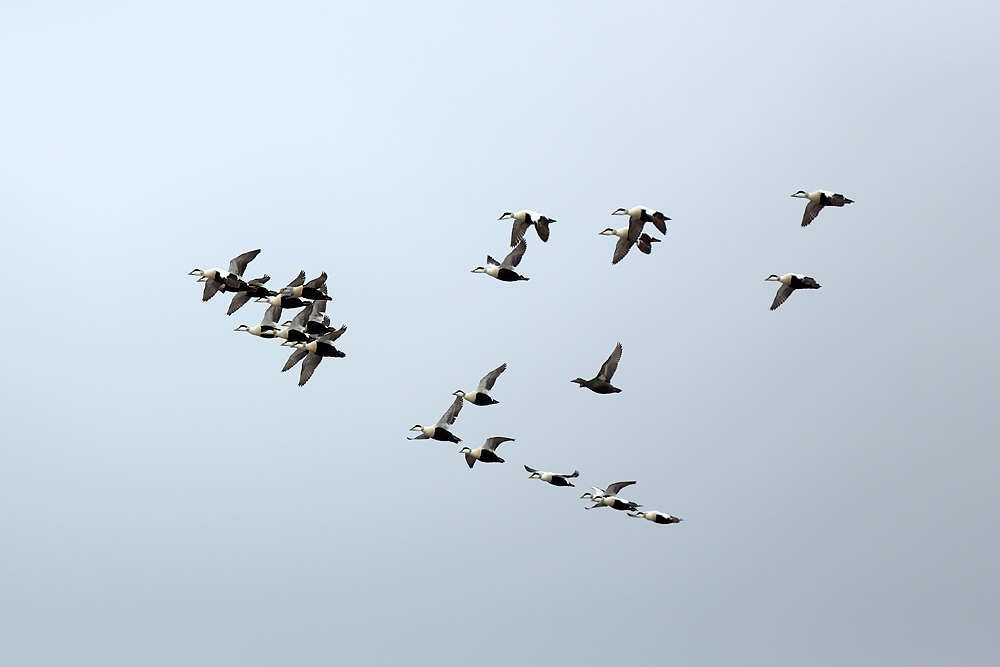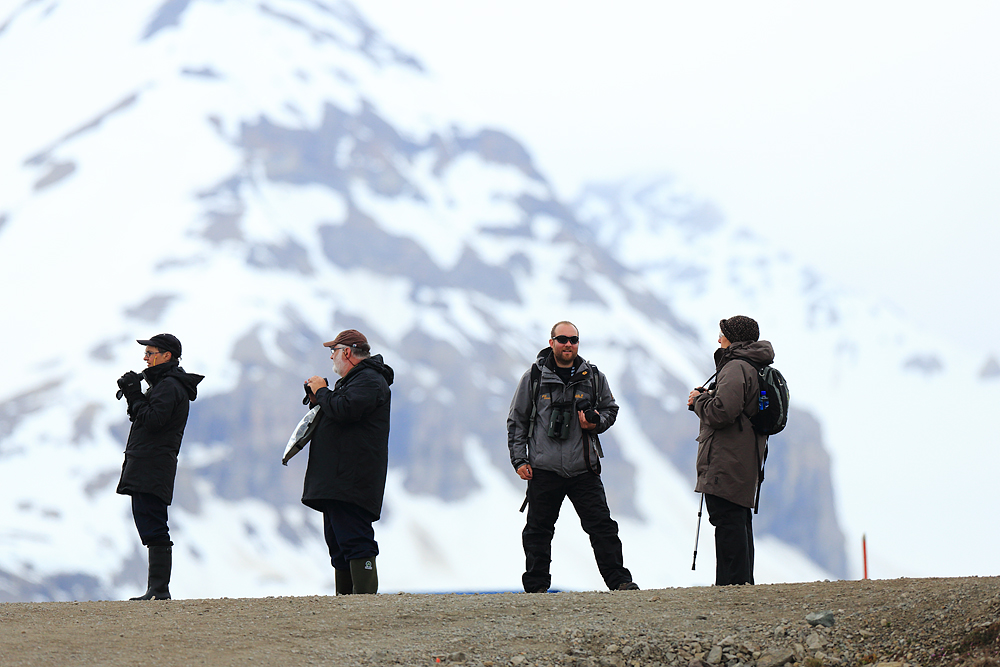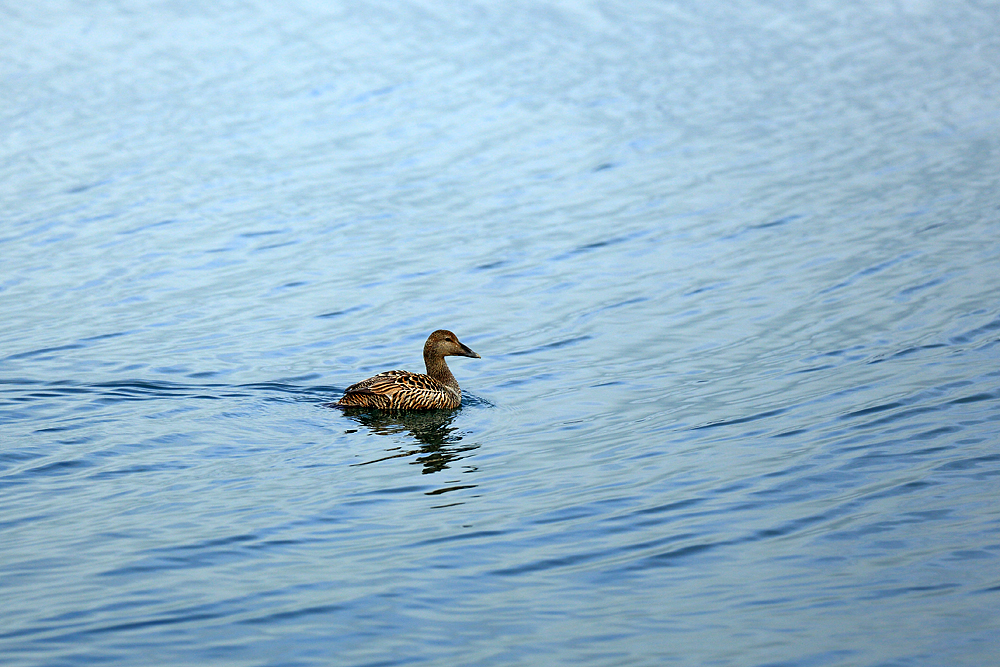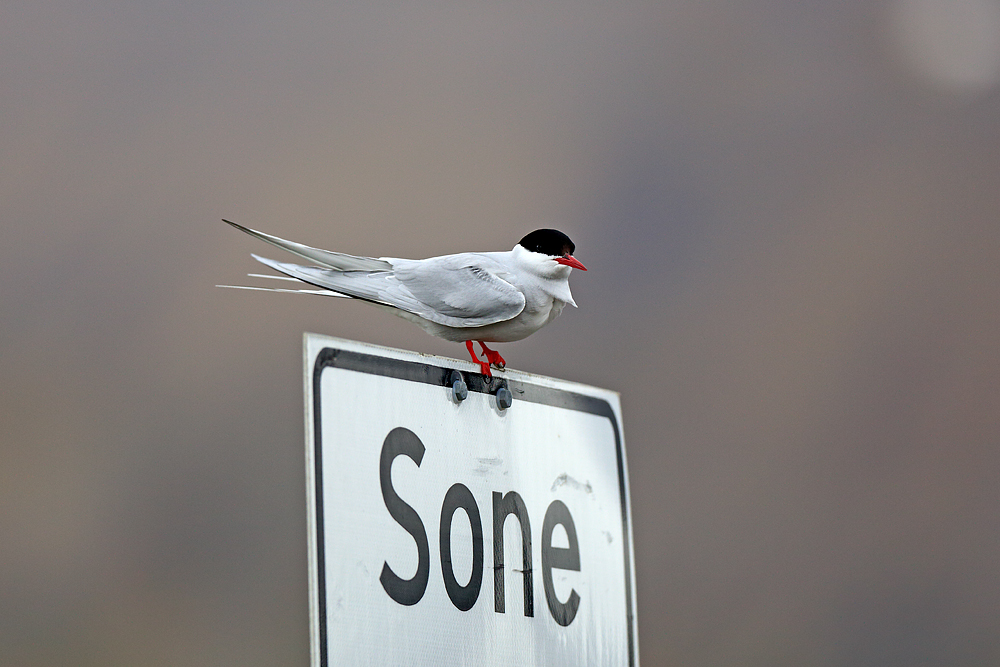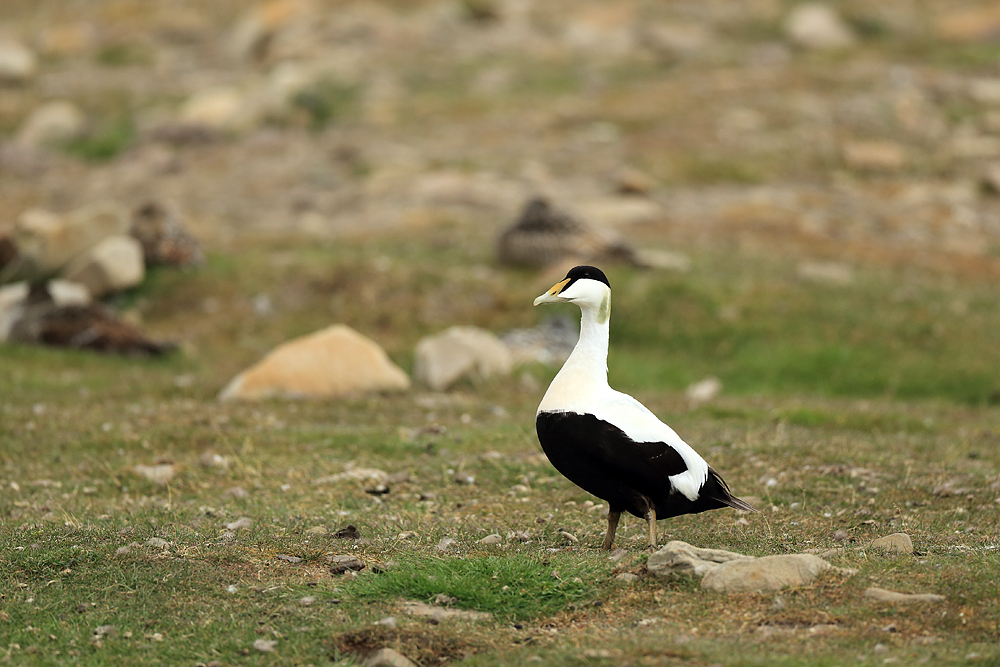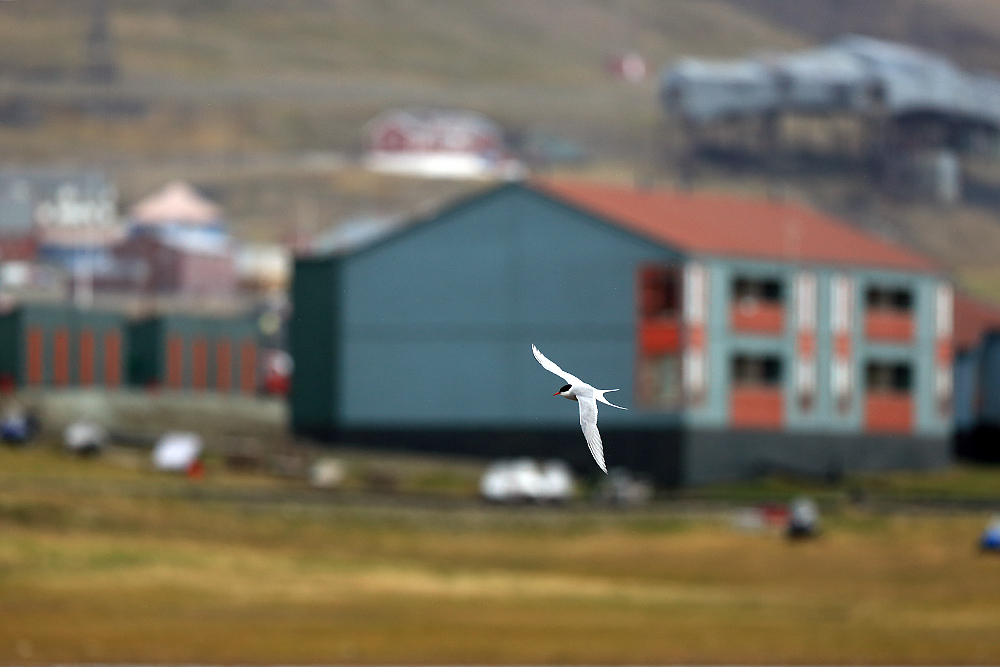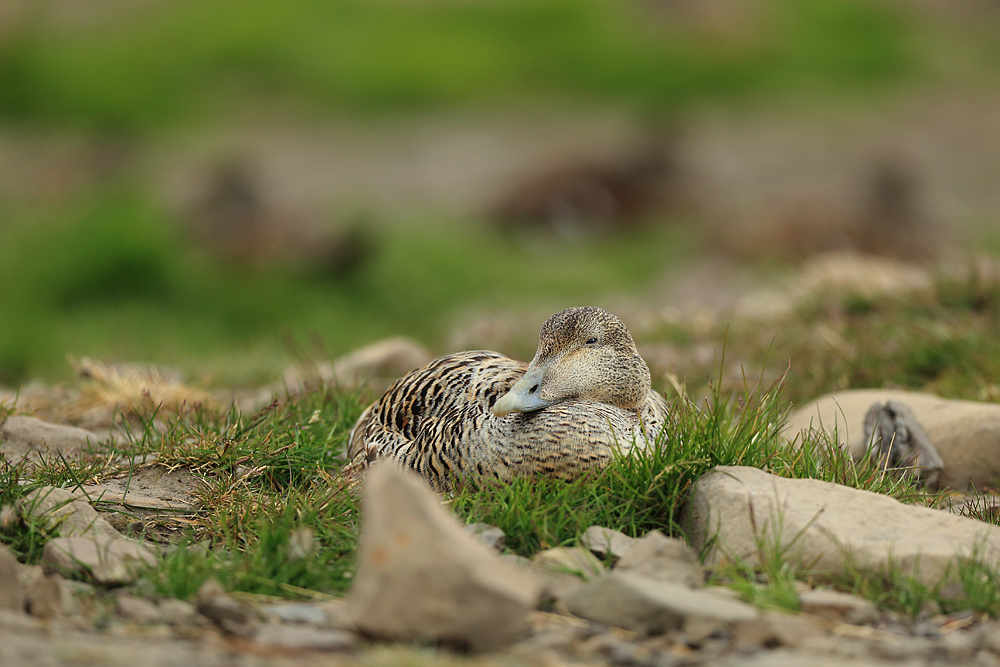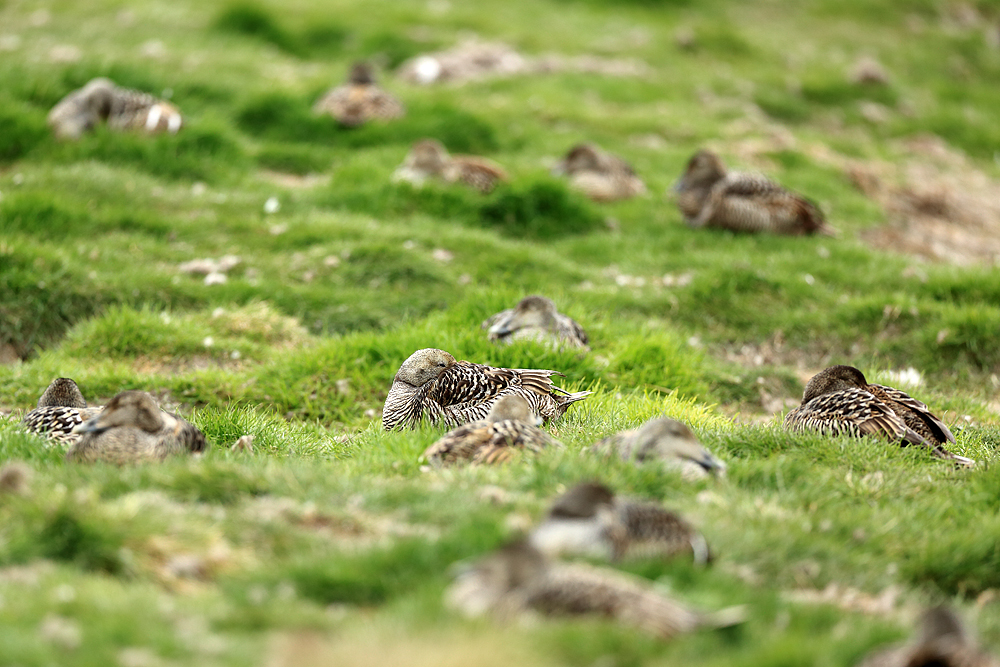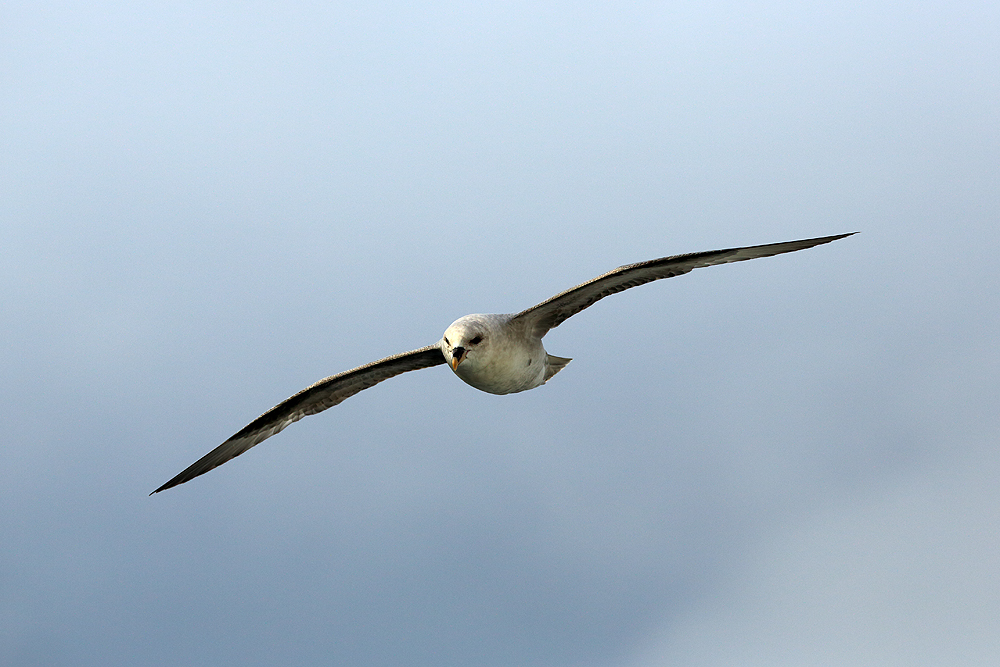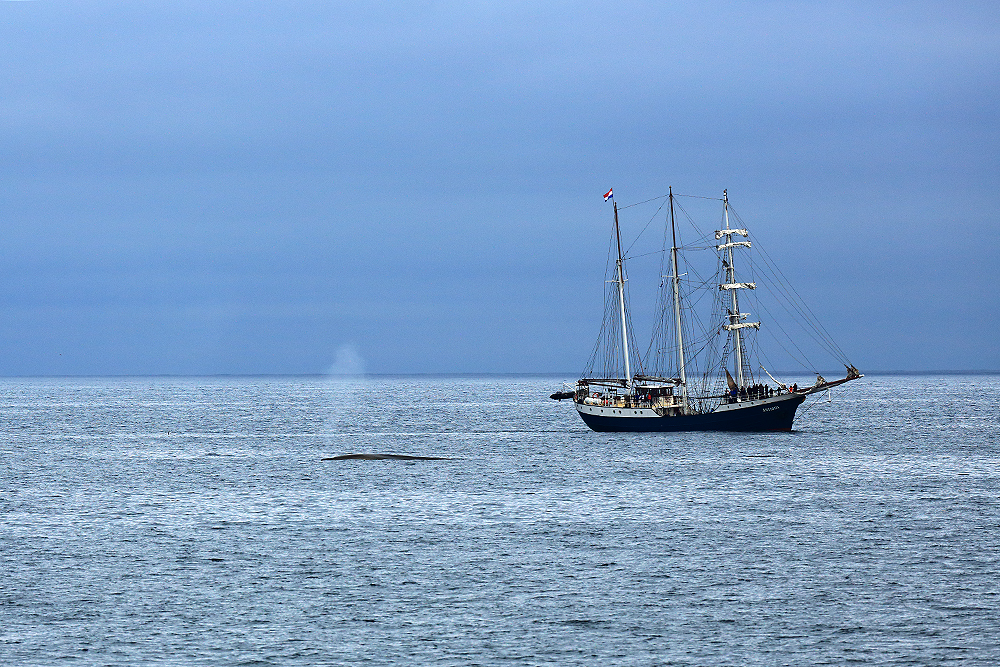|
I am very lucky to have been to Svalbard several times. What an incredible wilderness and a must for anyone with a passion for rugged landscapes and epic wildlife. For many, the biggest draw of this remote, Arctic archipelago is the polar bear, but there is always so much more to enjoy. With that in mind, I was incredibly fortunate to be the photographic leader aboard the MS Stockholm for Wildlife Worldwide’s chartered voyage at the start of May 2024. This remarkable small ship, built in 1953, is a charming and incredibly capable vessel, perfect for an expedition into this icy realm. I met up with the group in either Oslo, or Longyearbyen, before we boarded the Stockholm for the most incredible week of photography. We left the pontoon and were soon on our way out of Isfjorden, enjoying our first meal onboard this historic ship. We awoke to the most magical conditions in Kongsfjorden and set out on a zodiac cruise to really get a feel for the wonders of the Arctic. We saw several different seabird species as well as eiders and common seals. However, the real highlight was being able to get out of the zodiacs and walk on the fast ice – it was absolutely exhilarating. It was just one of those magical days and an experience that few ever get to enjoy. The next day, we arrived on the edge of the vast expanse of sea ice, sat high above the northern coastline of Spitsbergen (it was unusual for it to be so far north so early, but the winds had broken up the fast ice). We spent a whole day enjoying the vastness of this epic frozen world, but despite our best efforts, we could not find our first polar bear. We saw plenty of tracks, but the bears eluded us. We ended up following the edge of the ice, making it all the way to the northern coastline of Nordaustlandet - the second largest island of the Svalbard archipelago. Very few vessels make it up here this early in the season, so this really was a proper expedition. We were likely to be the most northerly, non-military ship on Earth. The conditions were absolutely sublime. After such an incredible day and evening, the clients were either heading to bed or relaxing in the lounge, when I spotted something on the horizon. Sat on the bridge with the expedition team, scanning all the while, I spotted a cream shape moving on the edge of an inlet. We went a little closer to see if we could confirm what we hoped it would be. "Polar bear!" went up the call from the Expedition Leader. We stirred those that had gone to their bunks, while the others were already getting their survival suits and lifejackets on. It was time to photograph our first bear of the trip. Within ten minutes everyone was ready, we'd boarded the zodiacs and were approach the bear as it walked along the shoreline. We ensured that we kept our distance, allowing the bear to do its own thing. It was completely relaxed with our presence after initially stopping to work out what we were. Giving it plenty of space, allowed the bear to wander freely. We decided to move a kilometre or so down the coastline and see if the bear appeared a little closer. He certainly did and it was then we realised a mark on his shoulder was a large wound. We were treated to some really exceptional views as we always made sure to move ahead, ensuring that we didn't change his behaviour at all. As you can see, we were blessed with the most remarkable encounter and the photography was out of this world. I'll never get bored of seeing a polar bear in such a beautiful, wild place. Knowing that we had this bear all to ourselves just made it that little bit more special.
Keep you eyes peeled on the next instalment of the blog from this trip. Alternatively, if this has whet your appetite and you want to join me in 2025, then visit the Wildlife Worldwide website and book your place.
0 Comments
It has been another action-packed year for me. With the travel sector back in business, I was busier than ever (making up for lost time) leading tours left, right and centre. With such a busy year, I haven't really had time to focus on my own projects, but I was able to capture a few wonderful moments when out in the field with clients. So with that in mind, I thought I would share my 'Top 5' images from the year of 2022. I should add that these are in chronological order and just a small selection of some of personal favourites. In case you haven't yet realised, I really love taking portraits of wildlife. I would love to know which is your favourite. The wonderful thing about photography is that it is completely subjective. My decision making behind this selection is probably biased, as my memories of each moment are likely to change my perception of the image itself. Anyway, I do hope you enjoy them.
2023 promises to be another busy year and I will do my utmost to keep this blog up to date. In the mean time, I have two more posts to come from my Colombia tour, another focusing on South Luangwa in Zambia and a final one from Australia. Happy reading! Back in March I led the inaugural tours for Wildlife Worldwide to Hornstrandir Nature reserve in the remote north-west of Iceland. Staying at the delightful Kviar Lodge, our sole focus here was the blue morph Arctic fox on our Arctic Fox Photography tour. Coming face-to-face with an Arctic fox has long been on my wishlist, particularly after seeing them in the wilds of Svalbard many years ago. The lodge is situated on an uninhabited peninsular, over 40 km from the nearest settlement and only accessible by boat. Our voyage from Ísafjörður was not the smoothest, but on arrival a fox was running along the high snow bank above to greet us. It doesn’t really get any better for a wildlife photographer. I led back-to-back trips in this spectacular landscape and enjoyed some of the very best photography opportunities I have enjoyed for many years. My clients were spoiled with all sorts of weather conditions and countless moments to capture some breathtaking imagery. Here is just a taster of what we enjoyed … As you can see, the first day was pretty wild with incredibly strong winds and a few snow storms. Although the photography was challenging, it was also particularly rewarding. The weather was very changeable, as you would expect in Iceland during March, but that enabled us to photograph the different foxes in a host of different conditions. The photography was exceptional. I was able to use my phone to capture some wonderful images, that's how obliging they were ... We were also treated to a marvellous display of Aurora borealis and all my first group were able to capture some stunning imagery. But of course the primary focus was the Arctic foxes. Here is a selection of images from the second of the two departures - we really were incredibly lucky with the weather and the cooperative wildlife. I hope the photos above have whetted your appetite - if you would like to join me in Iceland to photograph these charming foxes, there is still space remaining in March 2023. You can register your interest here.
Our last full day on our circumnavigation of this remarkable Arctic island was to be a beautiful one. The Sun shone down on us and a mist rolled in across the stunning glacial scenery. The fjord was called Bellsund at it was home to some amazing cultural history as well as the natural history. Below is a stark reminder as to why the islands were colonised in the first place ... sadly the Arctic was a superb hunting ground for whales and other blubber rich mammals. Belugas, the white whales, were killed in their thousands as were the now critically endangered Bowhead. Below you can see the carnage that the Europeans brought to this wild landscape. We also had a fantastic sighting of an Ivory Gull as it flew right past the group as we explored this old whaling outpost. After our morning landing we headed over to Ingeborgfjellet (as we were eating our lunch) and arrived to a beautiful big blue sky. We were hoping to find another colony of Little Auks as well as Reindeer. It was incredibly warm in the sun and I actually stripped down to my t-shirt ... it really was particularly mild. We never managed to get particularly close to the Little Auks but I had an amazing encounter with a small herd of Reindeer. So close I had to get the wide-angled lens out of my bag and make the most of the photographic opportunities. So another amazing day with what the Svalbard Archipelago has to offer. It is so incredibly hard to really do this amazing place justice with photography. The landscapes are utterly awe inspiring, the wildlife is remarkable and the freezing temperatures just help add to the feeling of a true wilderness ... and this really is wilderness, there is no escaping that.
Sadly this was my last full day in the Arctic Circle, the next day the M/V Ortelius docked in Longyearben and we flew back to Oslo, before flying back to Heathrow and heading back to the day job. Sub-Saharan Africa has always been that special place for me and nothing has ever quite compared ... until now! Perhaps, at long last, I have found another wilderness where I feel I could just keep on returning. This morning we awoke to big blue skies and headed into the spectacularly beautiful Hornsund. This massive fjord is surrounded by dramatic mountain peaks and destructive glaciers. Being so far South, I have to admit I really wasn't expecting to see as much of the truly specialist Arctic wildlife. Upon arrival in this stunning setting a female Polar Bear was spotted on the shoreline and then moments later another larger bear was spotted on the far shore (perhaps a male). We would be going on a Zodiac cruise to see if we could get any closer to the bears and then on to explore the fjord ... little did we know what was in store for us all. We all met on the deck and waited to board our Zodiacs for our afternoon cruise, I was with the Naturetrek leader Peter Dunn and expedition leader Jan Belgers. We set off as one of the lead boats and headed toward the small headland where we had earlier sighted the female bear. As we approached the shore line we realised that the bear had moved on and as much as we were scanning both the water and the shore we were unable to see anything. Peter then spotted some movement on the water's surface way out in the fjord ... it was the bear, it had managed to slip by us in the ice-cold water. The bear approached an island and we all held our breaths as we prayed the bear would be a 'quality' bear. It was definitely a 'quality' bear ... The real benefit of the island was that the bear felt completely at ease and we could travel all the way round for a constantly changing backdrop. As a photographer you always want to try and capture that image that stands out and lingers in the mind, this really was the perfect photographic opportunity. Even then this was one of those moments where you just have to put the camera down and really take in the moment! We slowly moved around the island the backdrop was more than you could ever have dreamt of. We slowly moved closer and closer, all the time keeping an eye on the bear to make sure it was completely at ease. We all go the odd glance and a quick sniff but it certainly wasn't affecting its scavenging behaviour. The bear was obviously search for whatever food it could find, it is known that a variety of birds breed on this island in the summer months. After a wonderful hour with this remarkable Polar Bear we thought it would be best to leave it in peace and leave it to carry on with its search for food. With a few months remaining until the sea ice returns this bear will really have to try and conserve its energy and find whatever scraps that are available. We move further up the fjord to see whether we could approach the second bear, he was a huge male but he was not at ll interested in us and remained in his slumber. We carried on towards the head of a glacier to explore the amazing landscapes and the ice-filled water. I really hope you have enjoyed looking through all of these images and with only one more post left, I think that this is perhaps the highlight of the cruise. This day was quite possibly the most memorable of my life outside of my time in Africa, with jaw-dropping landscapes, danger and unbeatable wildlife encounters I am not sure what can beat it.
Coming up are some charismatic reindeer and a few more landscapes so please keep on reading. Our planned landing site for this morning was Kapp Waldburg, a site for nesting Kittiwakes in a steep sided canyon. As we arrived at our landing point we heard over the loud speaker that there was a Polar Bear and we would have to head elsewhere to stretch our legs. From there we headed on towards the tundra habitat at Sundneset, once again as we approached the landing site the Polar Bear call went out again. This bear was very relaxed and the expedition team decided it would be safe to land slightly further down the coast and have the ship keep an eye on the bear's where abouts. As we landed we were greeted by a truly wonderful site, a stunning pair of Grey (or Red) Phalaropes were feeding only yards away from us. The male was particularly obliging, carrying on with its feeding as if we didn't even exist, the female on the other hand seemed to be rather skittish and wasn't a particularly good poser. Unusually for the bird world the female Grey Phalarope is actually the more beautiful. The males take care of the eggs and ensure they hatch before raising the chicks, the female visits a multitude of males and lays her eggs with a few of them ensuring that they have the best chance of survival. As we left the two phalarope to their own devices we headed inland across the tundra and had an unexpected but truly wonderful encounter. A very shaggy Arctic Fox was heading towards us and we were blessed with extraordinarily close views. The fox had not yet lost all of its winter coat and spent a bit of time rolling around doing its best to free itself from its Arctic jumper. There were also a few Svalbard Reindeer within the vicinity but they were all a little nervous around us. After spending a couple of hours on shore and aware that there was still a Polar Bear within the vicinity it was time to head back down to the Zodiacs and transfer back to the Ortelius. As we reached the landing site we realised that the male Grey Phalarope was still feeding and happy to pose for the photographers in the group. After another incredible lunch we set sail for Dolerittneset, the ship anchored and we were once again out on the Zodiacs heading for shore. I joined the hiking group and we climbed up into the misty hills that towered above the water. We really didn't see much except for a few reindeer and a couple of ptarmigan and even Stein (our Norwegian guide) seemed to find the climb hard work. I am sure on another day the views could have been superb but on this day the visibility was less then 20 metres.
We eventually headed back down towards the ship and had a look at the multitude of Walrus bones that littered the shoreline. This was once a great Walrus haulout but unfortunately they were nearly hunted to extinction in this area. There were a couple of individuals on the shore but no longer were there the numbers that once thrived here. Once we were back aboard the ship, we headed for the southern most tip of Spitsbergen and up towards the stunning fjord of Hornsund. This took us all night and most of the next morning but what was in store in Hornsund was something none of us ever expected, it was a day that will stay with me until the day I die ... keep reading to find out what Hornsund had in store. This day didn’t start after a good night’s sleep … instead, we stayed up until midnight to welcome the midnight sun, the first time we had seen it on our voyage. I had to get a photo of me on the ship’s uppermost deck so sorry about the image below! What made this moment all the more special is that we were in Wahlenbergfjorden, this 50km long fjord is rarely visited and the depths are as yet completely uncharted. This really was an expedition voyage and we only found out, upon our return, that the advanced sonar had been damaged earlier on in the trip … we were sailing relatively blind following a previous expedition’s navigation. There was also a Polar Bear on a piece of fast ice (ice that is attached to the shore) and it was obviously hunting seals but eventually it was so small that we called it a night and headed off to finally get some sleep. The next morning the weather was a lovely 5 degrees Celsius with the sun still shining down upon us. It was a morning for a Zodiac cruise and in the night the Polar Bear had come past the ship to another piece of fast ice and was obviously hunting seals. We approached this ice, the Zodiac drivers beached the front of the boats on the ice but the bear was still at quite a distance. We decided to turn our attentions to the magnificent bird life that seemed to be all around us. There were Arctic Terns, Grey (Red in America) Phalaropes, Common Eider, King Eider, Long-tailed Ducks, Glaucous Gulls and a Ruddy Turnstone that I just could not photograph! It was an amazing place but not the easiest to photograph in. We headed off to one of the many glaciers that flowed down into the fjord from the huge ice sheet and a seal was spotted on a small ice floe. This was another huge Bearded Seal, this time with a very red head due to the iron ore deposits that stain the sea bed. As the seal feeds and searches in the sediment at the fjord’s bottom, it manages to stain its fur with this intense natural dye. The next half an hour or so was an amazing close encounter with this large marine mammal and it was only when we got within a few metres that we realised this individual had been through the wars. Its face, as you can see, was terribly scarred as were it sides. It seemed a Polar Bear had once tried to catch this seal but had failed, forever leaving its mark upon its intended prey. We left the seal alone and made our way through the mass of ice that had calved from the glacier, before heading back to the Ortelius for a spot of lunch. This was truly a wild and remote place, with amazing scenery and fabulous wildlife one could not really have asked for more. As we cruised out of this stunning fjord we were greeted by the amazing sight of three individual Humpbacks feeding, at times only 25 metres from the ship. After about an hour with these huge cetaceans we had to continue onwards towards Torellneset, where we would hopefully find a Walrus haul-out. We had an early dinner before heading out onto the Zodiacs and landing on the shingle bank at Torellneset. There we were, on a remote beach in the High Arctic with a large group of Walrus … a truly remarkable experience. We were photographing these blubber behemoths on the beach when our guide Mick waded into the water and started to ‘tap dance’. What happened next was amazing ... There were already Walrus in the water and Mick's little dance routine (he was really just paddling) seemed to create enough noise to lure in the curious Walrus. They don't really have any natural predators and are curious about things that are in their territory. It was amazing just how close these amazing mammals came and it made for some stunning photographic opportunities. At times, they were so close that I was unable to take any photos ... I just had to sit, watch and enjoy the moment (I can cope with that). After some extreme close ups of these inquisitive Walrus they backed off a bit and there was even a bit of a scuffle between two individuals. One seemed to have a bit of an itch and started to roll on the rough beach to ease its discomfort. Our guide Mick was still standing in the shallow water watching intently. What an incredible day it was, it can be so easy to go overboard with superlatives when visiting somewhere like Svalbard but it is the only way one can describe this remarkable destination (you see I just can't help it). The days can be long in the Arctic, this was certainly one of those days but you could never say that it dragged. It was action-packed and the sheer variety on offer was astounding (there's another one!). After a day like today, you wonder what on earth could be in store tomorrow and how could it possibly compete with a day like this? The next day was going to be a little different but still great for photography ...
Having had two Polar Bear sightings in as many days the morale was high among the group but sadly our planned excursion to find the Walrus haulout was a no go. It seemed that nobody was at home and so we moved on to the fhord at Faksevagen. Here we went off on our first proper walk to explore the Arctic Tundra. We set off with our Norwegian guide Stein and headed up the hillside into the slight mist. Stein was completely relaxed and didn't seem at all worried by the possibility of any bears. We spotted a few Reindeer here and there but they all seemed to keep their distance from us, suddenly we had company ... a Purple Sandpiper. The bird blended in superbly well with the tundra and you can see why they breed in this terrain. Then at long last the Reindeer came close enough for me to get a few shots, including the lovely male below which had a great set of antlers. As we walked along the edge of a shallow ridge line we suddenly saw a white animal appear within only a few yards of us. Your reaction says Polar Bear but luckily it was only another Reindeer, and luckily for me he posed nicely for a few photographs too. At the top of the ridge we had a sighting of the ship surrounded by an ice floe that had been at least half a kilometre away when we landed. It just goes to show how quickly the environment can change in this amazing landscape. We headed back to the ship for yet another filling lunch before we headed to the amazing breeding colony of Brunnich's Guillemots at Alkefjellet. We were told to dress warmly as we were going to be on the Zodiacs for at least a couple of hours and possibly more depending on the quality of the sightings. We went out onto the water in our Zodiacs and I had our Austrian guide Barbara (an expert on Glaciers). We made our way slowly towards the cliffs and at first there were just a few hundred birds on the tiny rocky outcrops, where each bird was incubating a solitary egg. However, as we made our way further along the cliffs, away from the ship the sky seemed to be filled with birds. The cliffs were towering above us, stained a mix of white and pink from the guillemots' droppings, and the birds were there in their thousands. The noise was quite amazing and it was an incredible spectacle which I feel truly honoured to have seen. We were desperate to see our first Arctic Fox at Alkefjellet and when we came to a grass covered scree slopes it was the best chance we would have. We scanned and we scanned but we just couldn't see any movement ... then Barbara spotted one, our first Arctic Fox. She was so excited and we were too, it was a long way off but it was an amazing sighting. We eventually decided to leave the fox alone and head back to the ship for the evening and yet another meal. Tonight we were heading to a fjord that has only be visited by a handful of vessels, even our expedition leader had never been there before. We were now really on a true Arctic expedition and heading into the unknown.
Having spent the night in the ice, all was clear on the Polar Bear front but we weren't to be put off. Today we were going to head through the ice and see if we could find some more bears. After breakfast we were to have a lecture about how to sex Polar Bears, as the lecture was coming to an end a call went out over the loud speaker ... a Polar Bear was on the horizon. We made our way towards the bear and this bear seemed more relaxed in our presence but as we approached a group of Harp Seal swam around the ship's bow. It was amazing to get closer to this bear and see it behave as if we weren't even there ... After 45 minutes or so we decided to leave the bear in peace as we didn't want to break the ice and destroy its potential hunting habitat. We set off through one of the many clear channels in the ice and headed east along the coast of northern Spitsbergen. As we made our way through the ice we disturbed the water and were therefor accompanied by Fulmars, Kittiwakes and Glaucous Gulls. I went to the stern of the ship and photographed these birds as they performed their aerobatics. As we kept on heading through the ice to the remote island of Moffen we noticed a large lump on the ice, it was a Walrus ... our first of the trip! As we got closer, much to our dismay, the Walrus slipped off into the icy water and out of sight. We were all a little disappointed but then to our delight we noticed a multiple of lumps, yet more Walruses. It was a bachelor group of Walrus, sitting on a small ice floe and creating quite a mess in the process. The ice was less than pristine but the Walruses certainly seemed content as the captain swung the ship to try and make sure everyone on board got a great view. So with Walrus finally ticked off and some close relatively close encounters from the lowest point on the ship we headed off towards one of the fjords where we hoped to land the following morning. The target ... yet more Walruses but this time at a well known haul-out point.
Having had an action-packed day in the High Arctic does not necessarily mean that the day is done and bed is soon to follow. With 24 hour daylight a wildlife sighting could happen at any time and the camera always needs to be kept close by (in my case it went pretty much everywhere with me except to the dining room). Today was definitely a day when the wildlife watching didn't stop after dinner, in fact were above 80 degrees North and we were in the pack ice. The excitement of being surrounded by ice had led many of the group to head out on deck and to the bow of the ship and start to scan the horizon for the mammal everyone had come to see ... the Polar Bear. As we were often reminded anywhere in Spitsbergen could be the temporary home of a Polar Bear, even in the far South of the Island. The weather had gone on the gloomy side again after a glorious few hours of Arctic sun but we were not deterred and we were all scanning. In the mist we noticed a large 'blob' on a small piece of ice, it was so large in fact that for a while we thought there must have been more than one mammalian being in this 'blob'. As we got closer and the mist cleared a little we realised that this was in fact just one large piece of blubber. It was an incredibly obliging Bearded Seal, you would not believe that animal would allow a large ice-breaking vessel to steam right up towards it, only metres away, but it did just that! So having spent a good 20 minutes with the seal we decided that it should be left alone, having an ice-strengthened ship is probably not a seal's favoured company. The ship carried on through the ice field, trying to avoid the worst of the ice by using the natural channels that form due to the currents and tides. As we continued onwards into the night there were more than 30 people on the ships bow continually scanning and enjoying the evening light when suddenly there was a shout ... "Bear, Polar Bear!". And sure enough, on the horizon, due North, there was a cream coloured lump among what seemed a sea of ice. The crew turned the ship straight towards the bear and the excitement and buzz that everyone was feeling was very apparent. The slight tension (only slight) that was felt before had evaporated and everyone was there with a smile on their face. As we approached the bear we noticed that it was watching a seal on the ice and was slowly making its way towards the black blob (there were a lot of blobs on the voyage). We spent what seemed an eternity trying to get closer to the bear, with success, but it soon became clear that this bear did not want company and we eventually decided to call it a night. As the Polar Bear off towards the icy horizon we were told that the ship would be spending the night in the ice and that we would set sail again in the morning. With our first sighting of this truly stunning mammal it was time to head to bed and hope that tomorrow would bring us further sightings. After all, we had now all been bitten by the Polar Bear bug.
Today we awoke to some truly stunning scenery to the East and a shroud of mist to the West, the next land stop ... Greenland. We were working our way North to the High Arctic and aiming to visit a Little Auk colony (something I have always wanted to do). These little birds are superbly charismatic and fly in flocks of a few hundred to a few thousand, the colony easily numbered over 50,000 and it was absolutely breathtaking. We arrived on shore, after another short Zodiac transfer, before arriving to the superb guides who were already checking out for Polar Bears. We were greeted by a pair of Arctic Skuas before the numbers of the group grew too big and eventually they flew off to the refuge of the rocky cliffs. We then slowly made away across the rocky scree slope towards the little Auks and the next couple of hours went so so quickly. I could have stayed all day long and photographed these wonderful birds but before I was even settled it was time to head back to the ship. Having packed some of the camera gear away I looked at my watch and realised a couple of hours had passed, it seemed like not time at all. This afternoon there was to be no landing, instead we were to go on a Zodiac cruise from the Ortelius towards a glacier edge. As we boarded the Zodiacs the sun came out, the mist started to clear and we were soon surrounded by an intense blue with the white snowfields and snow-capped mountains. As we started to make our way down this beautiful Arctic fjord we spotted a distant rock moving, as rocks obviously don't move we knew that we must have a seal ... we certainly did, our first Harbour Seal (Common Seal). We daren't approach too closely in case we scared it off so we made sure we left it alone after capturing a few record shorts. The ice in the fjord, which had broken off from the glacier, littered the water and the Zodiac was forced to weave in and out to avoid the larger pieces. We then came across a posing Black Guillemot silhouetted upon the top of small piece of ice as well as a swimming and rather wary of us. The landscapes were just absolutely stunning and I really hope some of the images do it at least a little justice. We also came across an individual Arctic Tern sunning itself in the warm afternoon sun. The Arctic, at this time of year, has 24 hours worth of daylight and that means the wildlife watching doesn't stop after dinner, in fact sometimes the best sightings are when you are getting ready for bed. This was just the first half of our day with plenty more to come ...
With our first night at sea, we were up bright and early for the first of many amazing breakfasts before a briefing on our first Zodiac excursion. This morning we were visiting an area where a historic British marble quarry once operated but is now favoured by Svalbard Reindeer and Long-tailed Skua. This was our first landing and so it was our first time venturing into Polar Bear territory. In fact, it turns out that anywhere on land is bear country as is anywhere at sea! We quickly spotted our first Svalbard Reindeer and we managed to get a few photographs in the gloom of the morning. As we walked across the tundra for the first time we saw plenty of Snow Bunting, our first Red-throated Diver, Long-tailed Duck, Purple Sandpiper, Brent Geese and the stunning Long-tailed Skua! We had a great introduction to the Arctic ecosystem in the morning with our visit to Ny London before having a superb lunch (in fact all the food throughout the trip was just "fantastic"). In the afternoon we would be visiting the northerly town of Ny Alesund where there are breeding Arctic Tern and sometimes some Arctic Foxes, the small settlement is primarily a research centre having originally been built for a coal mine but it is also home to the world's most northerly post office! It was the wildlife that was to feature and we had another yet another Zodiac transfer to the small dock and we were then free to wander (with a perimeter of armed guards around the settlement). A great day all round and a really educational first full day in the Arctic. We knew that tomorrow would be our first day in the "High Arctic" and we were all very excited indeed. Another night's worth of cruising and we would start to be in a really wild landscape!
Where do I begin ... well let's say that I was very lucky to be offered a place on Naturetrek's Spitsbergen cruise, with the staff discount, with only a couple of weeks notice. Of course I jumped at the chance and flew out to Oslo before heading to the Arctic Circle, I could not believe it was all happening. Anyway upon arrival on the island of Spitsbergen, in the charismatic and rather cold town of Longyearbyen, we awaited to board our ship an so I headed off with my colleague Simon to find some local wildlife. It wasn't long before we were being dive-bombed by breeding Arctic Terns, for such small birds this is truly quite disconcerting. As well as the terns there was also a breeding colony of Common Eider (ducks) all nesting in this cool Arctic habitat. So without further ado, here are a selection of images from that afternoon before we headed to our vessel for the trip ... M/V Ortelius. (The light was pretty gloomy so the images are mere record shots.) We boarded the Ortelius, our home for the next seven nights, and attended the mandatory safety demonstrations and drills. It was then time to head out on deck and start our wildlife watching with binoculars and cameras at the ready, we were keen and expectations were high all round. We were followed, almost instantly, by Fulmars (which follow the ship for the possibility of an easy meal) and these provided some challenging but fun photographic subjects. We were only a couple of hours in when the shout went out for whale and sure enough, there were a small group of whales on the horizon. They weren't just any whales ... they were a group of Blue Whale!!!!! So what a first day, I have always wanted to see a Blue Whale and I never expected to see them on this trip. So after staying up until nearly midnight and still have perfect light I made the brave decision to go to bed. The night was uneventful and so I slept through until the next morning where we would go for our first Zodiac excursions.
|
AuthorBret Charman Archives
July 2024
Categories
All
|










